Best backpacking trips in Colorado: 8 epic overnights in the high country
The best backpacking trips in Colorado serve up unforgettable overnight adventure through untouched alpine landscape
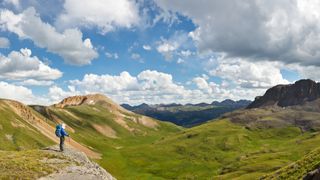
Backpacking is one of the most immersive ways to commune with nature, offering you the gratifying experience of setting off from civilization and venturing into the wilderness for a night or longer. With overnight trips you can take in more than you might on a day hike and you’ll often have swaths of nature all to yourself. The best backpacking trips in Colorado range in length from a few miles to epic treks that guide you through untouched alpine landscapes.
The trails in Colorado are certainly some of the best, but they can also be busy. However, you usually find that only the first couple of miles of any trail are clogged up before the crowds thin out. It’s worth venturing a little further to lose the crowds and to see some of the gems that aren’t easily reachable on a day hike, and one of the best ways to do this is to turn your hike into an overnight trip. In this article, we take a look at some of the best backpacking trips in Colorado to whet your whistle for some overnight adventure in the backcountry.
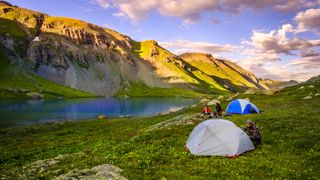
You’ll want to take a look at our articles on different types of backpacking and how to plan a backpacking trip before you set off. Colorado is blessed with lots of dry weather so it’s a great place to dip your toe into backpacking, though be prepared with a good 3-season sleeping bag because overnights in the high country are always cold. For all Colorado hiking you’ll of course want to have a good pair of boots – though the trails in this state are well-maintained, they get rocky up above the treeline which is where many of these trips take you.

Best backpacking trip near Denver: Crater Lakes
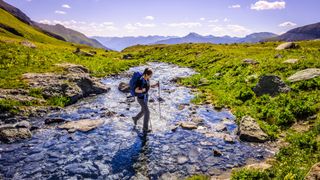
Distance: 6.8 miles Difficulty: Challenging
It might be Colorado’s urban center, but you don’t have to travel far from Denver to reach some impressive heights. Crater Lakes are three high alpine lakes in the James Peak Wilderness that feature waterfalls and wildflowers along the way. Crater Lakes is definitely short enough to be done as a day hike, but add a heavy pack and it will make for a satisfying overnight trip.
The trailhead is near Black Hawk, about an hour’s drive from Denver. From Black Hawk, travel north Highway 119 to Rollinsville. Turn west onto Gilpin County Road 16 and continue eight miles to the Moffat Tunnel, and park at the East Portal Trailhead.
Follow the South Boulder Creek trail for 1.2 miles before turning right at the junction onto the Crater Lakes Trail. This takes you through a wide forested valley then onto a narrow strip of land between the two beautiful main lakes. The third lake is found via the steep climb to the west of the lakes.
Advnture Newsletter
All the latest inspiration, tips and guides to help you plan your next Advnture!
Best backpacking trip near Boulder: Caribou Lake
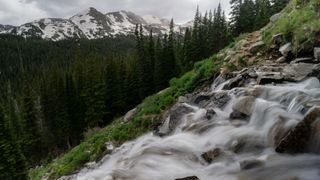
Distance: 9.3 miles Difficulty: Challenging
You’re certainly spoilt for choice in the Boulder area, which boasts access to a variety of wilderness areas from Chautaqua Park in the city limits to nearby Rocky Mountain National Park. Our favorite is beautiful Caribou Lake via the Arapahoe Trail, which boasts a high alpine climb to the Continental Divide followed by a descent for your overnight stay in the attractive bowl forming Caribou Lake.
This trail is accessed from the Fourth of July Trailhead in the Indian Peaks Wilderness near Nederland, about an hour from Boulder. From Nederland, go south on Highway 72 for 0.5 miles to County Road 130 and make a right. Go through the town of Eldora, just past which it becomes a dirt road. Continue on the dirt road another 4.8 miles and take the right fork at the Buckingham Campground to park.
Begin on the North Fork of Middle Boulder Creek trail which takes you up above treeline to the Continental Divide via expanses of wildflowers, steep waterfalls, glacier-fed streams and the historic Fourth of July Mine. After you reach the Divide, there’s a steep switchback descent down to the lake. Be aware that in the morning, you’ll have another steep climb to get back out.
Best backpacking trip in Rocky Mountain National Park: Tonahutu Creek Loop Trail
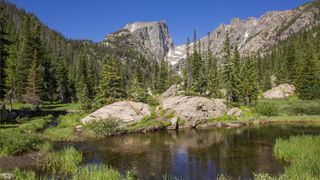
Distance: 25 miles Difficulty: Moderate
Within Rocky Mountain National Park ’s 355 miles of hiking trails, the Tonahutu Creek Loop Trail takes in most of the fabulous North Inlet Trail as well as the Continental Divide and takes you across the rugged alpine tundra of the high country.
Park at the North Inlet trailhead and head north on the Tonahutu Trail. This trail takes you across tundra topped flats, up to Ptarmigan Point on the Continental Divide and back down to Hallett Creek. There’s even a side option to detour up Flattop Mountain and enjoy the view down to sparkling Emerald Lake. This route is dotted with campsites along the way so you can take several nights to enjoy the journey.
Best backpacking trip near Vail: Gore Lake
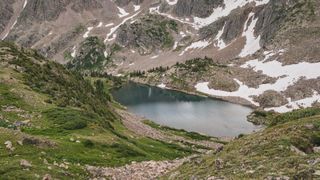
Distance : 12.1 miles Difficulty : Difficult
If you’re in Vail, there’s nothing quite like hanging your hat in the dramatic bowl of Gore Lake for the night and waking up to see the sun rise over the Gore Range. The hike to Gore Lake makes for a pretty serious day hike, but it’s a good challenge for an overnight trip.
Take the free bus from town or park at the trailhead on Vail Pass - 10 Mile road. Gore Lake shares a trailhead with Deluge Lake, but both trails are well signposted.
The trail begins with almost a mile of strenuous climbing and has many more steep sections as you wind your way up the valley. You’ll be treated to all the high alpine features of cool forests and alpine meadows, but one unusual feature of this hike is a set of two graves about four miles in. The graves are of the Recen brothers, two Swedish immigrants who came to the area to mine for precious metals in the late 1800s and had a cabin nearby. Keep going to finally arrive at this idyllic alpine lake nestled in a granite bowl, a gorgeous spot to camp.
Best backpacking trip near Leadville: The Colorado Trail Section 10
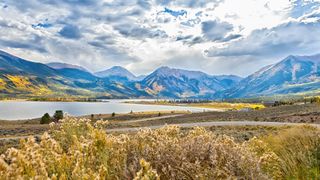
Distance : 12.4 miles Difficulty : Difficult
The Colorado Trail is a 567 mile trail stretching from Denver to Durango and section 10 takes you through the Leadville area from the Timberline Pass trailhead to the Mount Massive trailhead over 12 miles with views of some of the highest peaks in the state.
From Leadville, follow the signs for Turquoise Lake and park at the Timberline Lake trailhead at the western end of the lake.
This wooded trail takes you along the base of Mount Massive, the state’s second highest peak. The trail begins where The Colorado Trail and Continental Divide Trail overlap and takes you into the Mount Massive Wilderness via a moderate climb then levels out along the contours of Bald Eagle Mountain. There is good camping about five miles in at Twin Mounds saddle and again a little over six miles in at Rock Creek. The trail then climbs steadily to the intersection with Highline Trail before descending down to the Mount Massive trailhead. For a longer trip you could camp here and tackle Mount Massive the next day.
Best backpacking trip near Breckenridge: Spruce Creek Trail to Mohawk Lakes
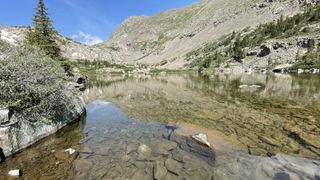
Distance : 8.4 miles Difficulty : Difficult
Spruce Creek Trail to Mohawk Lakes offers some of the best views of Colorado’s high country with lots of great backcountry camping spots along the way.
The Spruce Creek trailhead is less than five miles from Breckenridge. Just follow Highway 9 south then take a right onto Spruce Creek Road.
Follow the creek for about a mile and a half then join the Mohawk Lakes trail at the junction. After a couple more miles you’ll reach lovely Mayflower Lakes. Camp here or continue on up the steep climb to Lower Mohawk Lake passing Continental Falls on the way. There are several more stunning alpine lakes past Lower Mohawk so pitch your tent and go and explore them if there’s time before sunset.
Best backpacking trip near Aspen: Aspen to Crested Butte
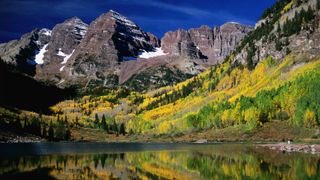
Distance : 11 miles Difficulty : Difficult
The drive from Aspen to Crested Butte is 100 miles, but go on foot and it’s 11 glorious miles over West Maroon Pass. This unforgettable trip takes you through aspen groves and wildflower meadows and treats you to some of the country’s most photographed mountain vistas.
To begin this hike from Aspen, park at Maroon Lake about ten miles south of town.
From spectacular Maroon Lake, hike through the forest to Crater Lake and pass the base of the iconic Maroon Bells. There’s a steep and strenuous climb up Maroon Creek to West Maroon Pass at 12,490ft of elevation – rest here for incredible views – then a steep descent down into more wildflower fields and old mining cabins as you follow Crystal River through the forest to Crested Butte. You can camp here and return on foot the way you came, or book a shuttle to take you back to Aspen. Needless to say, you can do this trip in either direction.
Best backpacking trip near Telluride: Blue Lakes Trail
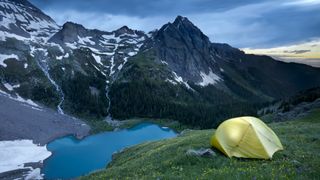
Distance : 8.6 miles Difficulty : Difficult
The San Juan and San Miguel Mountain ranges surrounding Telluride are quite possibly the most picturesque in the state. The Blue Lakes trail takes you to a turquoise lake via Mount Sneffels wilderness, cascades and wildflowers galore.
Blue Creek trailhead is very close to town as the crow flies, but since it’s on the other side of Mount Sneffels it requires a little over an hour of driving. Take Highway 62 towards Ridgewary and turn onto Dallas Creek Road then drive 9 miles south to the trailhead.
The hike takes you up the Dallas Creek drainage with spectacular mountain views all the way. You will pass an incredible waterfall before spending the night next to the turquoise waters of Blue Lake.

Julia Clarke is a staff writer for Advnture.com and the author of the book Restorative Yoga for Beginners . She loves to explore mountains on foot, bike, skis and belay and then recover on the the yoga mat. Julia graduated with a degree in journalism in 2004 and spent eight years working as a radio presenter in Kansas City, Vermont, Boston and New York City before discovering the joys of the Rocky Mountains. She then detoured west to Colorado and enjoyed 11 years teaching yoga in Vail before returning to her hometown of Glasgow, Scotland in 2020 to focus on family and writing.
Casio unveils new limited edition G-Shock watch inspired by rainbow-colored diffuse nebulae
"It's not about you, don’t be selfish" – Honolulu mayor dismayed after hundreds flock to Haiku Stairs before removal
Coros launches Vertix 2S watch, with its most accurate outdoor climbing mode ever
Most Popular
- 2 Casio unveils new limited edition G-Shock watch inspired by rainbow-colored diffuse nebulae
- 3 "It's not about you, don’t be selfish" – Honolulu mayor dismayed after hundreds flock to Haiku Stairs before removal
- 4 Director Danny Boyle’s 28 Years Later seeking serious runners and cyclists as extras
- 5 What is hiker's rash? And is it serious?

15+ Epic Backpacking Trips in Colorado for Overnight Hikes
- By jesse.sumrak
Backpacking in Chicago Basin is a dream come true. Imagine…
- Massive peaks
- Rushing rivers
- Fields of wildflowers
- Alpine lakes
Check, check, check—Chicago Basin has it all.
Accessing Chicago Basin requires a journey that begins with the historic Durango & Silverton Narrow Gauge Railroad . Starting from Durango, Colorado, the scenic train ride takes you deep into the wilderness, passing through breathtaking landscapes of towering peaks and cascading rivers. The train drops off hikers at the Needleton stop, the gateway to Chicago Basin.
From Needleton, the real adventure begins with a hike along the Animas River. The trail starts pretty mellow before climbing up into the beautiful Chicago Basin.
Chicago Basin is famous for being home to not one but four stunning fourteeners (mountains with peaks over 14,000 feet):
- Sunlight Peak (14,059 ft)
- Windom Peak (14,082 ft)
- Mount Eolus (14,083 ft)
- North Eolus (14,039 ft)
Each peak presents its own set of challenges and rewards for hikers and mountaineers. Windom is an easy(ish) Class 2 14’er, while Sunlight’s crux is considered the most difficult of all the Colorado fourteeners.
Experienced climbers can attempt the “Chicago Basin Grand Slam” by conquering all four summits in one day. But it’s a beast .
Camping options abound in Chicago Basin, and this is one of the few areas in the Weminuche Wilderness where camping is allowed above treeline. There are several established campsites, but it’s essential to secure a train ticket well in advance due to the high number of visitors.
2. Lost Creek Wilderness Loop
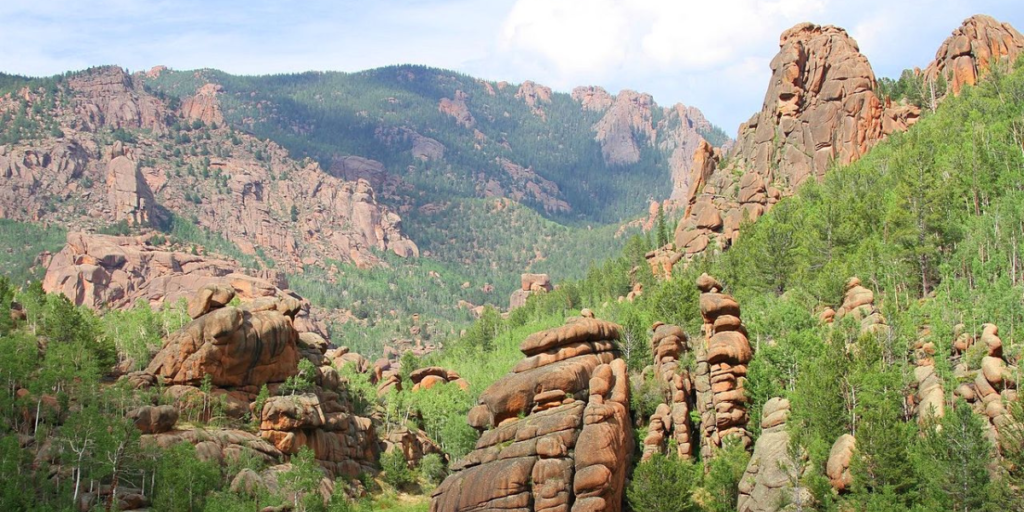
The Lost Creek Wilderness Loop offers a challenging and diverse backpacking experience in the heart of Colorado’s Lost Creek Wilderness. The loop is a picturesque trail system that winds through a mesmerizing landscape of unique rock formations, lush forests, meadows adorned with wildflowers, and babbling creeks.
It’s called “Lost Creek” because the creek wanders under boulder fields and rocks, making it difficult to keep track of as it winds through the wilderness.
The Lost Creek Wilderness Loop can be accessed from various trailheads, but the Goose Creek Trailhead is one of the most popular starting points. Located approximately 60 miles southwest of Denver, reaching the trailhead involves a scenic drive through the foothills.
The loop comprises several interconnected trails, providing backpackers options for different trip lengths and difficulty levels. The most common route covers approximately 25 to 30 miles, but depending on your preferences, more extended or shorter variations are possible.
One of the highlights of this wilderness area is the exceptional rock formations known as the “Lost Creek Wilderness granite domes.” These massive granite rocks, sculpted by millennia of erosion, create a surreal landscape that seems straight out of a fiction novel. The imaginative names of some of these formations, such as “The Sphinx” and “The Castle,” add to the charm.
You’ll encounter several creek crossings, adding an element of adventure to the journey. Yes, you will get wet. Some crossings may require careful navigation, especially during the spring snowmelt or after heavy rains. Take your time, and scout for safer opportunities.
On the bright side, it’s never hard to find water, so you can keep your pack light(er).
3. Colorado Trail
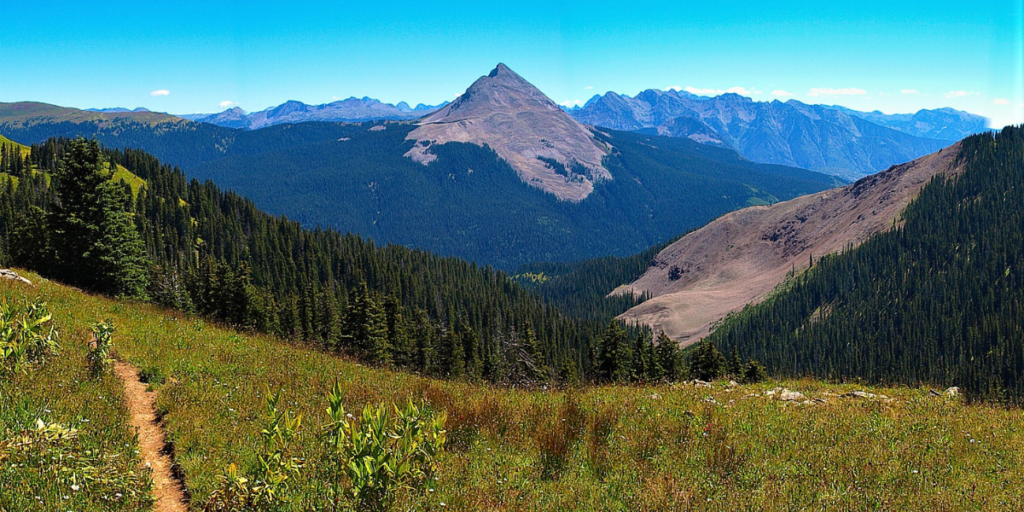
The Colorado Trail is a legendary long-distance trail that spans over 500 miles, winding its way from the outskirts of Denver straight through the heart of the Rockies to Durango. If you want to see the best of what Colorado has to offer, this is the backpacking trail for you.
The trail is divided into 28 segments, each varying in length and difficulty. Ranging from relatively easy sections appropriate for day hikers to challenging portions for experienced backpackers, the Colorado Trail caters to adventurers of all levels.
Hikers on the Colorado Trail will experience dramatic elevation changes, with several high mountain passes exceeding 12,000 feet. This means weather conditions can change rapidly, and it’s crucial to be prepared for sudden temperature drops, afternoon thunderstorms, and even snow in higher elevations (even during the summer).
Water sources can be scarce in some segments, especially during dry seasons. Do your research to plan ahead, and pick up a copy of the Colorado Trail Guidebook . It’s regularly updated and covers everything you need to know to survive your trip.
The trail offers numerous opportunities for backcountry camping, but hikers must follow Leave No Trace principles and abide by established regulations for camping in designated areas. Some segments may require permits, so it’s crucial to research and plan ahead.
4. Maroon Bells Wilderness
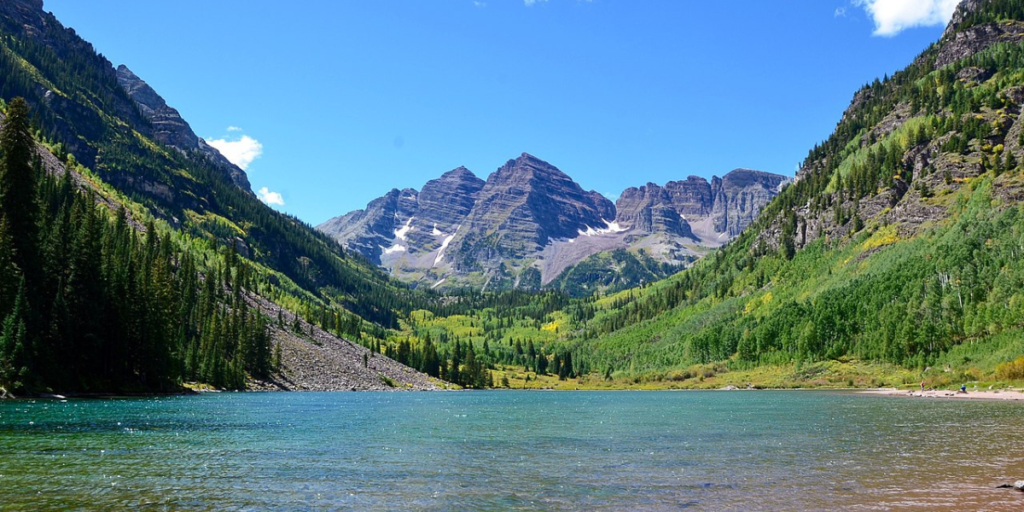
The Maroon Bells Wilderness offers a wide range of hiking trails catering to different skill levels and interests. From short day hikes to multi-day backpacking trips, there’s something for everyone.
Popular routes include the Maroon-Snowmass Trail, West Maroon Trail, and the Four Pass Loop, a challenging but incredibly rewarding 27-mile circuit that takes you over four high mountain passes.
However, everyone wants to go backpacking in the Maroon Bells Wilderness, so you’ll need to get in line and fight to earn yourself a permit. Some adventures want to backpack to beautiful alpine lakes, others want to do the Four Pass Loop, and many want to bag the area’s iconic (and scary) 14-thousand-foot peaks.
5. Wild Basin, Rocky Mountain National Park
Wild Basin is the lesser-visited area of Rocky Mountain National Park. It can get busy, but it’s far less crowded than Bear Lake Road and the northern areas of the park—yet, it has so much to offer. However, you have to work a bit more for everything.
There isn’t a shuttle to drop you off at every lake and waterfall.
Located on the southeastern side of Rocky Mountain National Park, Wild Basin is accessible through a separate entrance station. From the trailhead, visitors can choose from a variety of hiking trails, each offering its own unique charm and adventure.
Wild Basin is an excellent place for backcountry camping, with several established campsites available for anyone seeking a more immersive wilderness experience. Permits are required for backcountry camping and can be obtained through the Rocky Mountain National Park’s backcountry office.
I’ve backpacked to Thunder Lake, and it’s a relatively gradual trail that meanders through most of the basin. Thunder Lake is a gem, and we had the whole lake to ourselves when we visited. It serves as a great base camp for hiking (or climbing) Mt. Alice and Chiefs Head Peak. We also threw in Tanima Peak, just for fun.
6. Ice Lake Basin
Backpacking at Ice Lake Basin is a true alpine adventure, offering hikers a glimpse into one of Colorado’s most strikingly beautiful and pristine wilderness areas. Situated near the town of Silverton in the San Juan Mountains, Ice Lake Basin is renowned for its awe-inspiring turquoise-colored lakes, rugged mountain peaks, and breathtaking wildflower meadows.
The trailhead to Ice Lake Basin is accessible from the South Mineral Creek area, just a short drive from Silverton. The journey to the basin begins with a moderate ascent through a dense forest, gradually revealing glimpses of the surrounding peaks and valleys.
Eventually, you’ll make your way up to Ice Lake, a beautiful blue lake with rugged, craggy peaks surrounding it. From here, you can find a camp spot, and you can also go climb Class 2 Vermillion Peak (one of Colorado’s 100 tallest peaks). You can also take a short adventure around the mountain’s corner to Island Lake, a smaller lake with a little island in the middle.
The San Juan Mountains Association (SJMA) recommends camping in the Lower Ice Lake Basin for the following reasons:
- Protecting Fragile Alpine Vegetation: Exercise caution when setting up tents in the Upper Basin, as the delicate alpine vegetation can be easily damaged.
- Challenges of Cat Holes in Alpine Tundra: Digging a cat hole for waste disposal becomes problematic in the alpine tundra, and privacy options are limited.
- Discouraging Fires in the Upper Basin: Fires are highly discouraged in the Upper Basin due to several reasons. Firstly, wood is scarce, necessitating the need to carry it in. Additionally, open fire scars are unsightly and can take years for revegetation.
- Exposure to Elements in the Upper Basin: The Upper Basin lacks tree cover for protection, leaving backpackers exposed to storms and strong winds.
7. Continental Divide Trail
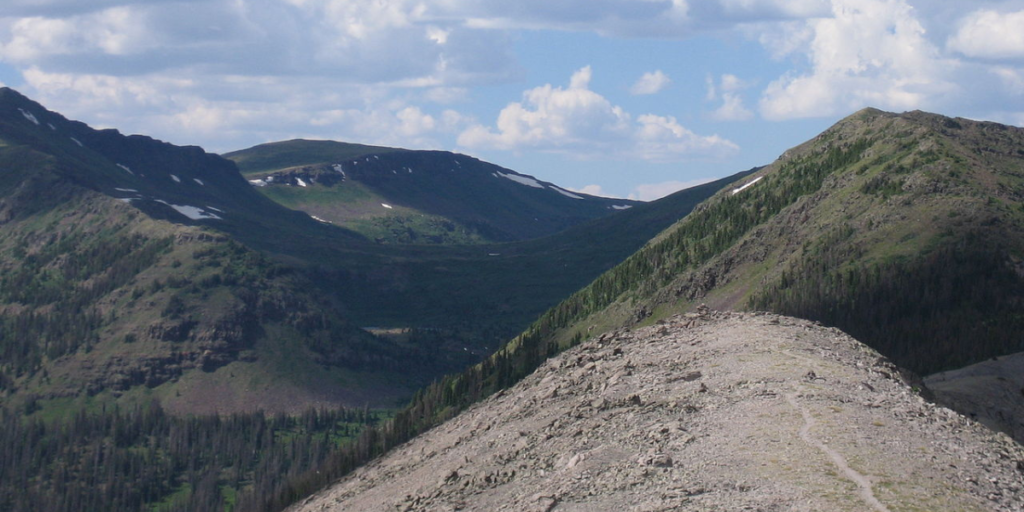
Backpacking the Continental Divide Trail (CDT) is a true backcountry odyssey that takes adventurous hikers on an epic journey along the spine of the Rocky Mountains.
Stretching over 3,100 miles from Mexico to Canada, the CDT offers an unparalleled wilderness experience, immersing backpackers in diverse landscapes, rugged terrains, and some of the most remote and unspoiled areas in the United States.
Colorado contains a large portion of the CDT, offering unique opportunities to camp in fantastic backcountry settings. However, be aware of each area’s specific regulations and permit requirements. Due to the trail’s remote nature, self-reliance and Leave No Trace principles are essential to minimize your impact on the environment.
8. Conundrum Hot Springs
Backpacking to Conundrum Hot Springs is a rewarding journey with rushing creeks, views of rugged mountain ridges, and (of course) natural hot springs.
The trailhead to Conundrum Hot Springs begins at the Conundrum Creek Trailhead, located near Aspen, Colorado. The trail winds through dense forests and wildflower-laden meadows.
After a challenging 8.5-mile hike, you’ll arrive at Conundrum Hot Springs. Here, you’ll find two natural hot spring pools. You get to soak in the warm, mineral-rich waters while gazing at the epic alpine scenery—it really doesn’t get better than this.
You might even feel refreshed on your descent hike back to Aspen…maybe.
9. Lone Eagle Peak, Indian Peaks Wilderness

The journey to Lone Eagle Peak typically begins at the Monarch Lake Trailhead near Granby, Colorado. The trail winds through dense forests and opens up to reveal stunning vistas of the surrounding peaks and valleys.
Stop by Mirror Lake and Crater Lake for awesome views of Lone Eagle Peak reflecting in the water. This majestic granite spire rises dramatically from the alpine landscape—it looks like something out of a movie.
The Indian Peaks Wilderness is known for its remoteness, providing a sense of isolation and solitude that connects hikers with the raw beauty of nature. While the trail is popular among adventurers, the vastness of the wilderness ensures that you can find solitude, too.
Camping opportunities abound in the Indian Peaks Wilderness, offering backpackers the chance to spend the night beneath the starlit skies. Obtain the necessary permits for overnight stays and adhere to Leave No Trace principles to protect the fragile alpine environment.
10. Crested Butte to Aspen
This multi-day trek offers backpackers a chance to immerse themselves in the untamed beauty of the Maroon Bells-Snowmass Wilderness and the Elk Mountains while connecting two mountain towns.
The adventure begins in the charming town of Crested Butte, where the West Maroon Pass trailhead awaits. The most popular route is the West Maroon Trail, which takes hikers through a lush valley adorned with wildflowers and towering peaks. Another option is the East Maroon Trail, providing a slightly different but equally scenic route.
Plan transportation logistics in advance, as the trailhead and endpoint are in different locations. Shuttles and private transportation services are available between Crested Butte and Aspen, letting you enjoy a no-stress point-to-point journey.
11. South Colony Lakes
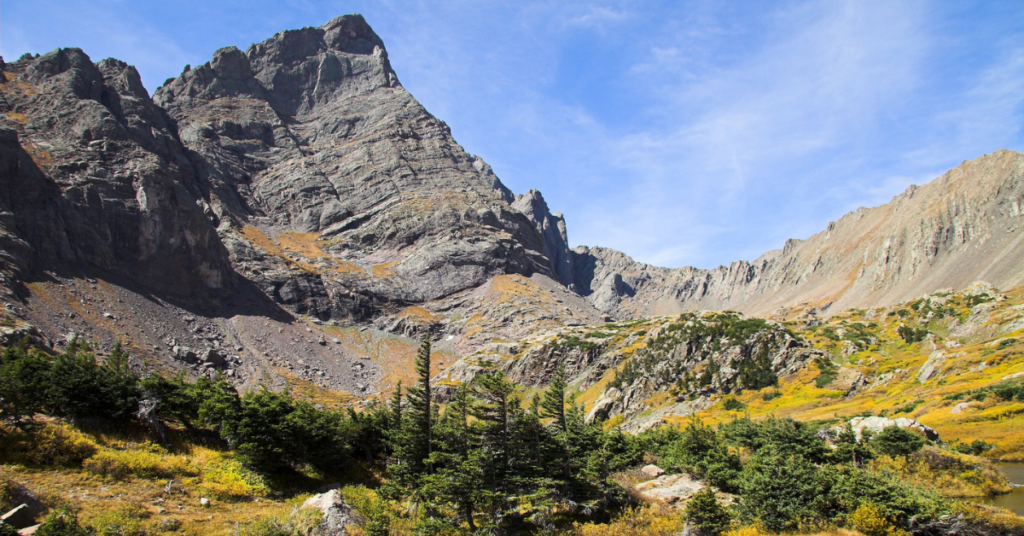
The trailhead to South Colony Lakes is accessible from the South Colony Lakes Road near Westcliffe, Colorado. The initial part of the trail takes hikers through dense forests, gradually opening up to reveal spectacular views of the surrounding mountains.
South Colony Lakes is the gateway to two of Colorado’s most challenging and iconic 14ers: Crestone Needle and Crestone Peak. You can also bag Humboldt (another 14er) or do a little bit more adventuring to get Columbia Point (a centennial).
You’ll find plenty of backcountry campsites close to Lower South Colony Lakes. You can camp up at the Upper South Colony Lakes, but the area is above treeline and exposed to the elements.
12. Zirkel Circle
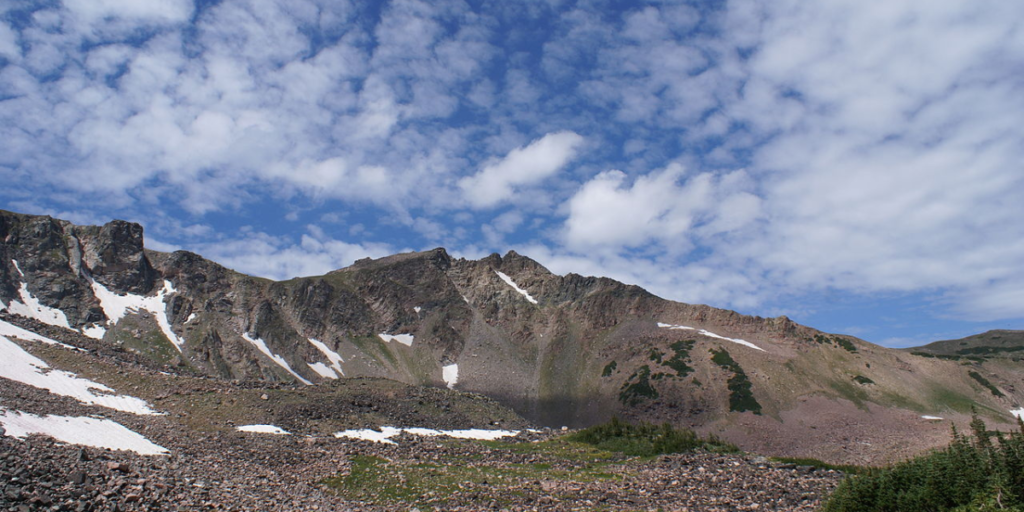
This iconic loop trail offers backpackers the chance to experience the raw beauty of the Rocky Mountains, with alpine lakes, rugged peaks, and diverse landscapes that showcase the essence of Colorado’s remote wilderness.
The Zirkel Circle typically starts from the Slavonia Trailhead, near the town of Steamboat Springs. The loop covers approximately 10 miles, passing through some of the most picturesque areas of the Zirkel Wilderness. You’ll get amazing views of Mount Zirkel and pass by Gilpin Lake and Gold Creek Lake on your loop through the wilderness.
13. Rainbow Trail
The Rainbow Trail stretches approximately 100 miles as it takes hikers from Salida all the way to the Sangre de Cristo mountain range. The Rainbow Trail can be accessed from various trailheads, but the most popular starting point is near the town of Salida, Colorado. The trail is divided into several sections, each offering its own unique scenery and challenges.
Backpackers can camp in designated areas along the trail or utilize backcountry shelters in some sections. Backpacking the entire length of the Rainbow Trail requires thorough planning and organization. Arrange transportation and resupplies accordingly to ensure a smooth and successful journey.
Embarking on a backpacking expedition along the Rainbow Trail offers an unforgettable experience in the heart of the Colorado wilderness. The trail’s diverse landscapes, mountain vistas, and opportunities for solitude make it a genuine adventure for backpackers.
14. Colorado National Monument Traverse
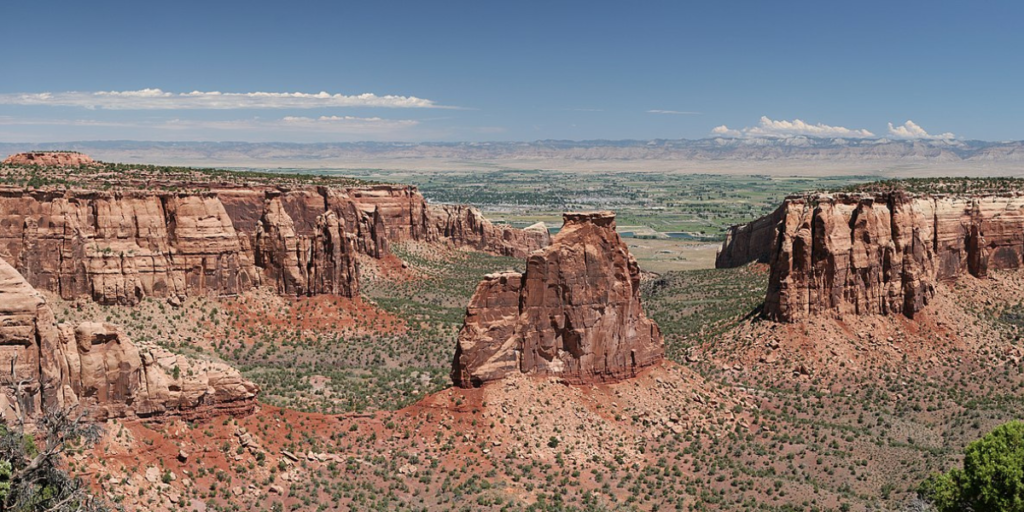
The Colorado National Monument Traverse starts at the park’s east entrance, near the town of Grand Junction. Hikers will follow a combination of established trails and off-trail routes to traverse the entire length of the monument.
As you venture through the monument, you’ll encounter a super-cool display of geology, with massive red sandstone formations, steep canyons, and striking rock spires. The terrain can be rugged, and hikers should be prepared for some scrambling and challenging sections. Carry a detailed map, a GPS device, and a compass to navigate effectively.
The monument has several designated backcountry camping areas, allowing backpackers to spend the night amidst the canyons. The desert environment of the Colorado National Monument can be harsh, with hot temperatures during the day and cooler temperatures at night. Be prepared for sudden weather changes, carry sufficient water, and protect yourself from the sun.
15. Sand Ramp Trail, Great Sand Dunes National Park
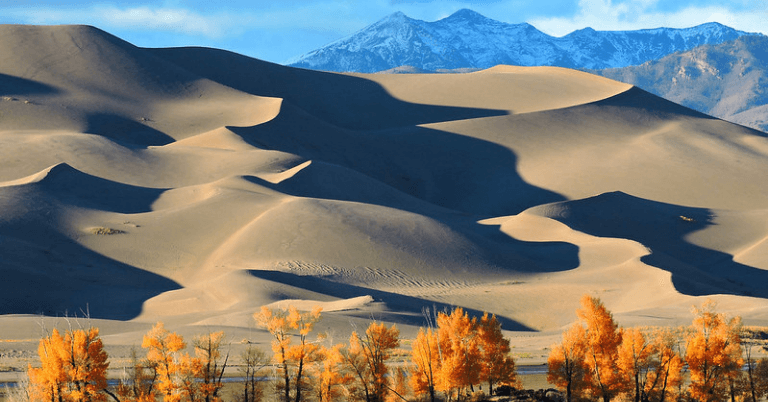
Backpacking the Sand Ramp Trail in Great Sand Dunes National Park is an adventure that takes backpackers through the tallest sand dunes in North America. This lesser-known trail takes hikers through diverse landscapes, from the sandy dunes to the rugged mountains—you won’t find that in many other places on the planet.
The Sand Ramp Trail begins at the Mosca Pass Trailhead on the east side of Great Sand Dunes National Park. While the trail mostly avoids dunes, prepare to get sandy. The Sand Ramp Trail rewards hikers with stunning vistas that provide panoramic views of the vast dune fields, the towering Sangre de Cristo Mountains, and the sweeping San Luis Valley.
Find Something Shorter Than a Backpacking Adventure
Looking for something more tame than a backpacking trip? Don’t worry—Colorado has that, too. Check out our guide to the Best Places to Camp in Colorado for a mix of glamping, yurts, campgrounds, and other backcountry adventures.
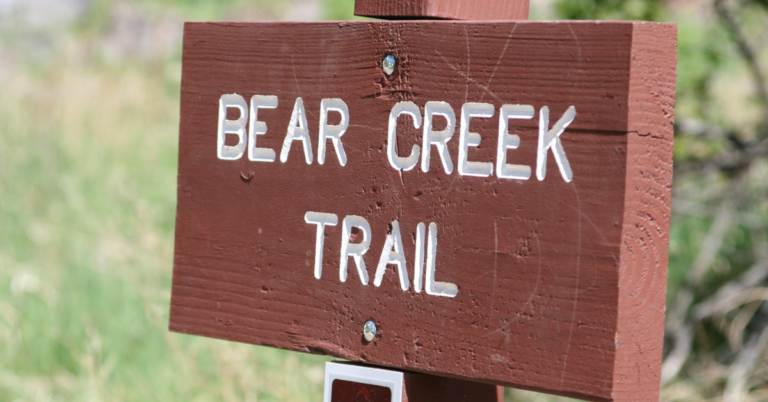
Learn everything you need to know about Lair o’ the Bear Park and the surrounding hiking and mountain biking trails.
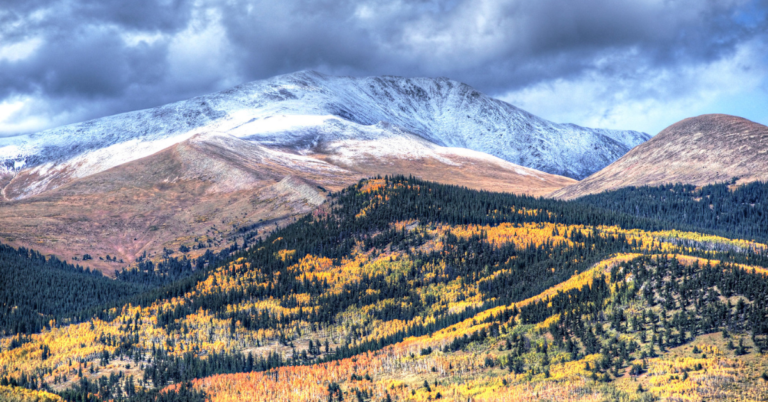
Discover Kenosha Pass with a comprehensive guide that covers hiking trails, camping, weather, and other considerations.
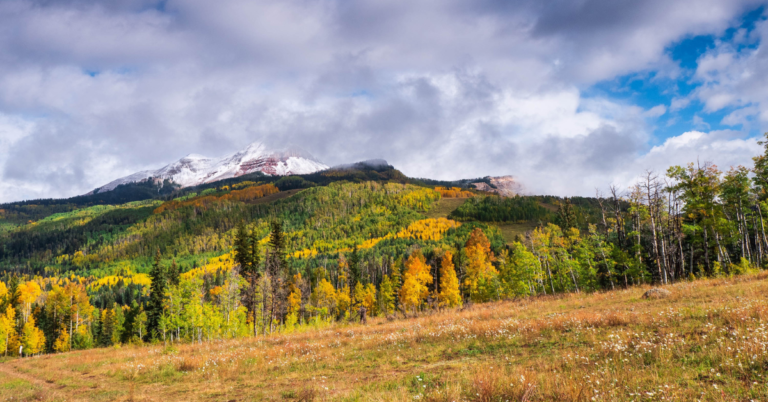
Discover the best hikes in Durango, from serene trails to challenging ascents. Experience breathtaking views and unforgettable adventures.
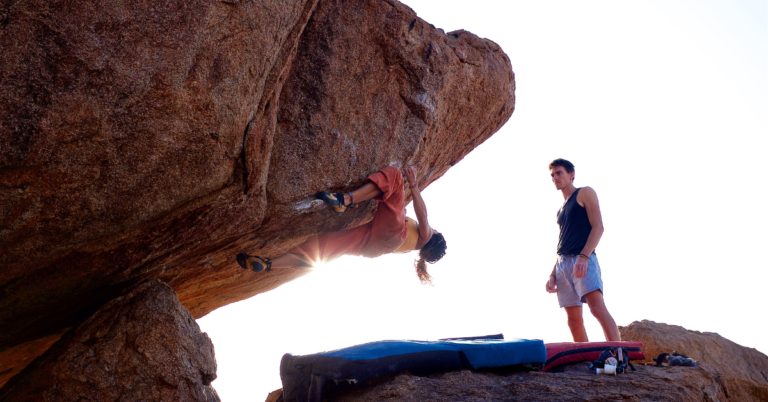
Discover the best bouldering in Colorado! Explore iconic venues and thrilling problems across the Centennial State’s rocky wonders.
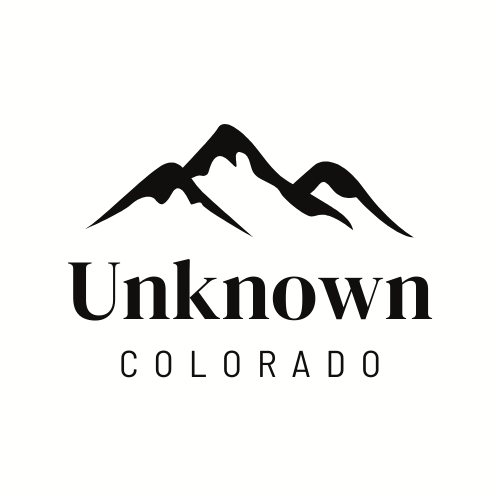
Join the email list!
Copyright © 2022 Unknown Colorado
- Puerto Rico
- Running Destinations
- Tour du Mont Blanc
- South Carolina
- Virgin Islands
- Backpacking Treks
- Advice from a Nurse
- Baby & Toddler Travel
Seriously, The Best Backpacking Trips in Colorado
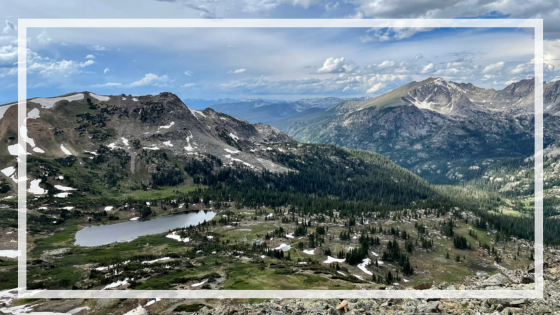
Writing a post about the best backpacking trips in Colorado felt overwhelming. I live here and have done some. But there are SO MANY options for backpacking trips in this incredible state. Mountains and rivers and National Parks and alpine lakes galore…
Where to even begin for this list?
I have done some backpacking trips in Colorado, but I know there are PLENTY of epic trails I have not hiked yet. So, selfishly, this list is for me too 🙂
I’ve done a ridiculous amount of research for this post. I’ve read reddit threads, I’ve researched other bloggers’ posts about backpacking trips in Colorado, I’ve read other “best” lists, and I’ve looked at photos, ratings, and descriptions on Alltrails.
I will link to my blog for the hikes I’ve already done. But for the ones I haven’t backpacked yet, I will scour the internet and link to the best resources.
These are the 17 best backpacking trips in Colorado.
Let’s go backpacking!
Jump to Best Backpacking Trips in Colorado:
Backpacking colorado tips before you go, about this best backpacking trips in colorado list, great sand dunes national park, hessie trail to lost lake *the only easy hike*, south boulder creek trail to crater lakes trail, island lake and ice lake via ice lakes trail, caribou lake via arapaho pass, spruce creek trail to mohawk lakes, mount zirkel loop trail, venable–comanche trail loop, blue lakes trail to 14er mount sneffels, chicago basin, cascade creek trail to mirror lake and crater lake, abyss lake trail to abyss lake, conundrum hot springs, rawah lakes loop, pawnee-buchanan loop/northern indian peaks loop.
- Maroon Bells – Four Pass Loop
The Colorado Trail
- First Backpacking Trip: Read all my backpacking tips for beginners before heading out on the trail.
- Permits : You sometimes need to book permits far in advance for the popular backpacking routes. You may also need to book parking, depending on where you go. Make sure you do this properly.
- Weather : Colorado’s weather can be crazy. Check it ahead of time and potentially cancel/reschedule your trip if it looks like the weather could make it dangerous.
- Start Early : The Rocky Mountains experience afternoon storms. If you’re hiking up mountain passes, start early so you’re down the mountain before a storm hits.
- Bears : If you’re hiking in bear country, be prepared. Some locations require bear hangs or bear canisters. Buy or rent these ahead of time and follow the rules.
- Navigational Safety : Bring a map and/or compass/navigation device on your trek. Ensure that you won’t get lost.
- Altitude : Colorado is typically at 5000 ft. If you travel into the mountains to backpack, try to acclimate for a couple days prior to a strenuous hike. If you’re from sea level, spend a couple days at 5000ft first. And be aware of signs of altitude sickness; if you think you have it, make a descent into lesser elevation.
- Water : Bring enough water or check water sources ahead of time and bring a filtration system.
- Leave No Trace : Always follow these principles. Respect nature.
- Campfires : Wildfires can really ruin areas of Colorado, so some backcountry sites do not allow campfires. Please respect that.
- Pack Everything You’ll Need: Keep a backpacking packing list of what you need for every trek, and use it each time.
- Use AllTrails : Check trail conditions before your trek to see if the routes are passable.
- Enjoy it . Be grateful to backpack in such an epic place. Have fun and enjoy the solitude.
The average time to hike will be higher if you’re carrying a heavy pack.
If you click the location town link, it will take you to google maps with directions to the trailhead, as listed in Alltrails.
I am going to link to the Alltrails hike info and the best blogger resource I can find.
Every one of these hikes is listed as “hard” or “difficult,” so I eliminated that from the hike details. Just assume they’re all somewhat difficult. I feel like elevation gain, which is listed, is the best indicator for difficulty.
Also, each trail’s prime time to hike is typically June through September/October. Check trail conditions if you’re going early or late in the season to see if snow will affect your route.
I’m only sharing photos from the hikes I’ve done — but if you’ve done one of these and want to send me an awesome photo, I’d be happy to share it here and link to your blog or photography!
Trail highlights are listed, but these hikes are on the list because they’re extraordinary . If you’re like ehhh but I want the hike to be really pretty and worth it, I got you. These are all stunning.
I’ve done the research, and these have all made the cut. I don’t want to waste my time with a boring trail in Colorado. There are too many good ones! And I promise I want to do ALL of these.
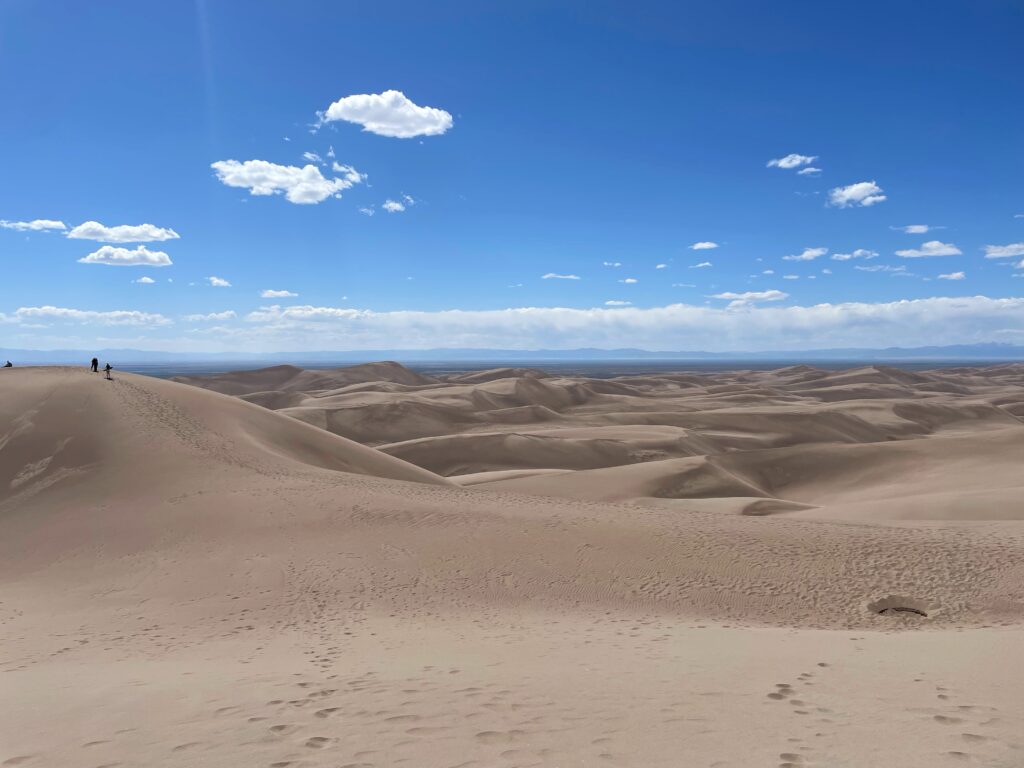
Great Sand Dunes National Park – Incredible
- Trail Distance: 3-ish miles total, out and back
- Elevation Gain: ?
- Average Time to Hike: Plan for it to take WAY longer than your normal hiking. Sand dunes take forever to walk up.
- Location: Great Sand Dunes National Park , 4 hours from Denver
- Highlights: Camping on the sand dunes. Open skies.
- How to Hike It Links: Info from the National Park’s website.
- Permits? Yes, you need a permit from recreation.gov . Blogger’s info .
- Trail Info: Hike past the first high ridge of dunes and camp among the sand dunes. “Otherwordly.” Bring lots of water.
- Trail Distance: 4 miles total, out and back
- Elevation Gain: 830 ft
- Average Time to Hike: 2 hours
- Location: Eldora , 1 hour 20 mins from Denver
- Highlights: Pretty lake, easy hike – good for a backpacking beginner!
- How to Hike It Links: Alltrails info. Blogger post .
- Permits? Nope
- Trail Info: There are 8 campsites near Lost Lake. Follow regulations . There is a free shuttle to the trailhead during busy season.
- Trail Distance: 6.8 miles total, out and back
- Elevation Gain: 1,853 ft
- Average Time to Hike: ?
- Location: Nederland , 1 hour 20 mins from Denver
- Highlights: Mountain views and alpine lakes
- How to Hike It Links: Alltrails info. Fellow blogger info – I couldn’t find any posts on camping here.
- Permits? Not Required
- Trail Info: 3 beautiful alpine lakes, not too far from Denver. It can be easy to lose the trail. US Forest Service info.
- Trail Distance: 7 miles
- Elevation Gain: 2,650 ft
- Average Time to Hike: 5 hours
- Location: Durango , 6.5 hours from Denver
- Highlights: Absolutely gorgeous lakes, aspen meadows, wildflowers
- How to Hike It Links: Alltrails link. Blogger’s link.
- Permits? None required.
- Trail Info: Water available; filter it. Popular hike, pack out waste!
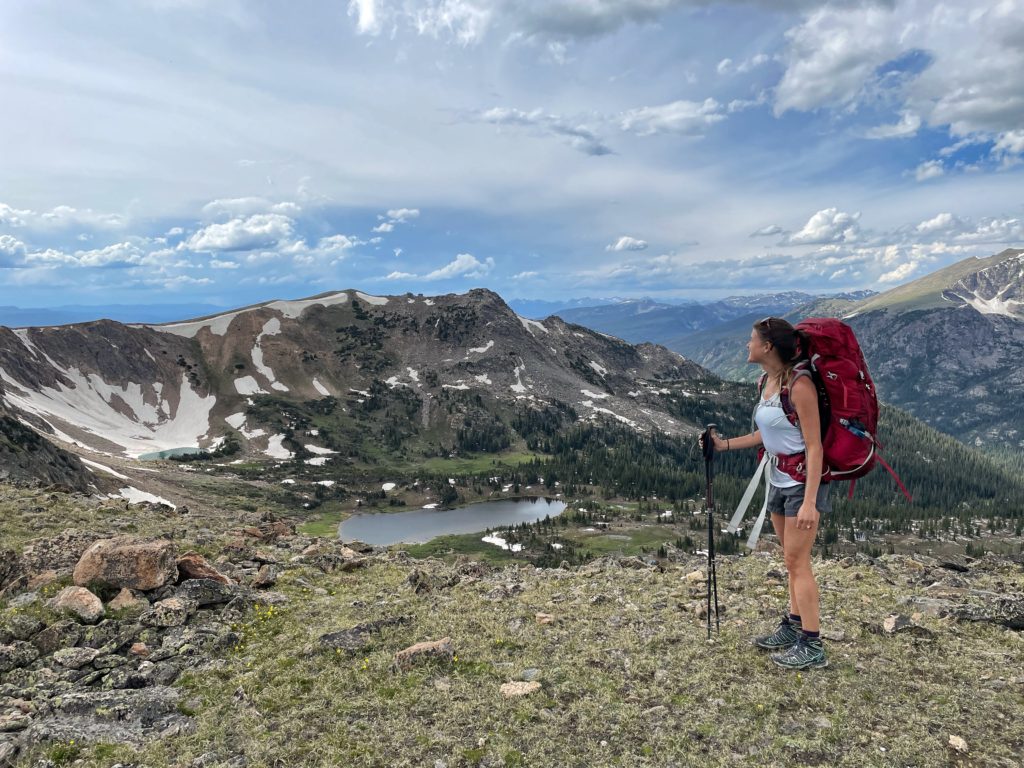
- Trail Distance: 9 miles total, out and back
- Elevation Gain: 2,601 ft
- Average Time to Hike: 5-ish hours
- Location: Nederland , 1.5 hrs from Denver
- Highlights: Beautiful alpine lake, wildflowers, mountain views.
- How to Hike It Links: Alltrails hike info. My blog post on this epic hike 🙂
- Permits? Yes, you need a permit to camp in Indian Peaks Wilderness. See my post to have a better chance of snagging a sought after permit.
- Trail Info: Quite a steep hike at times, gorgeous views at the top of a mountain pass, and campsites near the lake. Lake water available; filter it. Pack out your waste! And beware of mosquitoes.
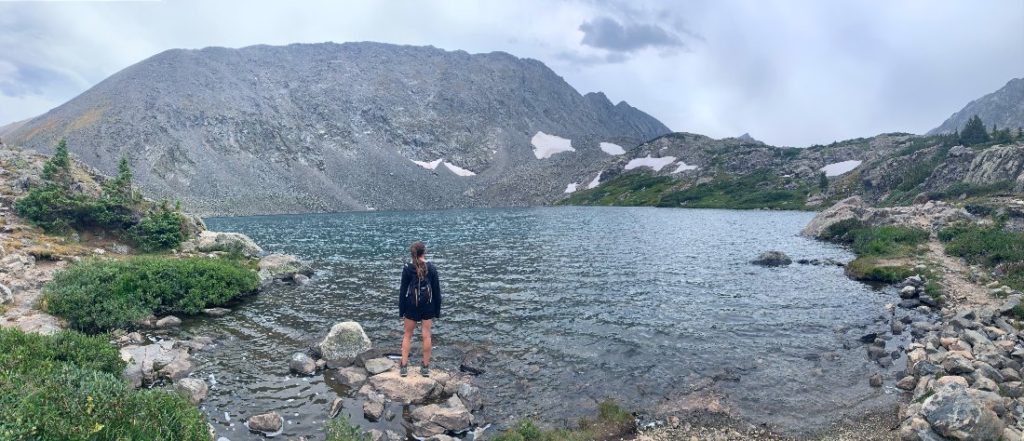
- Elevation Gain: 2,106 ft
- Location: Breckenridge , 1 hour 45 mins from Denver
- Highlights: Gorgeous alpine lakes, a waterfall
- How to Hike It Links: AllTrails Link. I did a day hike of this one .
- Permits? Nope, be conscious of where you camp.
- Trail Info: Great beginners backpacking trip.
- Trail Distance: 10.6 mile loop
- Elevation Gain: 2,444 ft
- Average Time to Hike: 6 hours
- Location: Clark , 4 hours from Denver
- Highlights: Alpine lakes, waterfalls, fall colors, wildflowers
- How to Hike It Links: Alltrails link. Blogger’s link .
- Permits? Nope!
- Trail Info: Counter-clockwise is the way to go. The views look incredible; it has a 4.9 rating on Alltrails.
- Trail Distance: 12.3 miles
- Elevation Gain: 3,884 ft
- Average Time to Hike: 7.5ish hrs
- Location: Westcliffe , 3 hours from Denver
- Highlights: Beautiful mountain views, alpine lakes
- How to Hike It Links: Alltrails Link. Fellow Blogger Link .
- Trail Info: Nice, pretty hike. Especially beautiful in the fall.
- Trail Distance: 13 miles total, out and back
- Elevation Gain: 5,501 ft
- Average Time to Hike: ?? hiking a 14er always takes way longer than you think
- Location: Ouray , 6 hours from Denver
- Highlights: Hike a 14er! Alpine lakes, wildflowers, incredible views
- How to Hike It Links: Alltrails info. Fellow outdoor travel blogger info .
- Permits? Not required as of now (2024)
- Trail Info: Class 3 scrambling. There are 3 lakes, and the lower one has camping by it.
- Trail Distance: 15-ish mile out and back.
- Elevation Gain: 4,3330 ft
- Average Time to Hike: 9 hours
- Difficulty: Hard
- Location: San Juan Mountains in Southwest Colorado, 6 hours and 45 mins from Denver
- Waterfalls, mountain peaks, rivers, and alpine lakes.
- You take the Durango & Silverton Narrow Gauge Railroad train to the start of this hiking area.
- It’s home to three 14ers: Mount Eolus (14,083′), Windom Peak (14,082′), and Sunlight Peak (14,059′) – head to this site for info on hiking them.
- How to Hike it Links: Alltrails summary. Fellow travel blogger experience.
- Permit Required? Nope. You fill out a paper registry with info about your hike, but there are no required permits or payment due to backpack here.
- Trail Info: Campsites are 5-6 miles in, you can spend the night(s) and summit the nearby 14ers, no campfires, pack out ALL waste. Review all San Juan National Forest Regulations before backpacking here.
Read Next: Backpack The Tour du Mont Blanc through Italy, Switzerland, and France.
- Trail Distance: 16 miles total, out and back
- Elevation Gain: 2,293 ft
- Average Time to Hike: 8-12 hours
- Location: Granby , 2 hours 20 mins from Denver
- Highlights: Waterfalls, alpine lake, wildflowers, aspen groves.
- How to Hike It Links: Alltrails link. Outbound link.
- Permit Required? Yes, from June 1-Sept 15 for overnights. Info here . And a parking fee for Arapaho National Recreation Area .
- Trail Info: Beautiful hike with 12 campsites. Follow Indian Peaks Wilderness Regulations . It’s a very busy trail. Lakes and streams for water; filter it.
- Trail Distance: 17 miles total, out and back
- Elevation Gain: 3,379 ft
- Average Time to Hike: 8.5 hrs
- Location: Grant , 1 hr 15 mins from Denver
- Highlights: Epic views of Mount Blue Sky wilderness, alpine lake.
- How to Hike It Links: Alltrails info. Fellow blogger info.
- Permits? Sort of… you do a free self-issued permit at the trailhead.
- Trail Info: You can camp at Helms Lake or Abyss Lake. Follow Wilderness Regulations . This trail looks especially beautiful in the fall.
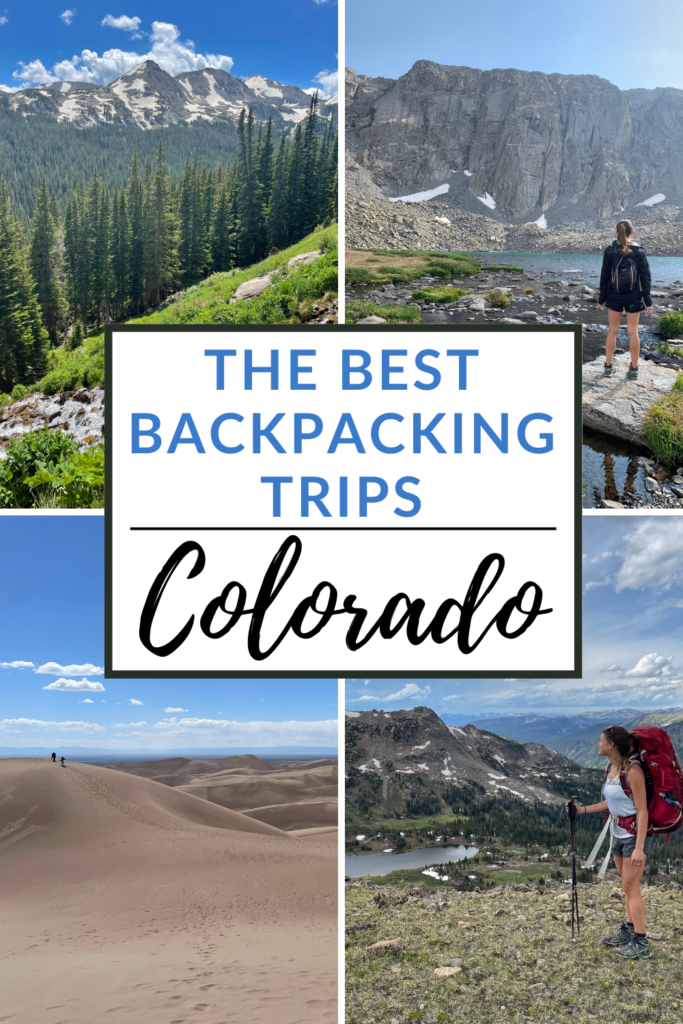
Pin The Best Backpacking Trips in Colorado for later!
- Elevation Gain: 2,800 ft
- Average Time to Hike: 8 hours
- Location: Aspen , 3.5 hours from Denver
- Highlights: Hot Springs! Wildflowers, mountain views
- How to Hike It Links: Alltrails link. Fellow blogger post .
- Permits? Required! Info here, and book at recreation.gov .
- Trail Info: Very popular trail – difficult to get a camping permit. Your feet will get wet while hiking. Camping by hot springs sounds so amazing.
- Trail Distance: 23.2 mile loop
- Elevation Gain: 4,041 ft
- Average Time to Hike: 11 hours
- Location: Read Feather Lakes , 4 hours from Denver
- Highlights: Alpine lakes, wildflowers, mountain views
- How to Hike It Links: Alltrails link. Fellow outdoor blogger’s post .
- Permits? No, as of 2024
- Trail Info: Can be muddy, bring an extra pair of shoes.
- Trail Distance: 26 mile loop
- Elevation Gain: 6,800 ft
- Average Time to Hike: 14.5 hours
- Location: Ward, 1.5 hours from Denver.
- Highlights: Absolutely beautiful scenery. 2 mountain passes, lakes, waterfalls.
- How to Hike It Links: Alltrails link. Fellow blogger info.
- Permits? Yes, for Indian Peaks Wilderness . You also need a Parking Permit .
- Trail Info: Go clockwise. Streams and lakes for water; filter it!
Maroon Bells – Four Pass Loop : The #1 Backpacking Trip in Colorado?
- Trail Distance: 27 mile loop
- Elevation Gain: 7,752 ft
- Average Time to Hike: 3-4 days
- Location: Aspen , 4 hours from Denver
- Highlights: 4 12,000+ ft mountain passes, alpine lakes, crazy beauty.
- How to Hike It Links: Alltrails link. Fellow blogger’s link .
- Permits? YES, Forest Service info. You must purchase permits ahead of time at recreation.gov . You also must get a parking permit or reserve a shuttle spot .
- Trail Info: This hike is probably at the top of my list; it’s known to be SO beautiful. It’s not easy, and it’s super popular. Bear canisters are required!
- Trail Distance: 567 miles
- Elevation Gain: 89,000 ft
- Average Time to Hike: 4-6 weeks if doing the whole thing.
- Location: Denver to Durango
- Highlights: The whole thing is incredible.
- How to Hike It Links: Alltrails link.
- Permits? For parts, yes. See the Colorado Trail Foundation site.
- Trail Info: Maybe I’ll do this whole epic trail one day. I couldn’t do a best backpacking trips in Colorado without including this one. Here is the Colorado Trail Foundation info. The trail is divided into 33 segments if you want to do just parts. Doing the whole thing would definitely take some planning!
The Best Backpacking Trips in Colorado
Seriously, these are the best ones. I’m so pumped to do all these and would love to hear your experiences in the comments below.
If you’ve done a backpacking trip in Colorado that you LOVED and should be on the list, add it to the comments or email me [email protected] .
And please share with a friend who would love to go backpacking with you 🙂
Share This Story, Choose Your Platform!
Related posts.
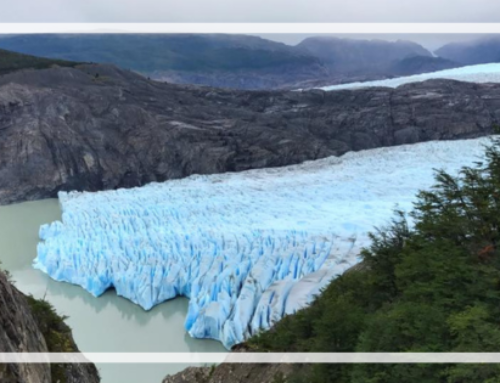
Ultimate W Trek Packing List – Torres del Paine, Patagonia
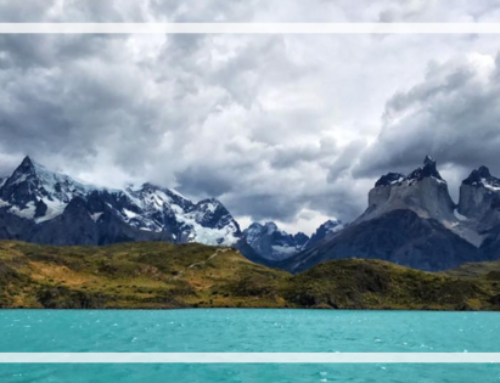
A Self-Guided W Trek Itinerary
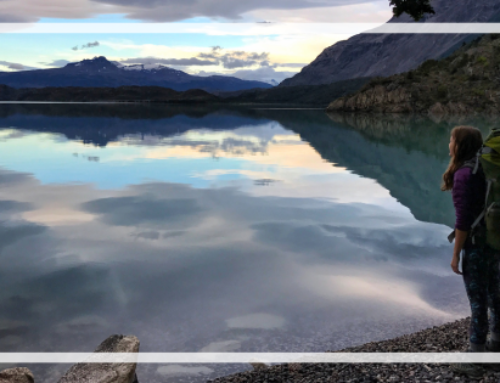
Important Backpacking Tips for Beginners
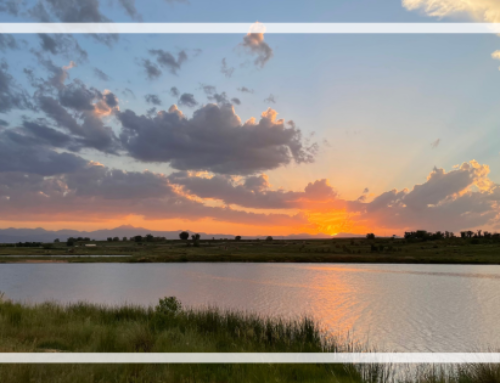
The Best Things to Do in Longmont, Colorado
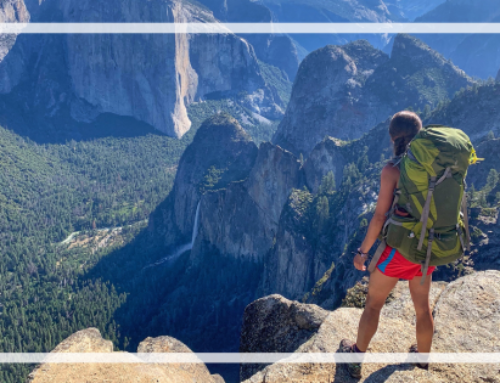
How to Poop while Backpacking
Comments ideas advice leave some cancel reply.
This site uses Akismet to reduce spam. Learn how your comment data is processed .
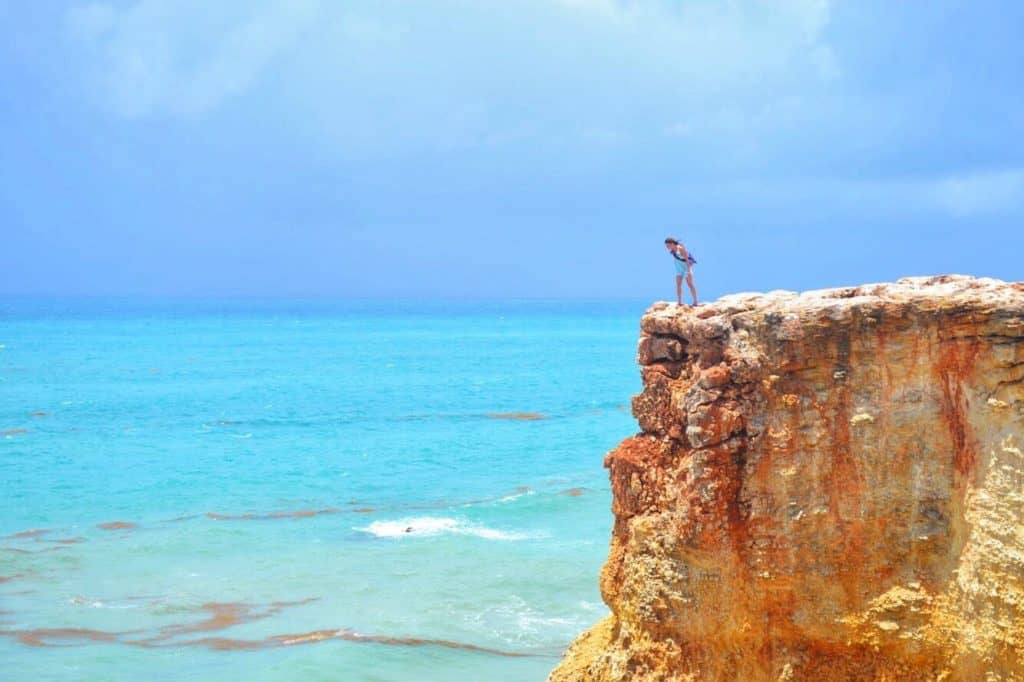
- Skip to right header navigation
- Skip to main content
- Skip to primary sidebar
- Skip to footer
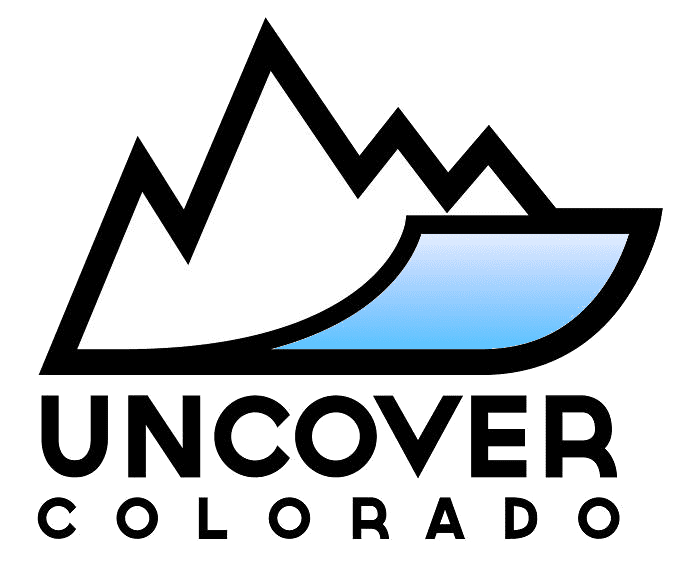
- Trip Planner
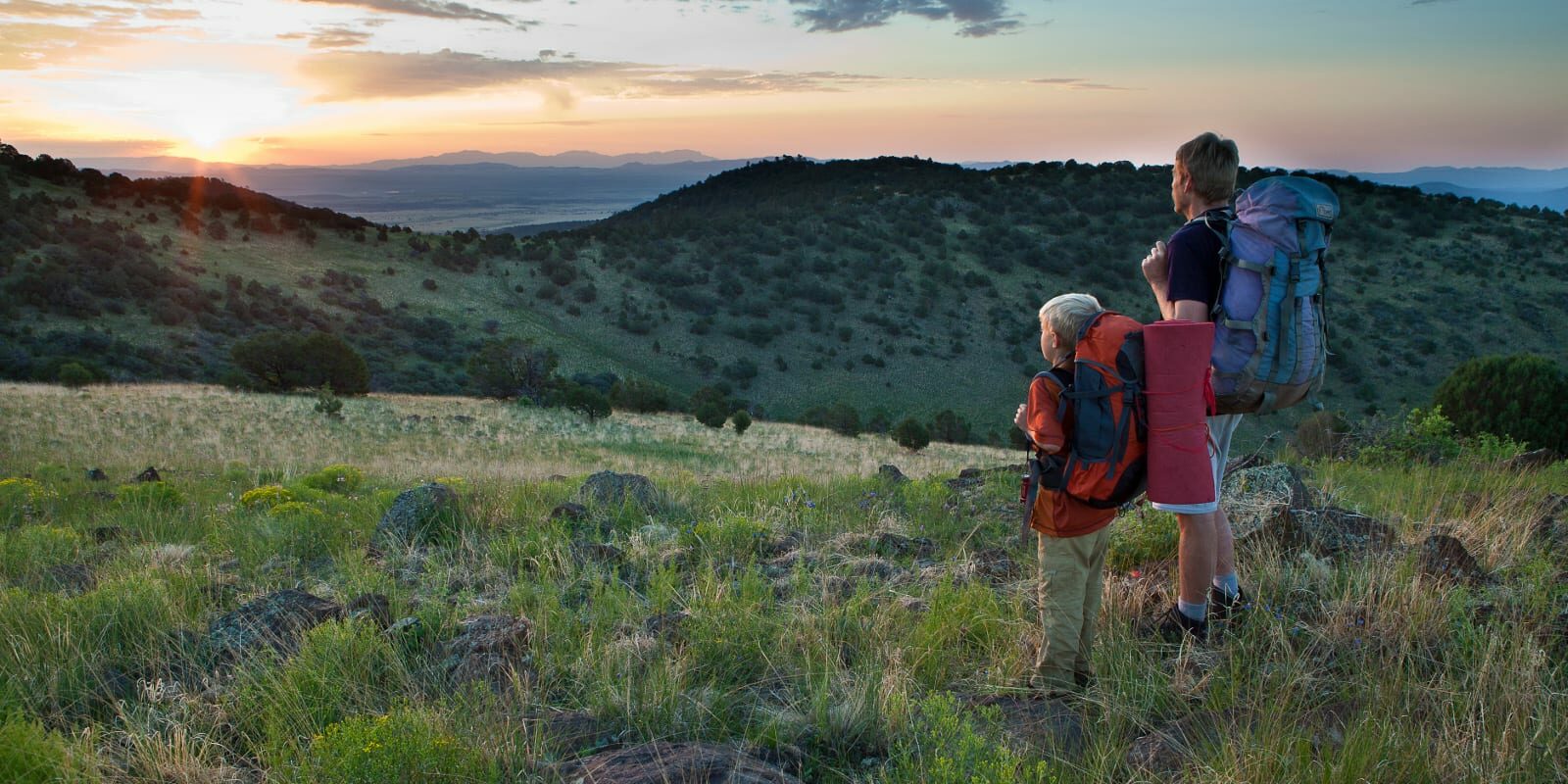
6 Outstanding Overnight Backpacking Hikes in Colorado
July 28, 2021 By // by Matt Thomas
Colorado is a hiker’s paradise, full of hidden overnight treks and magnificent multi-day trails. It’s among the best places in the world to be for stunning hiking trails.
Whether you’re looking for a simple day hike to do with your family or a longer jaunt for you and your pals, you’ll find it here. East to west, north to south, Colorado is covered in scenic hikes , some connecting to larger national trails. Summer is no doubt the most common time to hike, with the most popular trails usually being covered in visitors. But don’t let that deter you from visiting, there are plenty of fantastic trails that are could be yours, and yours alone. Colorado’s a big place after all.
Colorado’s Best Multi-Day Hiking Trails
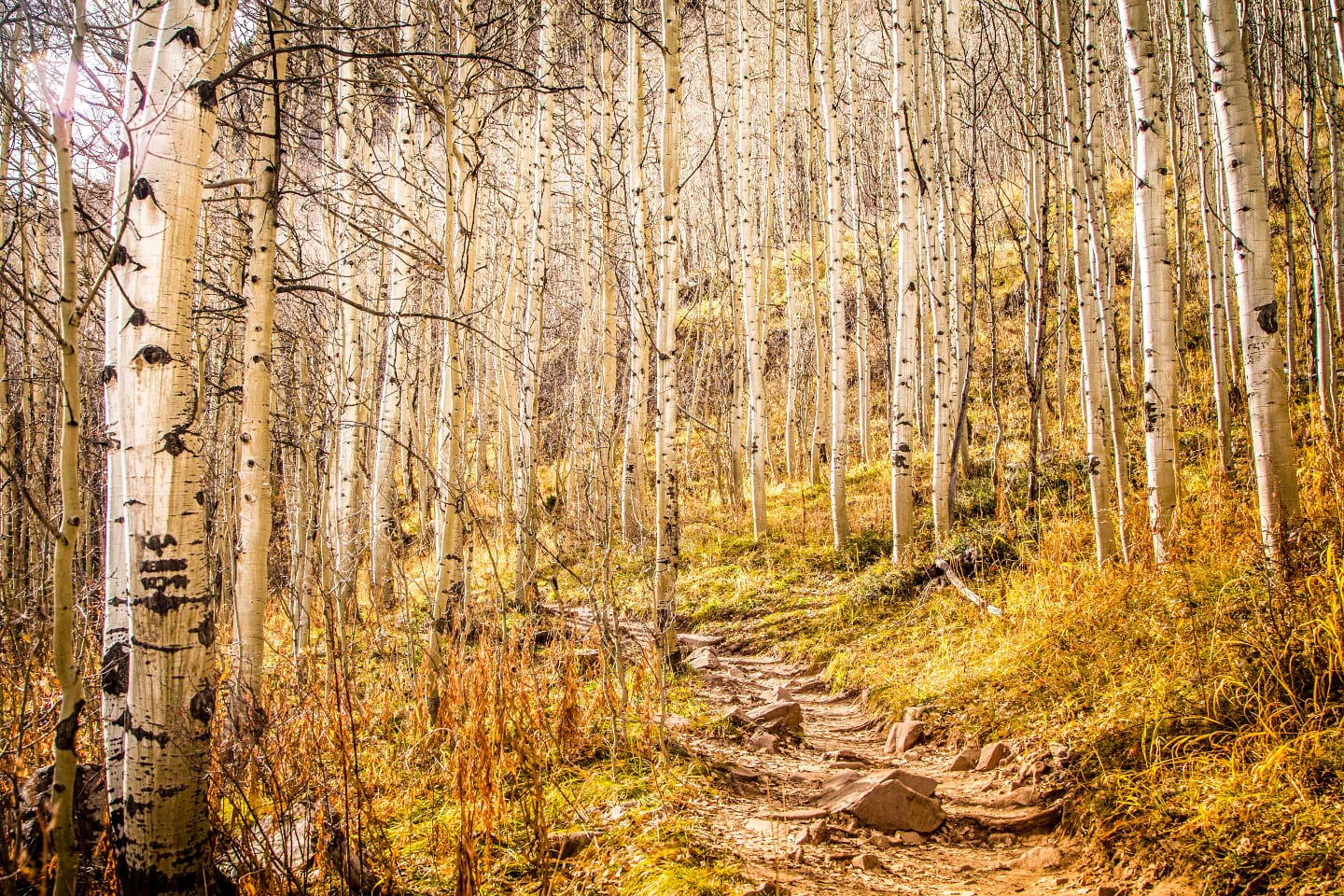
Thanks to a varied topography and the highest average elevation in the nation, Colorado provides a one-of-a-kind destinations for families and hikers from all over. You can stand on the Earth as high 14,400 if you’re atop Mount Elbert, our highest 14er . Or walk around at 3,315 feet if you’re probably not wading in the Arikaree River in Yuma County. We have ancient Anasazi ruins to explore, deep natural alpine lakes, forest teaming with wildlife, historic dinosaur and tree fossils. It’s an interesting place that keep’s you on your toes.
Easy day hikes in Denver and seemingly anywhere here are as easy to find as walking out your front door. Keep in mind too that nearly every single campsite I can think of has a hiking trail by it, so overnight hiking is also not too complicated. However, you must treat it with the utmost respect .
- Start out early each day, afternoon storms are common.
- If you are injured and solo, it’s best to stay on the trail and wait.
- Cell phone coverage is spotty at best.
- Be in a good shape.
- Trekking poles can help tired knees.
- Purchase a CO Outdoor Recreation Search and Rescue Card, CORSAR , if you don’t have a hunting or fishing license. It’s only $3 for a year or $12 for 5 years.
Backpacking is a worldwide passion, with people from all walks of life enjoying wonderful nights under the stars, coupled with early morning departures. Everywhere from the Swiss Alps to South America, you’ll find outstanding multi-day hikes. Oftentimes it’s beneficial to take a backpacking group tour and Colorado offers its fair share of choices for guided overnight hikes.
Here’s a look at the lesser strolled, multi-day hikes for your overnight pleasure. These are among the top multi-day hiking trails in Colorado:
Colorado Trail
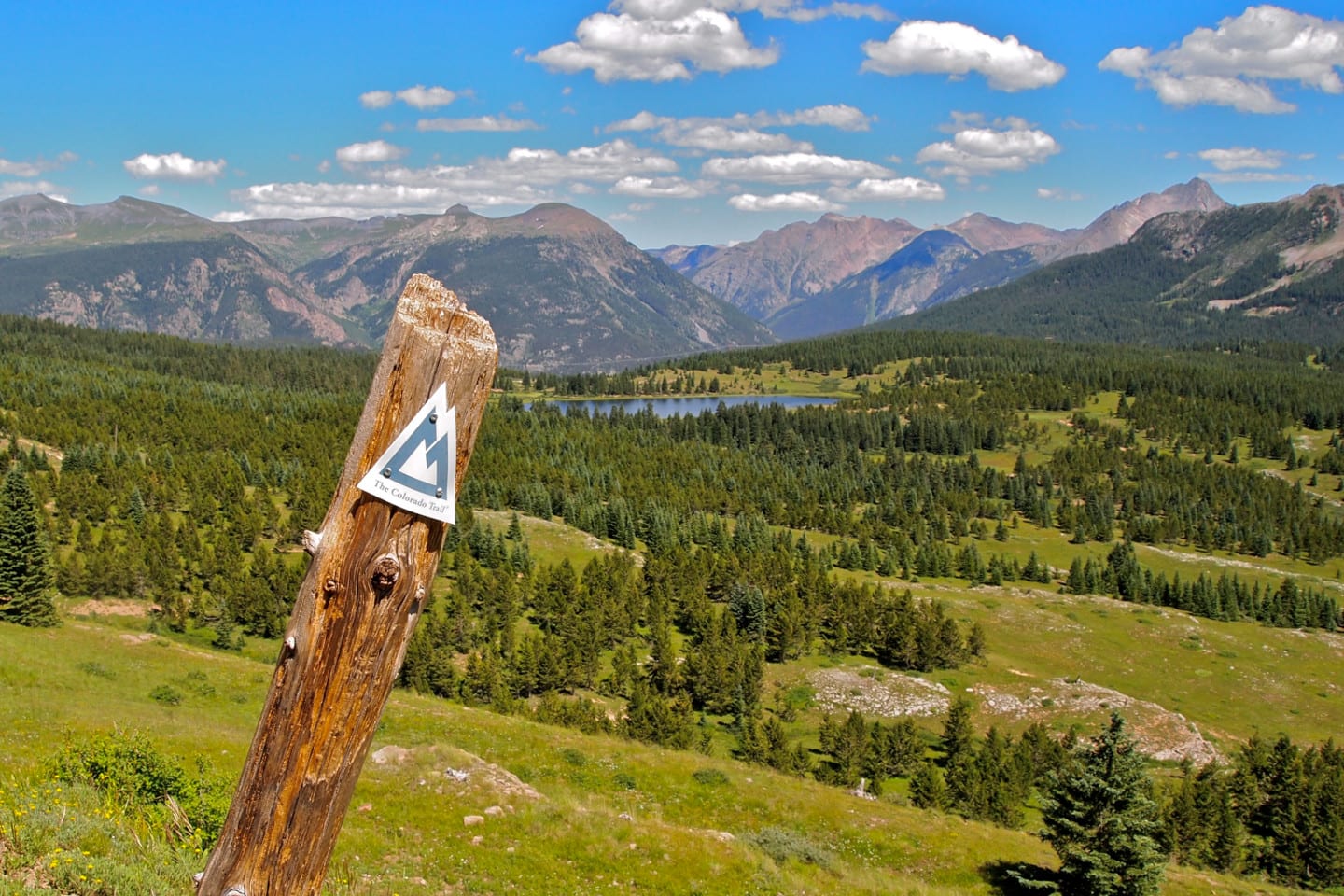
Day hikers will be able to access 28 segments of the Colorado Trail , each with check-in points. This state wide trail runs from Metro Denver’s Waterton Canyon to Durango . Elevations and difficulties of the sections vary. Backpackers too will have a splendid time hiking any bit of the 486 miles.
Allow yourself 4 to 6 weeks if you’re actually looking to conquer this life-changing hike. The average elevation is 10,300 feet to give you an idea. Optimal time to go is summer, late June to early September, and you should be relatively snow free. You’ll still see the white fluffy stuff on the mountain peaks. It’s also possible to choose any in-between segment for a two day or longer jaunt. It’s best to take a couple cars so you can park at the finish, just don’t forget your keys.
Continental Divide Trail
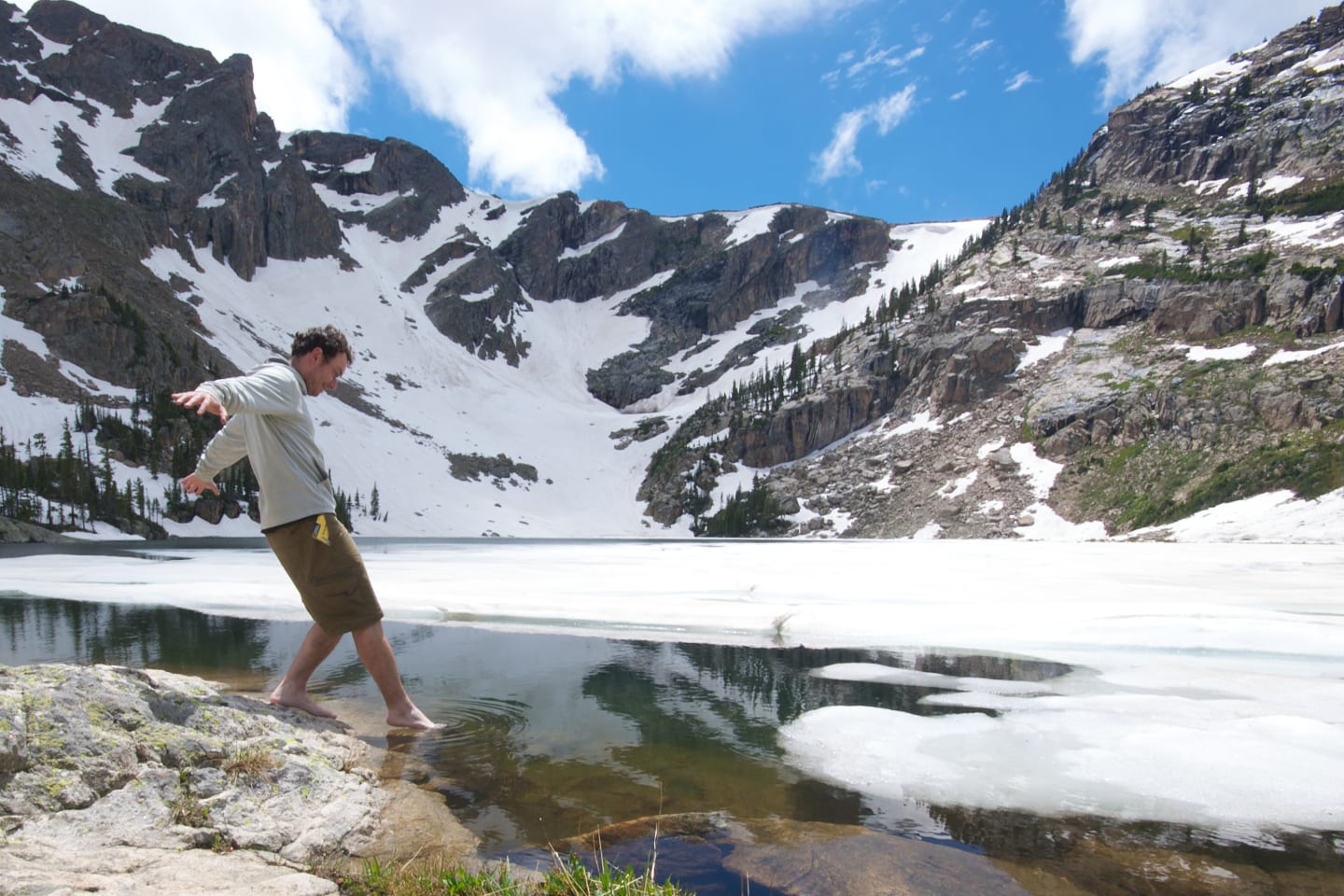
This nationally scenic trail is not for the feint of heart. It’s called the Continental Divide Trail for a reason, it traverses the spine of the United States. Traveling south to north or north to south, the choice is yours while your climbing high over some of Colorado’s tallest peaks. Established in 1978, it covers 3,100 miles from Mexico to Canada, passing 5 states.
The average through hike time for the whole shebang is 6 months at 17 miles per day. 740 of those miles of CDT are available in central Colorado . It’s highest point in the trail is Grays Peak in CO at 14,270 feet. Waterton Lake in Montana is its lowest point at 4,200 feet. More than 1,000 summits in Colorado top 10,000 feet on the CTD, making it one of the route’s best. It passes geological feature after feature, with a lot of historic ruins, like the Hancock ghost town .
Chicago Basin in Weminuche Wilderness

For a wild memory, consider this southwest hike that combines a trip on the Durango train . The destination is the Chicago Basin, which offers access to 3 area 14’ers. It’s unofficially called the backpacking train, which allows you to backpack from the train mid way to Silverton. At 499,771 acres, the Weminuche Wilderness is the biggest if the state.
Most overnight hikers to Chicago Basin will camp in the basin. It provides simple access to Durango & Silverton Narrow Gauge Railroad and Eolus, Sunlight and Wisdom peaks. So how does this work? Reservations should be made through the Durango Train ticket office to ensure seating. Let them know what you are doing. You can also save time and money by boarding form Silverton. If you have no reservations, you can may still be able to buy directly from the conductor at either Needleton or Elk Park drop offs.
How to flag the train:
The correct method is by waving your hands horizontally across your knees. When flagging the train in either direction, you must be on the east side of the tracks.
Maroon Bells Four Pass Loop
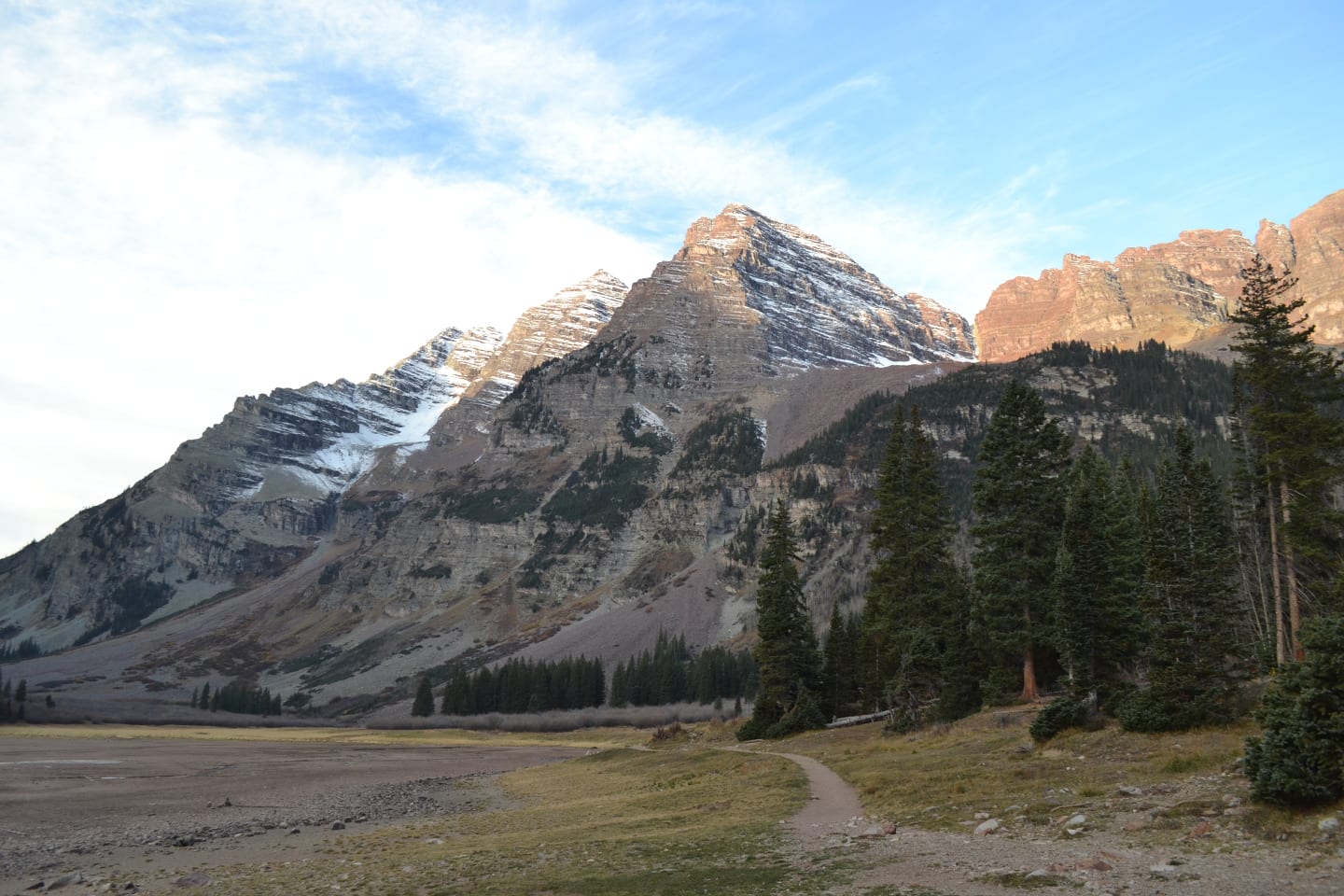
This is one of the best shorter multi-day hikes in the state. It begins from the famous Maroon Bells Scenic Area in Aspen Highlands. From here, it’s 28 miles roundtrip, with 8,000 feet of elevation gain between all the peaks. There is a special overnight parking area below Maroon Lake to start the hike. Take Maroon Creek Road past the Forest Station, after 8:30am requires a stop for a permit, to the parking area.
You can choose either way, clockwise or counter-clockwise, when you come to the fork in the road, AKA Maroon Lake. Backpackers generally take 3 to 4 days to complete the Four Pass Loop , which is best during summer. It’s rated as a difficult hike, beginning at 9,580 feet and peaking at 12,500 feet. Every party needs to self-register at the Trailhead and carry a copy of their free receipt. Good campsites are found on the hike.
Lost Creek Wilderness Loop
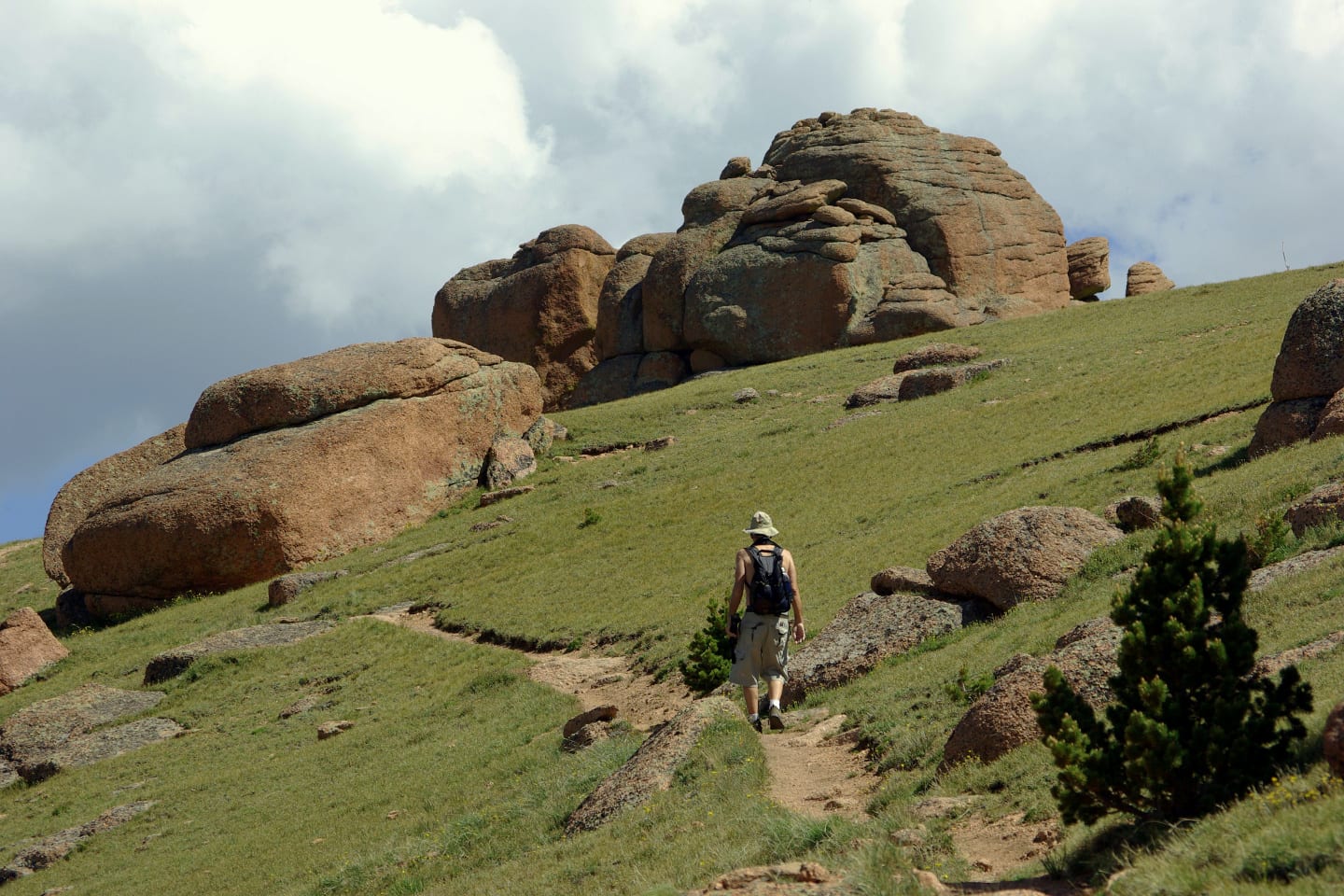
South Park is often overlooked at a hiking destination, especially multi-day treks. Upon first inspection descending from Kenosha Pass this high-elevation basin seems like a barren alpine desert. However, drive into it and you’ll soon realize its treasures, including elaborate rock formations at Lost Creek Wilderness , a myriad of rolling mountains forests, and Tarryall Reservoir, another gem for another day. Allow yourself at least a couple days to discover this magical place.
Situated close to Fairplay , you’ll begin from Goose Creek Trail, which winds through aspen groves and colorful meadows. Looking west affords splendid views of the Collegiate Peaks and Mosquito Range. Since it’s a loop you have a choice of going direction. One highlight is the Goose Creek drainage, which has granite spires and huge boulders. The total length is 34 miles, although you have the option of shaving off 10 miles or so with the McCurdy Park cutoff. Free dispersed camping is prevalent.
Devil’s Thumb to King Lake Loop
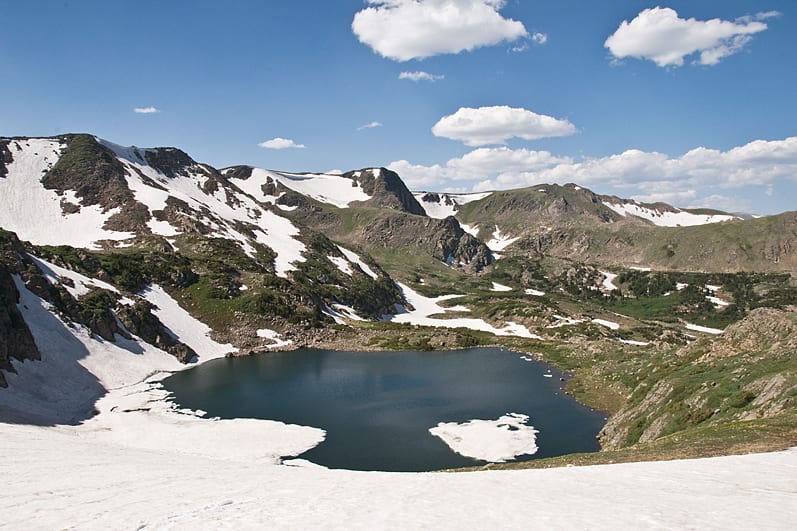
Denverites will enjoy this relatively easy-to-reach hike in Nederland . At only 16 miles many folks day trek this one too. The option is yours if you’ll spend the night, although once you see the views of the Indian Peaks Wilderness you’ll likely want to stick around for another day.
Begin your day at the Hessie Trail, which due to its Front Range proximity, does fill up quickly. The town of Nederland accommodates with a free shuttle to the trailhead. Remember to make the last bus home before it departs, if going this route. The first main point of interest, at over 5 miles up, is Devil’s Thumb Lake. If you do the whole loop, you’ll continue on Lonesome Trail to King Lake, then Devil’s Thumb Pass, completing the journey in 11 miles.
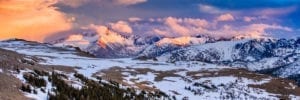
As you can probably guess, the list of Colorado’s top multi-day hiking trails could go on a longer time than we got. For a unique time, and probably better digs than you tent, consider hiking to the 10th Mountain backcountry hut system . These rental cabins are located throughout the national forest around Leadville, ranging in size and amenities, most fairly bare bones.
Do you have a favorite multi-day hiking trails in Colorado that you care to share? Please do in our comments. Thanks for reading!
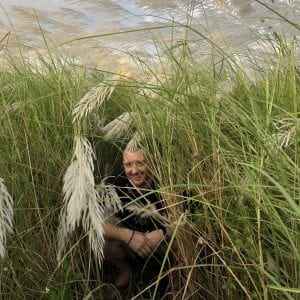
About Matt Thomas
Matt is an avid writer and explorer, who loves to showcase this wild, wondrous world. His favorite place to be is right here in the Centennial State.
Join our Colorado travel community

Get In Touch
- Privacy Policy
- Disclaimer—Terms of Service
Things To Do
- Travel Blog
- Colorado Activities
- Colorado Events
- Colorado Towns
- Colorado Hotels
- Colorado Restaurants
- Colorado Transportation
- Made in Colorado
Fall Activities
- Federal Lands
- Ghost Towns
- Hot Springs
- Ski Resorts
- State Parks
- Train Rides
8 Colorado Backpacking Trips You Shouldn’t Miss
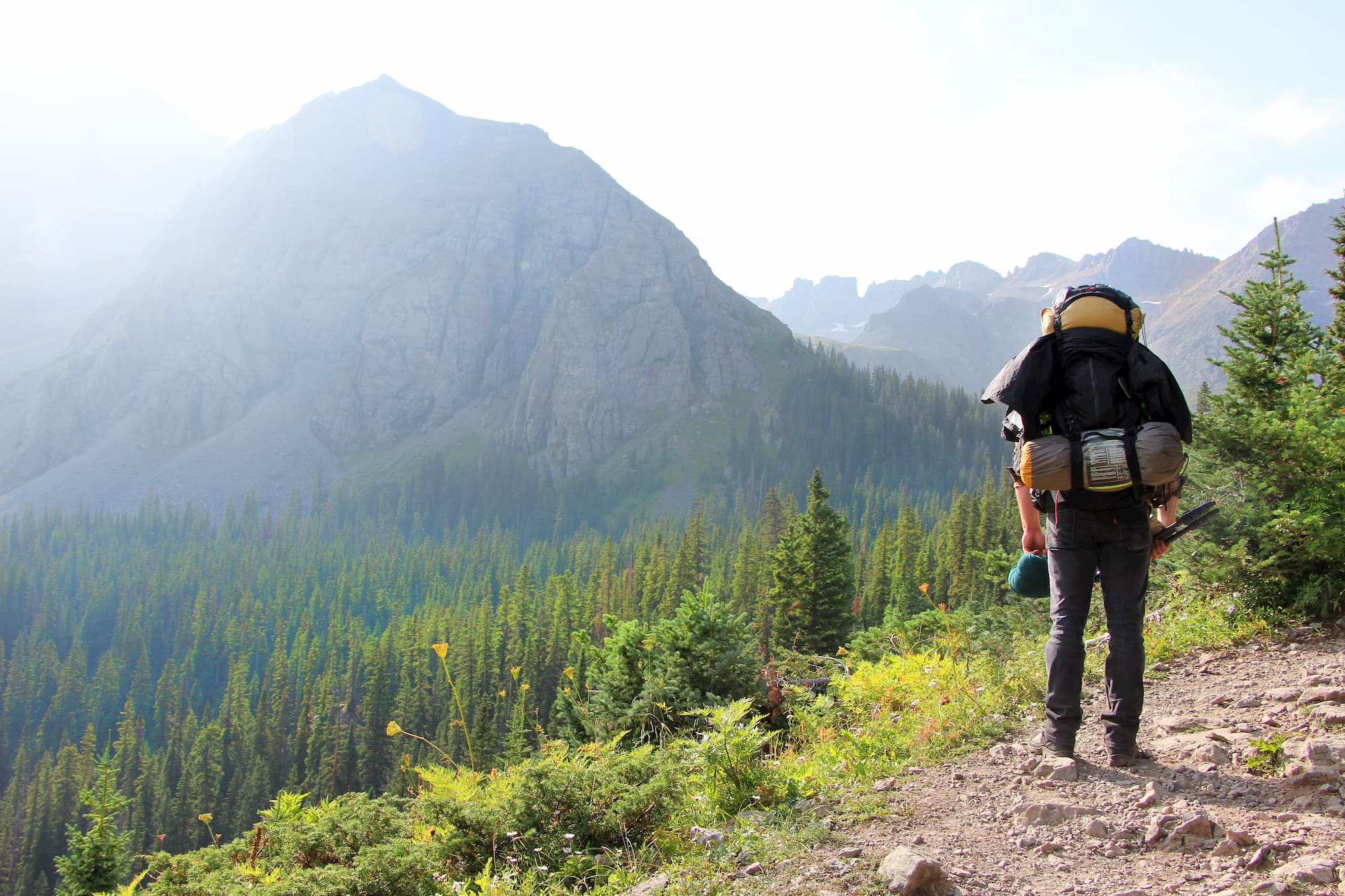
This Colorado backpacking guide was brought to you by Gregory , the makers of backpacking packs that fit comfortably and fit all of your gear for your next backcountry adventure.
It’s impossible to think of Colorado without picturing the Rocky Mountains. The steep and stunning landscape of Colorado has brought skiing fanatics to its infamous slopes for decades. More recently, however, Colorado has become one of the most moved-to states in all of the country partly due to its year-round adventure access. One of the most holistic, soul-filling and challenging ways to experience this beautiful state is through backpacking.

The summer and fall in Colorado offer particularly glorious views and conditions, so for those seeking to explore more of Colorado’s wilderness areas, we’ve identified some of our favorite backpacking trips.
Whether you call the Centennial State your backyard or you’re planning an adrenaline-filled vacation, these Colorado backpacking trips will keep you bright-eyed and challenge your athleticism. These eight trips vary in distance, difficulty and seasonality, so make sure you are prepared for your Colorado backpacking trip.
1. Conundrum Hot Springs

Image from The Dyrt camper Anthony P.
Trailhead: Conundrum Creek Trailhead Distance: 16.7 miles Elevation Gain: 2,791 feet Route Type: Out and Back Season: June – October Permit Required?: Yes (year round)
This out-and-back trail has become wildly popular in the past few years and as a result, now requires a permit. Though popularity is a deterrent for some backpackers, backpacking to Conundrum Hot Springs is well worth the hype. Now that this year-round permit system is in place, solitude and peace have been restored to this gorgeous valley.
The 102-degree hot spring is the obvious highlight feature of this backpacking trail, but you’ll find plenty of beauty in the 8.5 miles to the springs. While climbing 2,791 feet, you’ll pass a myriad of wildflowers in July and shimmering, golden aspens in September and early October. You may even see moose, bears or marmot. Bear canisters are required for this trail as well.
The climb to the springs is difficult, so be prepared for a challenge and remember to pack light, and condense your items as much as possible. The Rockies are infamous for erratic weather, so be prepared for rain or snow depending on the time you go and pack warm layers for night time. There are three major creek crossings, two of which have bridges built for you and one that will require you to cross it. That said, there are plenty of water resources along the trail, but remember to be carrying at least two liters at any given time.
Once you reach the hot springs, you’ll have the opportunity to soak in the steamy pool with your friends and make some new friends if you’re so inclined. This soaking pool is clothing optional, so be prepared to see those embracing nudity or trying it out for yourself. You can enjoy the panoramic views of the breathtaking valley below and enjoy the presence of the towering Cathedral, Conundrum, and Castle Peaks. There are 20 campsites with varying group sizes.
Post Hike: Try Hops Culture in Aspen for a beer and pizza or a juicy hamburger.
2. Four Pass Loop
Trailhead: Maroon-Snowmass Trailhead Distance: 27.1 miles Elevation Gain: 7,327 ft. Route Type: Loop Season: No Permit Required?: No
This Colorado backpacking trip is true to its name – it skirts over four high-elevation passes in 27 miles in the striking Maroon Bells Wilderness and Elk Mountains. This trail is a favorite among Colorado residents and is typically done as a three to four-day backpacking trip but can be completed in one day as a challenging trail run. This loop is particularly popular in the fall, as the aspens are innumerable and entrance hikers with trails lined in gold, red and orange hues. This is a more challenging route, and best for intermediate to advanced backpackers.
You will begin at the trailhead at Maroon Lake, which you can access via your own personal vehicle before 8am or after 5pm. If you want to access the trail during those hours, you’ll have to take a shuttle and pay a $10 entrance fee. If necessary, hikers can camp at West Maroon Portal before beginning the journey.
Along the journey, you will witness incredible alpine scenery as you climb four 12,000+ foot mountains, walk among oodles of wild flowers or fall foliage, depending on the season. Be prepared for challenging terrain and many uphill battles. The incredible scenery will keep you motivated, but be aware of your skill level and be prepared for altitude sickness if you are sensitive to high elevation hiking.
Post Hike: Grind in Glenwood Springs offers gourmet burgers for meat enthusiasts and vegan/vegetarians alike.
3. Zirkel Circle
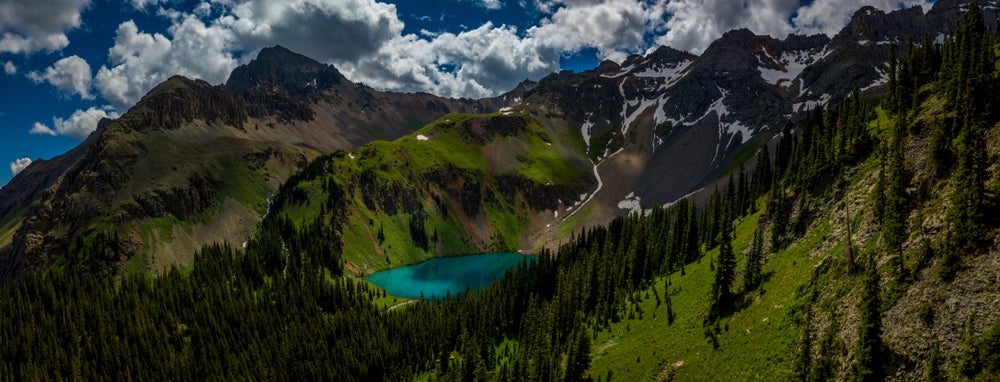
Trailhead: Slavonia Trailhead Distance: 10.3 miles Elevation Gain: 2,463 ft. Route Type: Loop Season: June – September Permit Required?: No
Northern Colorado are still somewhat off the beaten path, so trails will likely greet you with more solitude and silence than backpacking trips in the Front Range of Colorado. This trail near Steamboat Springs, Colorado can be done in a day or done as a short, two-day backpacking trip. The Zirkel Circle is a favorite among Northern Coloradans and is only moderately trafficked. The highlight of this trail is easily Gilpin Lake, a shimmering lake surrounded by rugged mountains, a view that easily mimics alpine scenery of Switzerland. The lake is about half-way along the trail, making it an ideal place to camp. Hikers must camp at least ¼ mile away from the lake.
We recommend hiking counterclockwise. Gold Creek Lake is a great place to stop for lunch on the way to camp at Gilpin Lake. Additionally, hiking counterclockwise has a lower sustained grade. Along the trail you’ll encounter lakes and streams that are fantastic for fly fishing. You may also encounter black bears, so a bear canister is recommended, but not required.
Post Hike: Aurum in Steamboat Springs is great for fancy cocktail to treat yourself for all of the hard work.
4. Venable-Comanche Trail and Phantom Terrace
Trailhead: Alvarado Trailhead Distance: 12.3 miles Elevation Gain: 3,884 ft. Route Type: Loop Season: May – November Permit Required?: No
Located in the heart of the Sangre de Cristo mountains, this Colorado backpacking trip is popular in fall as the trail winds through aspen groves that famously boast their shimmering golden leaves come September. Bring your fishing pole and fish in Venable Lakes or Comanche Lake. This trail offers sweeping views of The Sangre de Cristo Mountains, a rugged and narrow range in Southern Colorado.
You’ll begin at Venable Trail and have the option to camp at Alvarado Campground before hiking or go ahead and begin making your way. Make sure to look for open, flat areas where it looks like campers have camped before for best Leave No Trace practices. On the trail, you’ll skirt along the very narrow trail known as Phantom Terrace. Its spooky name originates from the trail being difficult to see and the seemingly steep drop off from the trail. But the trail is wider than it looks once you’re on it. Starting on the Venable Lake side of the loop (counterclockwise) will allow you to go down the Phantom Terrace, rather than making the hefty climb up.
Post Hike: Chappys Mountain View Bar & Grill in Westcliffe has mouth-watering burgers and steaks to enjoy the flavors of Colorado’s western heritage.
5. Baker Gulch to Bowen Gulch Lake
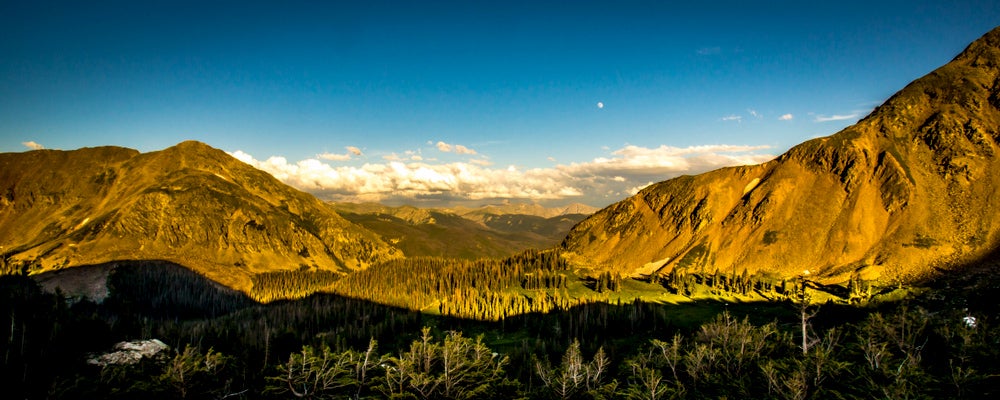
Trailhead: Bowen/Baker Trailhead Distance: 19 miles Elevation Gain: 4,757 ft. Route Type: Loop Season: April – October Permit Required?: No
This dynamic, challenging and scenic Colorado backpacking trail is great for beginner backpackers interested in a higher-mileage backpacking trip. The trail begins in Rocky Mountain National Park , so you will have to pay the $20 entrance fee if you do not have a pass. You’ll drive along the tallest road in the U.S., the Trail Ridge Road, which offers incredible views of the Rocky Mountains by vehicle. Once at the trailhead, hikers have the opportunity to trek over a 13,000 foot mountain, brush up against the abundant, knee-high wildflowers, witness a moose mother and baby, and catch a fish for dinner.
Anyone interested in backpacking will enjoy this trail, but a fly fisherman will be particularly delighted by the casting opportunity on the trout-laden alpine lakes. Parika Lake and Bowen Lake offer some of the best early-season cutthroats of the season in the Never Summer Wilderness, so make sure to bring a lightweight rod and cook up a fresh-caught dinner.
Moose are another fauna that roam proudly and in large numbers in the Never Summer Wilderness. You will likely see a mother moose and her baby or a small herd of male moose. Be sure to be wary of their presence and follow moose safety protocol . Do not bring your pets on this trail, as they can cause moose to become aggressive.
A great place to camp or enjoy a bite to eat is Parika Lake, if you’re going counterclockwise. There are plenty of water resources along the way, so water should not be an issue.
Post Hike: Nepal’s Cafe in Estes Park is fantastic for authentic, delicious Nepalese food.
6. Silver Basin Loop
Trailhead: Horse Ranch Lake Trailhead Distance: 15 miles (with option to add 6 miles to Oh Be Joyful Pass) Elevation Gain: 3,677 ft. Route Type: Loop Season: July – September Permit Required?: No
If you are searching for a backpacking trip with endlessly panoramic views, the Silver Basin loop near Crested Butte is the Colorado backpacking trip for you. This trail is great for beginners, as it is rated moderate because it is relatively short as backpacking loops go, and the elevation gain is low grade. This trail is fantastic in the fall as it boasts Colorado’s famous aspens. Along the trail you’ll witness the Ruby Range, characterized by their deep shades of red. This range is composed of the Maroon Formation, giving it a red hue, similar to the Maroon Bells near Aspen.
You’ll have the option to add 6 round trip miles to your trip by climbing up to Oh-be-Joyful pass. If you don’t mind adding mileage to your trip, this detour is highly recommended. You will be greeted with incredible alpine scenery and panoramic views of a glacial valley and countless peaks along the Ruby Range.
After this pit stop, the trail becomes relatively easier. You will continue your last leg along the Dark Canyon Trail, which follows a creek for any water you’ll need on the last day. You’ll also experience the Devil’s Stairway which drops 1,200 feet in .75miles. After that, the trail continues at a relatively easy grade from 8,640 feet to 9,400 feet over 7 miles before returning to Horse Ranch Lake trailhead.
There are plenty of water resources along the trail, but water should be treated before drinking. Be cautious of afternoon thunderstorms in the summer months. And, as with any backpacking trip, make sure you bring along more than enough backpacking food and easy options for meals to go .
Post Hike: The Secret Stash in Crested Butte will leave you thinking about their pizza for weeks to come.
7. The Last 23 Miles of The Colorado Trail (Southbound)
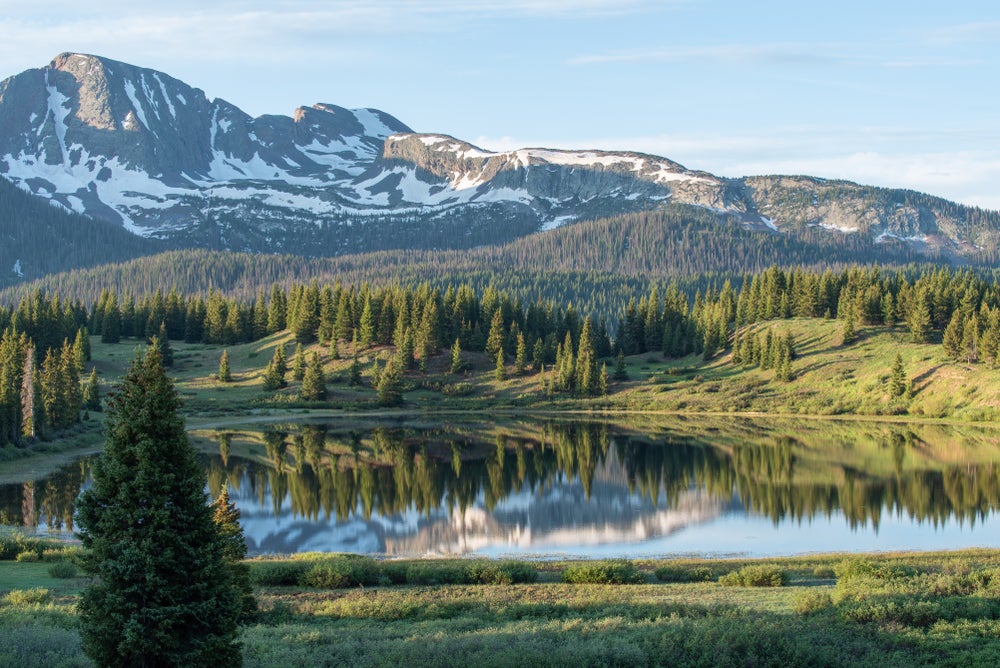
The San Juan Mountains in southwestern Colorado are arguably the most beautiful pocket of Colorado. Even Colorado residents don’t explore much of this range because it is hard to access, but that in turn helps keep it a remote wilderness area.
The 485-mile Colorado Trail epically ends in this gorgeous mountain range, and is argued to be some of the most beautiful sections of the trail. If you’re interested in the Colorado Trail, but don’t have a month to spend walking, this is a great Colorado backpacking trip to experience the last four sections of this stunning trail.
These sections of the Colorado trail are so beautiful because they are at or above timberline for most of the hike. The trail contours around monstrous peaks with and passes a line of stunning dark volcanic cliffs.
There are lots of water resources along this hike, but it should be treated. The hike is exposed to make sure to be wary of lightning.
8. Rawah Lakes Loop
Trailhead: West Branch Trailhead Distance: 23.2 miles Elevation Gain: 4,022 ft. Route Type: Loop Season: July-October Permit Required?: No
This Colorado backpacking trip is best completed in late summer or early fall, as there is typically a lot of snow until the late summer season. Summer offers emerald green mountains and pleasant temperatures. The fall permits trails lined with tall aspens in mass amounts in a fiery palette. The loop can be completed in 2-3 days with Upper camp lake, Rawah Lakes and Twin Crater Lakes being a great spot for lunch or camp depending on your route. Hikers can begin their journey from the parking lot and camp in well-used areas, or camp at Tunnel Campground before beginning the journey.
Post Hike: Unless you’ve been living under a rock, you probably know New Belgium Brewing Company makes some of the best beer in the U.S. Check out their employee-owned brewery and sip a brew on their lively patio.
This article about Colorado backpacking trips was brought to you by Gregory .
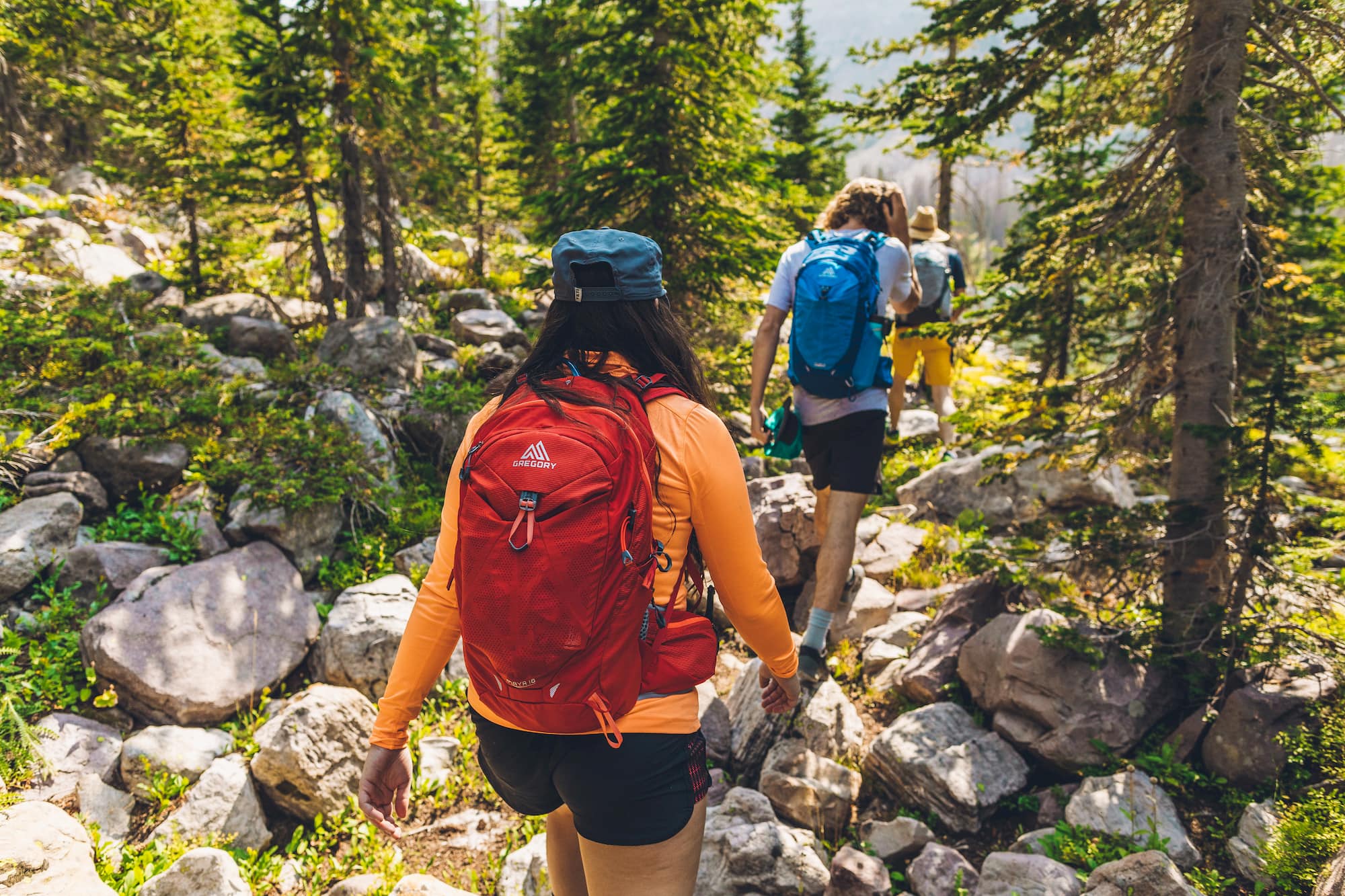
Photo from Gregory Packs
The makers of the best hiking backpacks on the market.
Related Articles
- Pawnee National Grassland
- A Camper’s Guide to Ouray, Colorado
- San Juan Mountains
Related Campgrounds:
- Elk Creek Campground , Gunnsion, CO
- North Fork Campground , Meeker, CO
- Ruedi Reservoir Camping , Basalt, CO
- Twin Lakes Colorado Camping , Leadville Colorado
- Cross Creek Campground , South Fork, CO
- Garden of the Gods Camping , Colorado Springs, CO
- Camping Dillon, CO, Prospector Campground
- Pikes Peak RV Park Campground, Manitou Springs, CO
- Tiger Run Resort , Breckenridge, CO
Popular Articles:
- Get the Latest 2023 Camping Travel Trends
- How To Find Free Camping in National Forests
- The Checklist Every First Time RVer Needs
- Find Free Camping With The Dyrt Map Layers
- The Ulimate Boondocking Guide To Free Camping
- Everything You Need To Know About Wifi For Your RV
- 7 of The Best Overland Routes in North America
- 14 Wilderness Survival Tools You Should Have in The Backcountry
- Here's What To Add To Your Primitive Camping Checklist
Emily Gallegos
Emily Gallegos is a travel-lover, backpacker and is generally curious about all this world has to offer. She grew up in the front range of Colorado where she fell in love with snowboarding, fishing and being outside as often as possible. She has studied Spanish in Spain and Argentina and has written for magazines in Boulder, CO such as Elevation Outdoors.
More Articles

8 Wildlife Sanctuaries and Refuges You Can Visit Across America
A good reason to go for a hike or pitch a tent and sleep in the dirt is to become more connected with the natural…

Make DIY Ice Cream in a Bag From Your Camping Cooler
This article on DIY ice cream in a bag is brought to you by IceMule. IceMule’s insulated backpack coolers are soft-sided, lightweight, and can keep…
15 Best Backpacking In Colorado Routes (From A Local)

Are you looking for the best backpacking in Colorado?
Colorado is full of outdoor adventure options ranging from some of the best skiing and snowboarding in the world to some of the best hiking trails right outside of Denver to some of the best backpacking loops in the country!
Having lived in Colorado and as avid hikers and backpackers, we know the best backpacking in Colorado to enjoy.
The state of Colorado truly has it all and with its 300 days of sunshines, there is plenty of opportunities to get outside and explore the mountains year round.
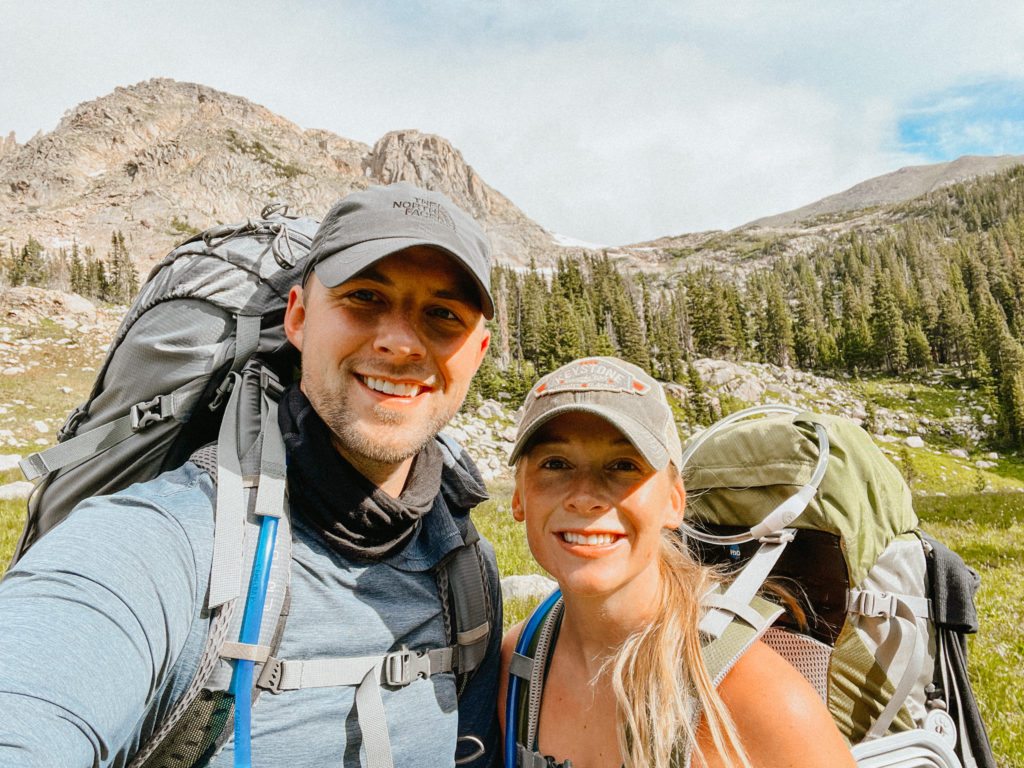
The Best Backpacking in Colorado
Below I have highlighted the best backpacking in Colorado for outdoor enthusiasts to enjoy.
1. Continental Divide Loop – Best for Experienced Backpackers Looking for a 3 Day 2 Night Backpacking Adventure
The Continental Divide Loop is about 30 miles long. This loop will take past some of the most beautiful scenery inside of Rocky Mountain National Park as you hike past waterfalls, alpine lakes, greenery, and much more.
This loop typically takes 3 days to complete and is considered quite hard due to its length and elevation gain.
There are quite a few requirements that you will need to backpack the Continental Divide Loop in Colorado.
You will need a National Park Pass , backcountry camping permit , and a bear canister .
Lastly, you will have to leave your furry friend at home. Dogs are not allowed on the Continental Divide Loop.
2. Colorado Trail (Segment 7) – Best for Those Searching for 1 Night Backpacking Trips in Colorado
The Colorado Trail is 567 miles long and goes from Denver all the way to Durango.
The Colorado Trail (or CT) is split up into 28 different segments, each of which has its own access point for you to hop on or off of the trail.
On average it takes about 4 to 6 weeks to complete the whole Colorado Trail from Denver to Durango. However, if you are looking for a shorter backpacking trip… look at completing just 1 of the 28 segments.
We highly recommend Segment 7 of the Colorado Trail due to its endless scenery and being right near the incredible town of Frisco.
Segment 7 is about 14 miles in length and is considered a hard hike.
Camping is allowed on most of the Colorado Trail and permits are NOT required.
We highly recommend that you check out The Colorado Trail Foundation website for more information.
Lastly, feel free to bring your pup along with you on your journey! The Colorado Trail is dog friendly, just be sure to bring extra food, water, and treats for your furry friend to enjoy.
3. Maroon Bells Four Pass Loop – One of Colorado’s Most Popular Summer Time Backpacking Loops
The Maroon Bells Four Pass Loop is an excellent backpacking trip for those looking to do a 3 to 4 day trek through one of Colorado’s most beautiful landscapes.
The loop is about 27 miles in length and you pass through four major traverses: West Maroon, Frigid Air, Trail Rider, and Buckskin.
This loop is considered to be a hard route and can be trekked clockwise or counter-clockwise.
You will see endless beautiful views and scenery including alpine lakes, dramatic mountain views, wildflowers, and much more.
If you are looking for a truly memorable experience with views of the infamous Maroon Bells just outside of the popular city of Aspen, look no further.
Plus, the Maroon Bells Four Pass Loop is dog friendly!
You DO need a permit to hike this loop. Also, you will need a parking or shuttle reservation in advance. Additionally, bear canisters are required in this area.
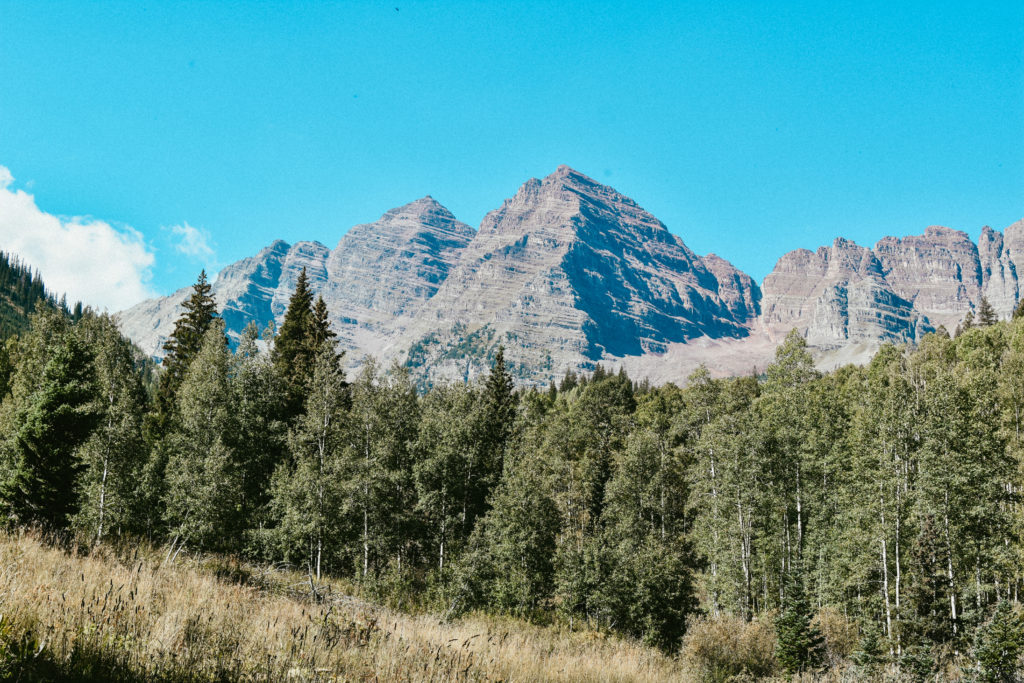
4. Lost Creek Wilderness Loop – An Excellent Weekend Backpacking Trip in Colorado with Unique Views and Terrain
Lost Creek Wilderness Loop is an excellent backpacking trail for those looking for a less trafficked trek compared to some of the more popular routes.
This backpacking route provides you with countless unique views, terrain, and landscapes compared to “typical” Colorado backpacking.
This loop provides you with views of different rock and granite formations along with various other landscapes throughout your trip.
The Lost Creek Wilderness Loop is just over 28 miles in length and is considered a hard loop.
Be sure to bring along with you your favorite backpacking pillow for side sleepers and your go-to hiking flashlight , along with your other backpacking essentials so that you have the most optimal experience while out in the wilderness.
Additionally, you are required to grab a self-issuing permit at the trailhead and keep the permit on you as you trek through the wilderness.
This allows forest service members to better keep track of visitation in the area.
Lastly, you may bring your furry friend along with you on your backpacking excursion as long as they are kept on leash!
5. Pine River Trail – A “Hidden Gem” Backpacking Route for Intermediate Trekkers
The Pine River Trail is a phenomenal option for those looking for a lesser known backpacking route with some solidarity and time with nature.
This trail is rated intermediate and is great for “average” backpackers or beginners that feel they are ready to push themselves a bit.
This trail is about 28 miles in length but has pretty flat terrain with the occasional uphill elevation gain.
You will mainly pass through wide meadows or tree filled areas. Additionally, dogs are welcome on this trail and may be off leash in some areas!
6. Sand Ramp Trail – Most Unique Backpacking Experience in Colorado
The Sand Ramp Trail is the most unique backpacking experience you can get in the beautiful state of Colorado.
This trail is inside of Great Sand Dunes National Park, home to the largest sand dunes in North America.
This trail is about 7 miles in length and is considered a moderate trail.
We recommend that you bring sandals or socks to wear, we found it better to walk barefoot than with our shoes on but definitely bring both!
Furthermore, you will need to pay an entrance fee to get into the National Park. Additionally, you will need a permit to camp in the backcountry.
From our knowledge and experience, dogs are allowed but must be on leash.
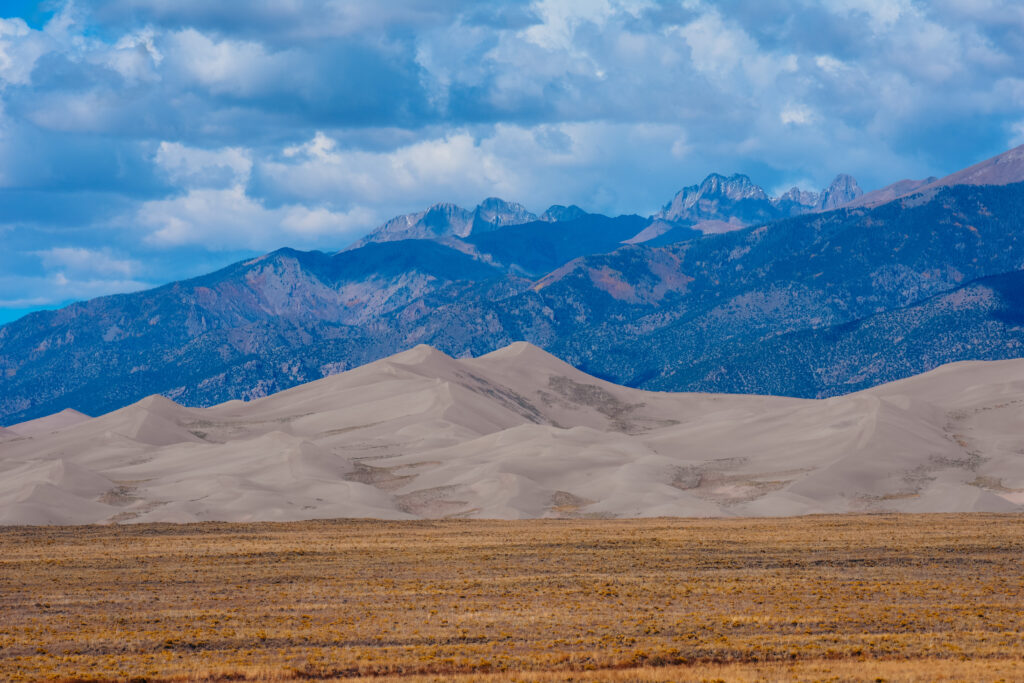
7. Snowmass Lake and Mountain via Maroon Snowmass Trail
This trail is a little over 21 miles in length and is an out and back trip. This backpacking route is right near the town of Snowmass so the location cannot be beat.
Additionally, the trail takes you past many beautiful lakes, mountain views, and terrific scenery.
This route is considered a hard trail and is very popular amongst backpackers. You may camp in designated areas and it does not require a permit.
However, you do need to register your visitation days at the trailhead. Plus, the Snowmass Lake trail is dog friendly so feel free to bring your pup along!
8. Chicago Basin in Weminuche Wilderness – A Memorable Train Ride to Start Your Adventure
Yes, you read that right. You will need to take a train ride to start your Chicago Basin backpacking excursion.
(You don’t have to take the train ride if you want to add a day or two to your backpacking trip but countless backpackers recommend taking the train journey to start your trek!)
Most backpackers recommend taking the train from Durango to the Needleton stop. Once you get off at Needleton, you will begin your backpacking adventure!
The Chicago Basin Trail is considered a hard route and about 15 miles in length out and back.
During your trek, you will see countless beautiful mountain views and scenery around you.
Plus, the hike is dog friendly so pets are welcome on leash! Lastly, according to our knowledge, there is no permit required for this trail.
We recommend that you take the train ride because it adds some adventure to your trip and is sure to add to the excitement!
However, if you would rather skip the train, you will begin your journey at the Purgatory Creek Trail and your backpacking trip will more than double in size to about 32 miles in length!
9. Devil’s Thumb to King Lake Loop
This loop is in the Nederland area of Colorado and is about 15 miles in length. This is a great option for those looking for a 1 night backpacking trip or could be split up into 2 nights!
You will pass through forest areas, meadows, tree lines, and pass several alpine lakes.
This loop does require a local permit for overnight camping in the area. Additionally, it is dog friendly so your pet can come with you!
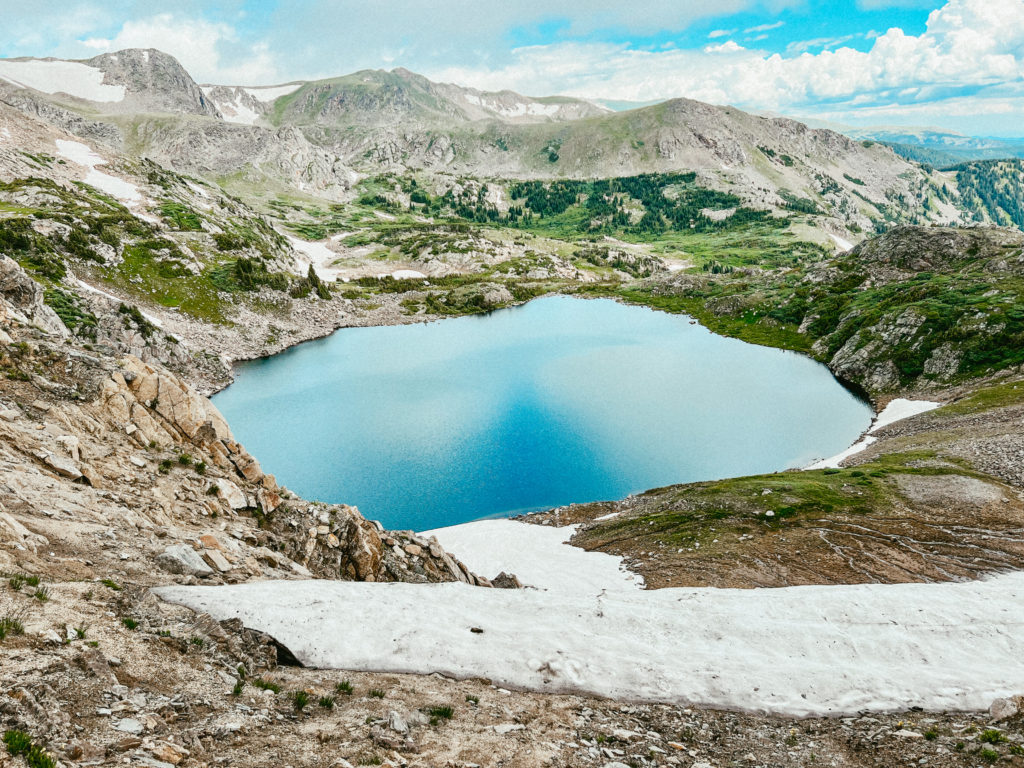
10. Gore Lake Trail
This trail is right near Vail, Colorado so the location is excellent! The Gore Lake Trail is about 12 miles in length out and back.
This route is considered a hard trail and will contain some truly breathtaking scenery as you take in the beautiful mountain landscape, the trees overhead, various rock formations, and much more. Plus, dogs are welcome along this route!
This is a great option for those looking for 1 night backpacking trips in Colorado! It’s also important to mention that you are required to have an overnight camping permit for this trail.
This is an excellent option for those looking for a backpacking adventure and would like to finish up near a bustling mountain town!
11. Buffalo Peaks Loop
The Buffalo Peaks Loop is in Pike National Forest and is a little less than 12 miles in length.
This loop is considered a popular backpacking route but is rated hard due to its terrain and elevation.
You will spend most of your hike in the woods surrounded by trees before popping out and catching a glimpse of the beautiful terrain from up top.
Plus, dogs are allowed on this loop and may be off leash in some areas!
12. Mohawk Lake to Pacific Peak and Crystal Peak
This trail is right near Breckenridge and is about a 12 mile loop trail. It is a lesser known backpacking route so it will be less crowded than some of the bigger name and more popular trails in Colorado.
Plus, it is dog friendly so you can bring your pet with you!
It’s important to note, that this trail is rated quite hard and the elevation gain is hefty!
We definitely recommend this hike for more experienced backpackers looking for a less crowded trail.
13. Mount of the Holy Cross Trail
This trail is about 12 miles in length and very popular amongst backpackers of all skill levels.
This trail is an out and back route that has significant elevation gain throughout the trek!
The views throughout this backpacking trip are outrageous as you see drastic mountain views in the distance, it is truly breathtaking.
Plus, this trail is dog friendly which is always an added bonus for dog owners!
14. Fern Lake Trail
This trail is about 8 miles out and back inside of Rocky Mountain National Park. It is a beautiful trail with lake views and countless wildlife sightings.
This trail is considered moderate so it is good for intermediate backpackers or beginners looking for a challenge.
This trail is inside of Rocky Mountain National Park which requires you to have a permit for overnight backpacking .
Additionally, you will have to leave your dog at home because they are not allowed on this trail.
15. Vallecito Creek Trail
This trail is about 13 miles in length out and back near the Bayfield area. It is considered a moderately hard trail with views of trees and a creek throughout your trek.
Additionally, pets are allowed on this trail and may be off leash in some areas! This is an excellent backpacking trip for beginners and intermediates alike.
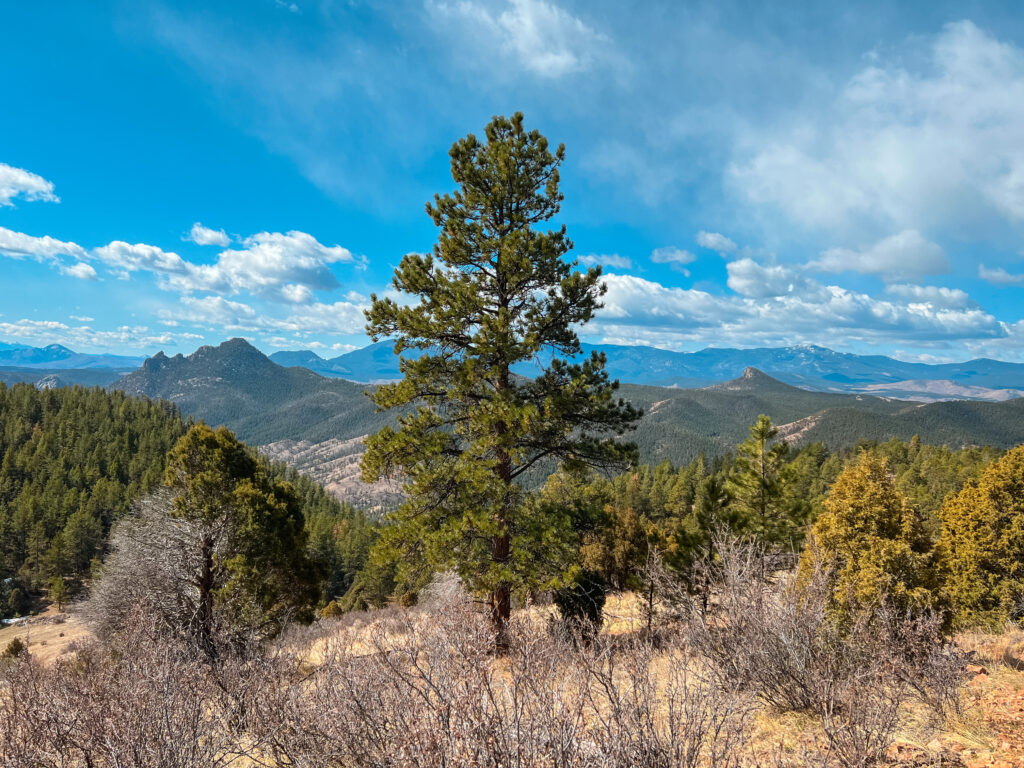
Colorado Backpacking FAQs
Below I have answered some of the most frequently asked questions about backpacking in Colorado.
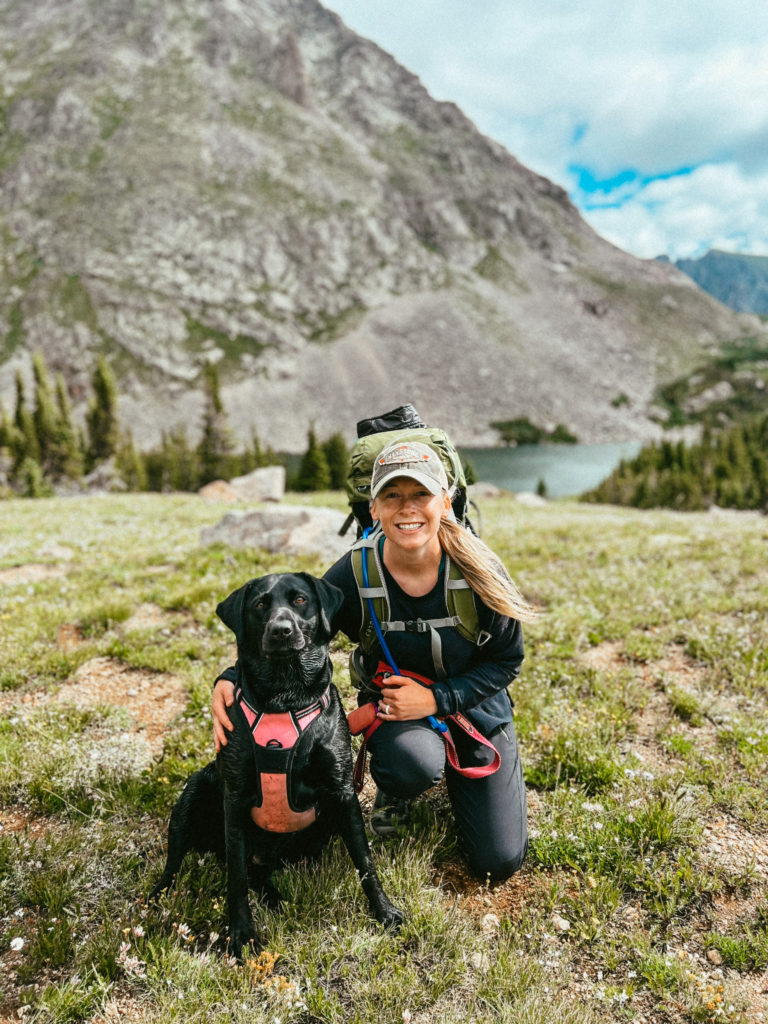
Where should I go backpacking in Colorado?
There are countless destinations to go backpacking in Colorado. We highly recommend that you check out the 15 we listed above for some of the best trekking in the state.
Additionally, make sure to check the AllTrails app for more recommendations.
Is Colorado good for backpacking?
Colorado is an excellent place for backpacking! The state of Colorado is known for its beautiful Rocky Mountains along with its endless outdoor excursions including backpacking, hiking, skiing, snowboarding, climbing, and so much more.
When should I go backpacking in Colorado?
The best time to go backpacking in Colorado is usually between the months of March through November.
However, it really depends on which areas you are looking to explore and their elevation.
Be sure to check the AllTrails app before embarking on your backpacking trip.
This app will tell you about the best time to hike that specific trail along with more details and requirements when it comes to backpacking, hiking, and camping throughout Colorado.
Do I need a permit to backpack in Colorado?
You do not always need a permit to backpack in Colorado. However, many trails and loops do require permits.
We recommend using the AllTrails app to learn more about permit requirements throughout the state.
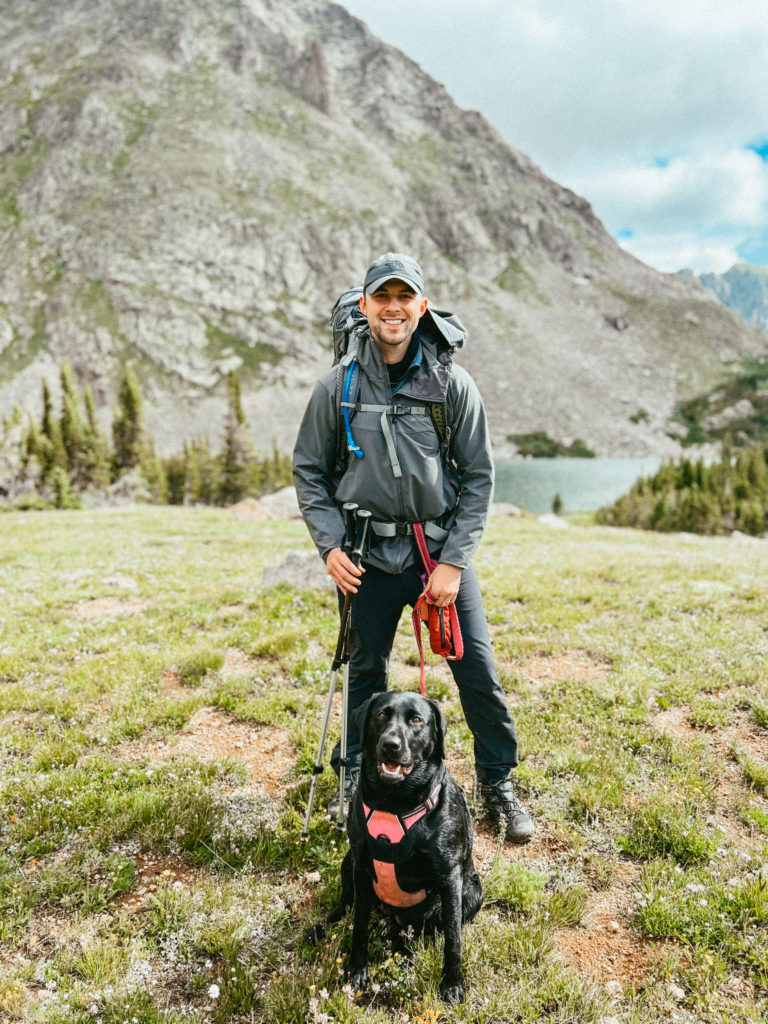
We hope this list of the best backpacking in Colorado helps you plan your next overnight backpacking excursion!
For similar posts, be sure to check out 15 Best Energy Bars for Hiking 2023 and Crampons vs Microspikes: Which Should You Use and When? Happy Backpacking!
Abby and Sam Price are the founders of Trekking Price's. They are travel experts and outdoor enthusiasts passionate about sharing their travels, hobbies, tips, and recommendations with others. They primarily focus on United States travel and their outdoor adventures and hobbies. Their favorite hobbies are hiking, skiing and snowboarding, scuba diving, fishing, and pretty much any outdoor recreational activity. They are on a mission to help other couples and families see more of the world without having to quit their 9-5 jobs and love sharing their travels, reviews, and hobbies with others.

Best Backpacking in Colorado: 14 Scenic Trips Worth Exploring
Colorado’s Best Backpacking Trails
Beginner-friendly backpacking routes in colorado, moderate backpacking trails in colorado, challenging backpacking trails in colorado, tips for backpacking in colorado, essential information for colorado backpacking.
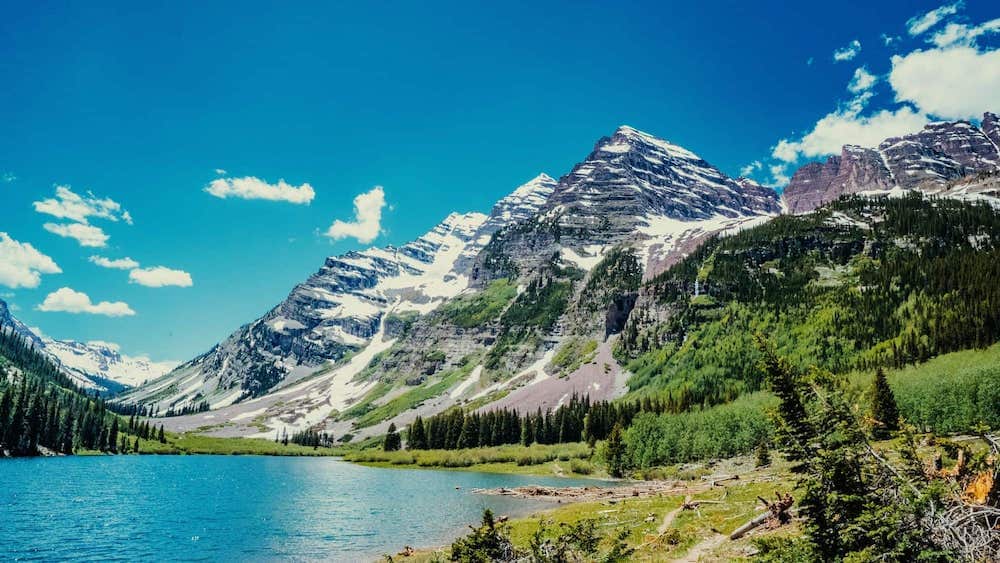
photo by Evan Wise
Are you looking for the best backpacking in Colorado ? Not only is Colorado home to some of the most famous backpacking trails in the world, but there are 14 scenic trips in particular that make it truly worth exploring.
In this blog post, we’ll provide you with details about these trails and essential information on how to best prepare for a backpacking trip in one of America’s top destinations for backpacking and wildnerness exploration.
Whether you’re an experienced hiker or just beginning your journey into backpacking, this article will help guide you along Colorado’s fantastic landscape and breathtaking views.
Key Takeaways
- Colorado is home to some of the most famous backpacking trails in the world and has 14 scenic trips worth exploring.
- Popular Colorado backpacking trails include the iconic Colorado Trail , Continental Divide Trail , Chicago Basin in Weminuche Wilderness , Maroon Bells Four Pass Loop , Lost Creek Wilderness Loop and Devil’s Thumb To King Lake Loop.
- Beginner friendly routes include Early Season Backpacking in Lost Creek Wildlife Area ; Mohawk Lakes near Breckenridge; and Beginner Route Near Fairplay and are a great way for novices to explore breathtaking wilderness areas with lesser technical difficulties.
- Some of the advanced backpacking trips in Colorado include the Aspen’s Four Passes Loop , the Colorado Trail’s highest thru-hike in America, Lone Eagle Peak , and Wildflowers from Crested Butte to Aspen .
From the iconic Colorado Trail and Continental Divide to Devil’s Thumb Loop and Chicago Basin in Weminuche Wilderness , there are numerous backpacking trails offering a wide variety of terrain for experienced backpackers.
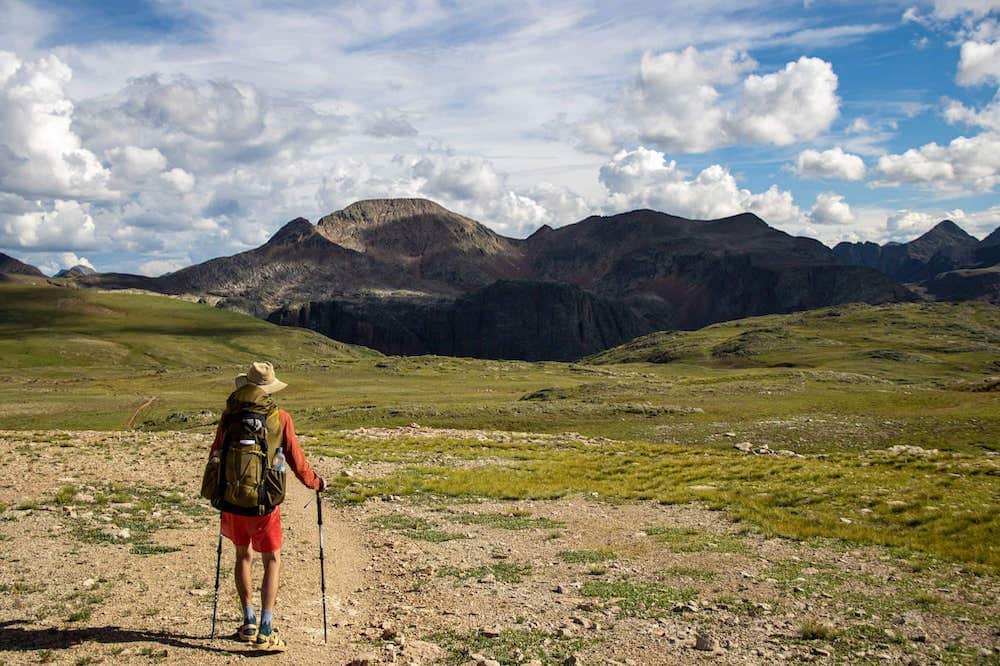
photo by Caleb Jack
Colorado Trail
- Length: 500 miles (804.67 km) from Denver to Durango.
- Difficulty Level: Difficult, requiring multi-day hikes across rocky terrain with steep ups and downs.
👉 The Colorado Trail is one of the state’s most iconic backpacking trail s and it offers an incredible range of outdoors experiences. Spanning nearly 500 miles from Denver to Durango, it passes through six national forests and wilderness areas including Rocky Mountain National Park.
It is a difficult trail requiring multi-day hikes on rocky terrain with plenty of steep ups and downs, but the rewards are countless stunning views. Along its path are postcard-perfect scenes like Hang Lake, Treasure Fall Trails in San Juan Mountains, Tenmile Range Peaks’ view from Copper Mountain Ski resort to Breckenridge Peak 12 & 13 near Frisco.
Popular destinations include Chicago Basin in Weminuche Wilderness where backpackers can explore scenic mountains by choosing 4 Pass Loop or Blue lakes Trail; Crater Lake in Indian Peaks Wilderness; Lost Creek Wilderness Loop offering gorgeous wildflowers and sweeping vistas over Devil’s Thumb to King Lake loop trail; Maroon Bells Four pass Loop overlooking peaks that soar above 14,000 feet are among many of the must see spots along this amazing route.

photo by Taylor Turtle
Continental Divide Trail
- Length: The Continental Divide Trail (CDT) spans over 3,100 miles (4,989.23 km) along the Rocky Mountains, connecting five U.S. states: Montana, Idaho, Wyoming, Colorado, and New Mexico.
- Difficulty Level: Extremely challenging, typically taking 5 months to hike from start to finish on foot.
👉 The Continental Divide Trail (CDT) is one of the most challenging long-distance hiking trails in the United States, spanning over 3,100 miles along the Rocky Mountains and connecting five U.S. states: Montana, Idaho, Wyoming, Colorado, and New Mexico .
The CDT passes through alpine tundra areas in Colorado such as South San Juan Wilderness area, Weminuche Wilderness area and La Garita Wilderness area offering spectacular views of rugged peaks and meadows carpeted with wildflowers. It typically takes 5 months to hike from start to finish on foot.
Hikers on this iconic trail have several options for experiencing it – from multi-day backpacking trips to scenic road trips; allowing you time for day hikes or shorter section hikes.

photo by John Ward
Chicago Basin in Weminuche Wilderness
- Length: 500 miles (805 kilometers)
- Difficulty Level: Difficult, requiring several days
👉 The Chicago Basin Trail in Weminuche Wilderness is one of the best backpacking destination s in Colorado. Located in the rugged heart of the San Juan Mountains, this area is surrounded by 14,000 ft peaks and offers a variety of incredible trekking opportunities.
The basin can be accessed via Durango & Silverton Narrow Gauge Railroad and has been popular with backpackers for years as it provides remote hiking experiences through miles of trails in its wilderness area.
Not only is the area perfect for multi-day trips, but it’s also home to four beautiful 14ers – mountain peaks with an elevation of at least 14,000 feet (4,267 meters) – at Mt Eolus, Windom Peak, Sunlight Peak and several others – making for some spectacular climbing routes too!
Maroon Bells Four Pass Loop
- Distance: Approximately 28 miles (45 kilometers)
- Difficulty Level: Challenging
👉 The Maroon Bells Four Pass Loop is considered one of the best backpacking trails in Colorado, offering trekskers a challenging and rewarding adventure .
Sitting at 12,000 feet in elevation and spanning 28 miles long over four days and three nights , this loop hike takes adventurers into some of the most breathtaking scenery Colorado has to offer.
Starting from the Maroon Bells scenic area it goes through Trail Rider Pass with stunning views of Snowmass Lake before ending up back where hikers started. Along the way, they’ll traverse majestic alpine meadows while making their way across all five biomes found in Colorado: Shrubland/Forest, Foothills, Alpine Tundra/Rocky Mountain Boreal Forest Valleys/Great Plains Grasslands.
The trail offers unique terrain features like shale slides and swamps as well as amazing seasonal wildflowers for color along its journey.
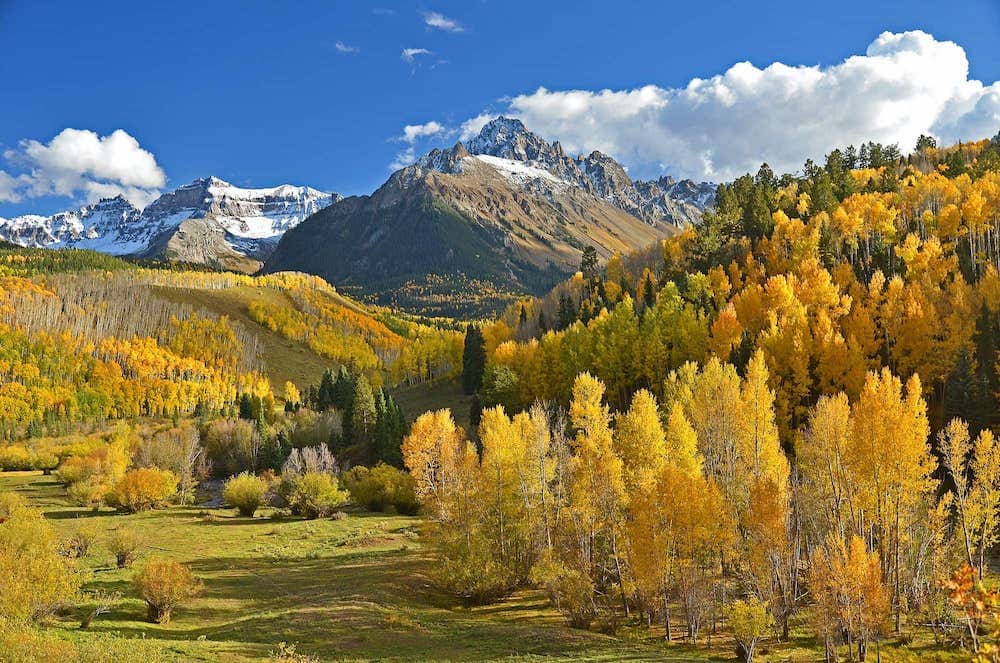
photo by Thomas Morse
Lost Creek Wilderness Loop
- Distance: Approximately 25 miles (40 kilometers)
- Difficulty Level: Moderate to Challenging
👉 The Lost Creek Wilderness Loop is a stunning backpacking trail located in the heart of Colorado. This 28-mile loop loop is considered difficult with its varying landscapes and views . It winds through Hankins Pass, Lake Park Trail, and McCurdy Park Trail with spectacular tree-lined mountain parks, granite domes and arches ; this journey takes an average of 13 hours and 40 minutes to complete.
When you’re traveling along these wilderness paths, make sure to keep your eyes open for wild animals like black bears, bighorn sheep deer or elks on the way! An additional enticement for swimmers are various lakes built over time which have been reserves as campsites along the way – sweet relief after trekking 187 square miles within wilderness area at about 50 miles from both Denver & Colorado Springs!
Devil’s Thumb to King Lake Loop
- Length: 14.75 miles (23.7 kilometers)
- Difficulty Level: Moderate
👉 Devil’s Thumb to King Lake Loop winds through breathtaking forests and alpine meadows in Indian Peaks Wilderness , located north of Boulder, Colorado.
Hikers can enjoy stunning mountain views, cascading streams and wildflowers beginning from the trailhead at Devil’s Thumb Lake – one of the popular destination points on the loop. As you continue along this challenging trail, trekking up steep sections that offer unparalleled sights of Rocky Mountains – with Lone Eagle Peak standing tall among them – hikers will make their way towards connecting routes such as High Lonesome Trail leading to King Lake before returning back along same route to Devil’s Thumb Lake for a memorable journey.
Not only does it present an opportunity to explore the fascinating wilderness region but also offers a chance to appreciate its diverse wildlife and flora while walking amongst mesmerizing beauty that surrounds it all yearlong!
Crater Lake in Indian Peaks Wilderness
👉 The Crater Lake route is located in Grand County, and offers spectacular views of Colorado’s majestic mountains and wild landscapes on a challenging 17-mile round trip hike up to an incredible 2,298 feet in elevation gain.
With its wild setting , Crater Lake provides backpackers with unforgettable mountain vistas unparalleled by other hiking destinations. Along the way campers can take in pristine alpine lakes surrounded by lush wilderness areas that create truly breathtaking scenes.
For those seeking even more adventure without traveling far from Crater Lake, other hikes including Monarch Lake to Crater Lake and Lone Eagle Peak provide added challenge while still providing stunning backcountry experiences found within the Indian Peaks Wilderness .

photo by Matthew Hernandez
Zirkel Circle
- Distance: Approximately 11 miles (17.7 kilometers)
👉 The Zirkel Circle Trail near Steamboat Springs is an 11-mile loop hike takes you through the stunning Zirkel Wilderness , an area of 159,935 acres managed by the U.S. Forest Service and traversing across two different trails – Gilpin Lake and Gold Creek Lake Trails .
It is popular among both beginner backpackers and experienced hikers alike due its challenge yet manageable nature as it allows them to take in all the spectacular landscape en route like wildflowers, rugged peaks, expansive meadows, scenic forests and alpine lakes – absolutely perfect for a memorable Colorado backpacking experience!
Entry level backpacking trails offer hikers of all levels the opportunity to discover the beautiful wilderness areas in Colorado, including Early Season Backpacking in the Lost Creek Wilderness, Mohawk Lakes near Breckenridge, and a beginner-friendly route at Fairplay.
Early Season Backpacking in the Lost Creek Wilderness
Lost Creek Wilderness in Colorado is a popular destination for early season backpacking, offering beginner-friendly trails , stunning landscapes and unique experiences. Lost Creek Wilderness is often the first area to open for backpacking in the Colorado high country and the last to close, making it an attractive choice for hikers looking to hit the trail as soon as possible.
Popular destinations within Lost Creek Wilderness include Ute Peak Trailhead, Hessie Trailhead and Goose Creek Trailhead. Wildflower displays dominate during springtime when mountain creeks are rushing down its bountiful valleys, while its expansive aspen forests provide ample space late summer long into autumn.
The 28 mile long Lost Creek Wilderness Loop will take one through impressive granite formations with towering peaks , alpine lakes and above treeline views . Additionally experienced backpackers can opt for either short duration hikes or tougher multiple day challenges such as scaling Lone Eagle Peak or tackling 14ers in Chicago Basin – there’s something here for every type of backpacker!
For those just getting into backpacking, some great introduction trails are the Hessie Trail including trekking up —> to summit near Death Pass before heading over toward Indigo Lake where you can pitch camp under millions of stars, surrounded by breathtaking scenery.
Mohawk Lakes Trail near Breckenridge
👉 Offering stunning mountain views , two beautiful alpine lakes, a waterfall , and some exciting mining ruins for exploration, the Mohawk Lakes backpacking trail near Breckenridge is one of Colorado’s best beginner-friendly hikes.
Located 3.3 miles from downtown Breckenridge, this hike leads through varied terrain including open meadows and dense forests before reaching the awe-inspiring two lakes: Upper Mohawk Lake at a higher elevation than Lower Mohawk lake.
The trailhead for start of the trip can be easily accessed via Village Road in Breckenridge with additional options for lodging nearby. The child-friendly hike requires some scrambling at points but rewards trekkers with picturesque waterfalls and old mining ruins along its route to Wildflower Heaven on Earth!
Buffalo Peaks Loop , Fairplay
- Length: 7 miles (11 kilometers)
Located just south of Fairplay, the Buffalo Peaks Loop is one of Colorado’s most enjoyable and scenic routes for beginner backpackers . This high-alpine loop offers views of two peaks in the Mosquito Range and several alpine lakes and meadows.
It’s a great spot to gain experience without having to commit to a huge distance or difficult elevation changes since the trail can be finished in less than a day with just over 1,500 feet in total elevation change.
With its peaceful atmosphere, diverse landscape, and abundance of wildflowers–Buffalo Peaks Loop is ideal for those starting out as backpackers who want more from their adventure than simply getting all your gear set up!
Along this route, you’ll get sweeping vistas of high mountains covered by evergreens forests while also enjoying an abundance of wildlife such as elk, deer, bighorn sheep, or even moose roaming through the area.
Intermediate level hiking offer a great balance of challenge and potential for adventure, with routes such as the Backpacking to Lone Eagle Peak , Wildflowers from Crested Butte to Aspen , Colorado 14ers in the Chicago Basin , and Willow Lakes in the Gore Range.
Backpacking to Lone Eagle Peak
- Length: 14.8 miles (23.8 kilometers)
Located in Colorado’s Indian Peaks, Lone Eagle Peak is known for its mix of beauty and challenging backpacking trails . This hike to the summit has an elevation gain of over 2,000 feet and involves a strenuous climb with a full pack.
While hiking this trail, you will cross into 17 different permit zones, as per quota limit within the wilderness which offers some of best backcountry hiking opportunities across Colorado state.
The breathtaking sights along the way include waterfalls (like Cascade Falls ) and iconic peaks like Lone Eagle Cirque where hikers take can take once in a lifetime photos of landscapes along their journey.
Crested Butte to Aspen
From early spring to late summer, Crested Butte to Aspen provides nature enthusiasts with an array of vibrant and colorful wildflowers . The mountainous valleys between Crested Butte and Aspen are carpeted in a myriad of blues, purples, pinks and yellows.
Commonly seen species include the Colorado Columbine, Indian Paintbrush, Avalanche Lilies, Fireweed and Blazing Stars. One especially unique species is the Colorado state flower – the Aspen Sunflower – which blooms around August in some years providing hikers with fields of golden petals that stretch as far as the eye can see.
All these dazzling flowers bring life to this region of Colorado’s wilderness; creating stunning landscapes throughout every season sure to make any hiker’s journey unforgettable!
Backpacking Colorado 14ers in the Chicago Basin
- Length: 21-38 miles (33.80 – 61.26 kilometers)
The Chicago Basin in Colorado is one of the most popular backpacking destinations offering stunning views , challenging trails and the opportunity to climb three 14ers – Mount Eolus, Sunlight Peak and Windom Peak – in one amazing trip.
This strenuous hike totals has an elevation gain of approximately 8,000 ft (2,438 m) . Due to its difficulty level, this trek is often listed among the best backpacking routes in Colorado for experienced hikers looking for a remote wilderness experience .
From wildflowers to breathtaking views and high altitude forests, there’s something magical about hiking these 14ers that captivates outdoor enthusiasts from all around the world. With proper preparation including obtaining permits and mapping out your route ahead of time you’ll be sure set out on a safe adventure worthy of bragging rights!
Backpacking Willow Lakes in the Gore Range
Offering a challenging mix of steep inclines , rugged trails and stunning views , the trek to Willow Lakes is a must-visit destination for backpacking enthusiasts in the Summit County area.
The area is known for its abundant wildflowers , providing hikers with an unforgettable experience when seeking out scenic mountain beauty. As you make your way along the Gore Range Trail between Boulder Lakes and the split to Willow Lakes expect some hot and dusty sections which will test anyone’s stamina before they reach their final destination.
For those who survive these inclines, Upper Willow Lake awaits along with Salmon Lake both of which sit beautifully amongst Eagles Nest Wilderness famed jagged mountains as well as blooming alpine meadows dotting landscape on all sides – perfect for experienced adventurers seeking intense physical exercise tinged with awe inspiring sights!
Advanced backpacking trails in Colorado include Aspen’s Four Passes Loop, the Colorado Trail’s highest thru-hike in America, Lone Eagle Peak, and Wildflowers from Crested Butte to Aspen.
Backpacking Gore Lake, the Best Alpine Lake in Colorado
- Length: 13 miles (20.92 kilometers)
Located in the Gore Range of Vail, Colorado , Gore Lake is considered to be one of the best alpine lakes in the entire state for backpacking. This trail offers an exciting and challenging experience that winds through aspen groves, meadows filled with wildflowers, and stands of pine trees.
Along this path lies a stunning lake whose sandy shore resembles that of a beach giving it its nickname ‘Sandbeach Lake’. Backpacker’s will find breathtaking landscapes along their route while exploring the beauty of nature situated atop 12 415 feet above sea level.
This incredible destination also provides convenient access to beautiful alpine lakes near Vail making it ideal for both beginners and seasoned backpackers alike looking for easy or difficult treks around majestic mountain ranges amidst lush green terrain secluded by crystal clear streams cascading into shimmering blue waters offering angling opportunities accompanied by mesmerizing views fit to steal your breath away time and time again!
Aspen’s Four Passes Loop
- Distance: Approximately 26 miles (41.8 kilometers)
This loop is a renowned 26 mile (42 km) backpacking route located in the Maroon Bells – Snowmass Wilderness of Colorado. It’s an iconic multiday trip that takes approximately 3-4 days to complete, climbing over four 12,000+ ft passes and offering breathtaking views and stunning scenery throughout.
Hikers start at Aspen’s iconic Maroon Bells, known for its magnificent beauty, eventually making their way around the full loop before returning to the same starting point. The Four Pass Loop is immensely popular among backpackers, hikers and campers alike due to its immense natural beauty and international reputation as an authentic outdoor experience.
When finishing this challenging hike there are usually tears of joy from those completing it – displaying how emotionally powerful of a journey this loop truly is! The trail offers diverse terrains including high alpine lakes, wildflower meadows and dense forests with plenty opportunities to spot elk or deer along the way.
The Colorado Trail: The Highest Thru-Hike in America
Hikers from all over the world flock to Colorado to experience its spectacularly rugged terrain and breathtaking natural views – but no backpacking trip would be complete without treading a section of The Colorado Trail.
Stretching 486 miles along some of America’s highest – and most challenging – mountainous trails, this thru-hike is considered by many dedicated hikers as one of their ultimate bucket list experiences.
From Denver to Durango , gapless single track provides an unparalleled journey through diverse terrain during which hikers can take in serene meadows , babbling brooks such as Jefferson Creek at 10,000 feet elevation and rugged Gore Lake in the Gore Range alpine lake.
Whether taken on for part or all of it’s length — prepare for brisk weather that changes frequently so suitable clothing needs to meet warm Summer days and chilly nights alike.
Sky Pond via Glacier Gorge Trail , the Best Backpacking Route in Rocky Mountain National Park
Rocky Mountain National Park is considered by many to be one of the best backpacking destinations in the state of Colorado. The Sky Pond via Glacier Gorge trail is arguably its most popular, combining challenging terrain , jaw-dropping views and unforgettable alpine scenery .
This eight-mile roundtrip route begins with a steep ascent through wooded pine forests before winding up at the awe-inspiring Sky Pond lake. From here, trekkers can take in magnificent views of nearby mountains and other landmarks like Hallet Peak, Black Lake and Taylor Peak as they continue their journey around the loop.
Trekking along such a scenic route definitely demands a moderate level of fitness as it involves climbing large rock steps and traversing numerous switchbacks with some sections that are even quite exposed have been known to cause vertigo in novice hikers – so safety should always remain top priority during your adventure here!
Those looking for an easier experience may prefer exploring part of the Tonahutu Creek Loop Trail , which meanders through open meadows full of wildflowers amidst staggering mountain peaks just beyond reach.
Staying safe and prepared on the trails is essential for a successful backpacking journey in Colorado – read on to discover more!
Prepare for changing weather conditions
Colorado is well-known for its unpredictable weather and rapid changes in climate. Backpackers should be aware of the ever-changing weather patterns of Colorado, especially when they are traveling higher elevations and further away from civilization.
Dressing in layers is key to preparedness as temperatures can vary greatly even over a few hours. It’s also essential to keep an eye out for storm clouds coming up from the west, which are common during summer afternoons.
Before any backpacking trip it’s crucial to double check the weather forecast as conditions can change rapidly at higher elevations or deeper parts of Colorado’s wilderness areas. Expect variations in temperature, precipitation, wind speed and direction throughout your journey – thunderstorms, lightning strikes, snowfall and hail all occur on occasion along trails like The Colorado Trail at higher altitudes so be sure you’re carrying sturdy shelter if there is a chance of inclement weather.
Researching historical data for the area you plan on visiting may help provide insight into expected temperature swings as well; for instance Rocky Mountain National Park often experiences bursts of cold air arriving suddenly from Canada with accompanying wintry mix that can thicken quickly making snowshoeing necessary even in mid-summer months.
Pack lightweight and versatile gear
Packing the right gear and clothing for backpacking in Colorado is essential to ensure a rewarding trip. Lightweight and versatile pieces like convertible hiking pants , customizable jackets , and other multifunctional apparel can help minimize weight while accommodating changing conditions on the trail.
Additionally, having lightweight items that offer dual purpose—like an insulated jacket also serving as a quilt—can save space without compromising comfort or convenience. Backpackers should stick to technical fabrics that are lightweight yet durable enough; backpackers should opt for materials such as nylon or ripstop construction which provide needed durability against abrasion, water resistance, temperatures fluctuations, etc., all of which occurs naturally in Colorado’s diverse backcountry terrain .
By packing lightweight and versatile gear tailored to suit outdoor environments like those found in Colorado’s wilderness areas, backpackers have greater confidence and increased chances of succeeding on lasting adventures through scenic trails within the Centennial State.
Carry sufficient water and food
When venturing into the backcountry of Colorado, it is essential to bring enough water and food to stay hydrated and nourished throughout the trip. Dehydration is a serious risk in high-altitude environments, while inadequate nutrition can lead to exhausted energy levels or even hypothermia during colder months .
Local experts advocate carrying ample amounts of water as well as non perishable items such as grains, nuts, dried/canned fruits, jerky for adequate sustenance when hiking in Colorado.
It’s important to calculate how much each person needs per day and plan accordingly before setting off on your journey. Even short hikes should involve bringing more than one liter of water plus an extra snack just in case!
Follow Leave No Trace principles
The Leave No Trace Center for Outdoor Ethics provides seven principles that offer a framework for minimal impact practices for outdoor enthusiasts such as backpackers. These principles are essential to ensure the preservation of Colorado’s natural places and their beauty.
By preparing ahead, following wildlife regulations, minimizing campfire impacts, respecting other visitors’ experiences, disposing of waste properly and leaving natural artwork undisturbed we can promote responsible outdoor behavior in Colorado.
Following the Leave No Trace Principles is also important to reduce human-related environmental damage by encouraging travelers to be mindful of how they travel through landscapes so as not cause any harm or disruption.
It’s important to know the season, necessary permits and safety considerations before planning a backpacking trip in Colorado.

Backpacking season in Colorado
can be variable due to the weather, but typically runs from late May/early June through mid-September. The best time for backpacking in Colorado is during the summer months when days are longer and temperatures are warmer.
However, storms and afternoon thunderstorms are a real hazard so backpackers need to plan accordingly and prepare for changing conditions throughout their trip. The elevation of areas also has an impact on the temperature changes; higher altitudes tend to be colder than lower elevations which makes it important to bring extra layers of clothing regardless of the season.
Rainy or snowy weather may occur at any time so hikers must always carry rain gear as well as warm attire such as waterproof jackets, fleece tops, insulated pants, gloves and hats.
Preparing for your trip
It’s essential to prepare thoroughly before embarking on a backpacking trip in Colorado. Here are some important steps to consider:
- Research to select an appropriate route and destination for your skills, experience and interests.
- Ensure you have the right backpack that fits comfortably with everything you need for the duration of your trip.
- Always carry the “Ten Essentials” when hiking in Colorado (map, navigation device, first-aid supplies, knife/tool, flashlight/headlamp, extra clothing layers and waterproofs, firestarter kit, food & snacks plus 1+ liter water capacity).
- Pack lightweight and versatile gear including basic items like tent or tarp shelter; sleeping bag & pad; cooking system; eating utensils like plates/bowls and cup or mug; hygiene items such as toothbrush & biodegradable soap etcetera..
- Make sure all necessary permits are obtained prior to departure if required by area regulations for your selected location( camping permits etc.).
- Seek advice from local experts who can recommend good hikes depending upon the season conditions of specific areas in Colorado at given time period7Practice safe backpacking techniques such as bearing navigational knowledge ;carrying bear spray if needed preparedfor potential hazards & wildlife encounters travelling slowlyin stairs while venturing uphills wearing sturdy bootswith traction keepinggroup size small consideringwhere one should store their food appropriately 8 And always tell someone aboutone’s plansbefore going out on abackpacker trail !
Safety considerations and precautions
While outdoor activities such as backpacking in Colorado come with inherent risks, there are precautions you can take to stay safe.
- Make sure you are well aware of COVID-19 guidelines before heading out on a backpacking trip.
- Maintain physical distance from other hikers, wear necessary personal protective equipment and carry extra supplies to mitigate virus transmission.
- Take safety measures against accidental encounters with wildlife while hiking in Rocky Mountain National Park or the wilderness areas of Colorado.
- Make sure your pack includes essential gear – a map, compass, first-aid kit, fire starter, medications, insulated blanket or jacket, extra food and water.
- Follow the safety tips outlined by The Colorado Trail for a stress-free journey across America’s highest thru hike trail system.
- When camping or hiking near bear country , double-bag all food items and keep them away from your tent or vehicle at night. Avoid approaching bears at any cost, feeding them, or trying to get too close for pictures—remember they’re wild animals!
Required permits and regulations
When backpacking or day-hiking in Colorado, make sure you’re familiar with the requirements for permits and regulations . Depending on which natural area you will be visiting, you may need one or more in order to access the area or camp overnight.
Popular permit areas include wilderness areas like Rocky Mountain National Park and Indian Peaks Wilderness ; some trails are subject to special regulation and require the purchase of a backcountry permit before accessing them.
State Wildlife Areas also have their own set of rules that must be followed when visiting – notably requiring permits from the Colorado Parks and Wildlife (CPW). Other locations such as state parks require passes for access, these can range from daily passes up to annual park admission fees depending on your needs.
Backpacking in Colorado is a particularly unforgettable experience that offers stunning landscapes , diverse terrains , and unique opportunities for exploration . With hundreds of beautiful trails across the state from beginner-friendly routes to Alpine passes adventure seekers can find the perfect backpacking route.
Short day hikes or multi-day adventures offer hikers unparalleled access to natural beauty whether through rocky peaks, alpine lakes, or verdant valleys – all with breathtaking views.
Famous trail like the Continental Trail Divide Loop and Maroon Bells/Four Pass Loop are just some of the must^visit experiences for backpackers visiting the Rocky Mountains while novice adventurers have plenty to take on as well at locations like Lost Creek Wilderness loop or Mohawk Lakes Backpacking near Breckenridge.
With an abundance of wildlife sightings and vast open areas within many national parks in Colorado it remains one of America’s premier backpacking destinations worth exploring again and again.
Related Posts:
- Best Backpacking Trails in the US
- The Best California Backpacking Trips for Adventure Junkies
- The Best Backpacking In Washington
- The Best Wilderness Camping in California: Exploring Nature’s Delights
- Non-Toxic Slumber with PFA / PFC-Free Sleeping Bags
- Ultralight Tents Under 3 Pounds

The Ultimate Guide to Backpacking

A Guide to the Best Yosemite Backpacking Trails

Anker PowerHouse 767 vs EcoFlow Delta 2 Max: How Do They Compare?

Bluetti vs EcoFlow: Which is Best?

Stoke Voltaics Electric Kettle Pot Review

The Best Camping In Wisconsin: State Parks, Lakeshores, And More!
Fair Trade Finder provides online shopping recommendations of products that promote fair trade, sustainable, ethical and organic products and services. We also hug puppies on a daily basis. Bio Site
Privacy Policy | Cookie Policy
Eco Camping
Camping Guides
Non Toxic Tents Without Flame Retardants
Non Toxic 4 Person Tents
Non Toxic 8 Person Tents
Sustainable Tents Made From Recycled Materials
Non Toxic Waterproof Tents
Portable Power Stations
Sustainable Products
Sustainable Camping Gear
Products Made From Recycled Materials
Best Vegan Waterproof Shoes
Best Vegan Sandals Brands
15+ Vegan Leather Bags
25+ Vegan Clothing Brands
30+ of the Best Vegan Sneakers
Sign up to receive updates, discounts and sales.

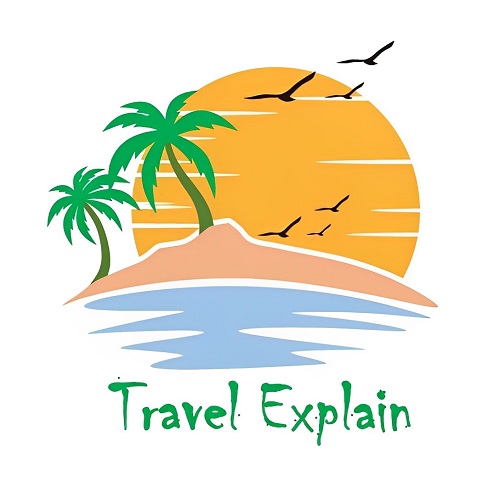
Best Backpacking in Colorado | The Ultimate Guide

Affiliate Disclaimer: This post may contain affiliate link or links
Best Backpacking in Colorado: Colorado is a backpacker’s paradise, offering a diverse range of landscapes and trails for unforgettable outdoor adventures.
With its soaring mountains, picturesque alpine lakes, and vast wilderness areas, the state has become a top destination for backpacking enthusiasts.
In this comprehensive guide, we will delve into the best backpacking experiences Colorado has to offer, from selecting the right trails to packing essential gear and ensuring your safety on the journey.
So, get ready to embark on an unforgettable backpacking expedition through the stunning wilderness of Colorado!
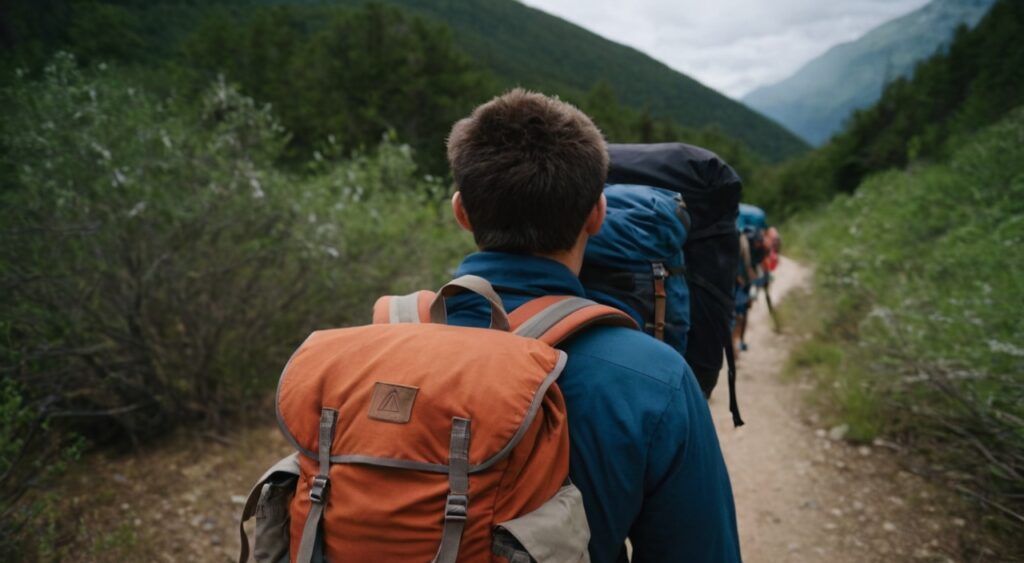
Best Backpacking in Colorado
Backpacking is an immersive way to experience the beauty of nature and escape the hustle and bustle of everyday life.
And when it comes to backpacking in Colorado, the options are limitless. Whether you’re a beginner or an experienced backpacker , the state offers trails that cater to all skill levels.
From the towering peaks of the Rocky Mountains to the serene beauty of the San Juan Mountains, you’ll find adventure around every corner. Let’s dive into the planning process and explore the best backpacking trails Colorado has to offer.
Planning Your Backpacking Trip in Colorado
- Researching and Selecting the Best Backpacking Trails
- Factors to consider: difficulty level, scenery, trail conditions, and availability of permits.
- Top backpacking trails in Colorado: Maroon Bells-Snowmass Wilderness, Indian Peaks Wilderness, and Colorado Trail.
- Online resources to find detailed trail information.
- Duration and Difficulty Level of the Trip
- Determining the length of your backpacking trip based on available time and fitness level.
- Understanding the difficulty ratings of trails and choosing the appropriate level for your experience.
- Gathering Necessary Information on Permits and Camping Regulations
- Researching permit requirements and reservation systems for popular backpacking destinations .
- Familiarizing yourself with camping regulations, including designated campsites and campfire restrictions.
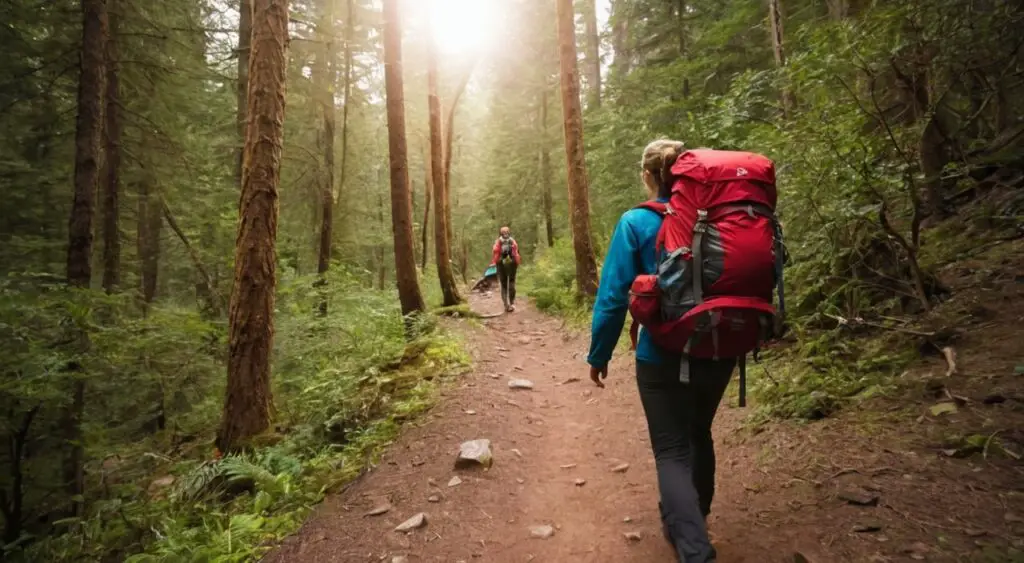
Essential Gear for Colorado Backpacking
Before setting off on your backpacking adventure , it’s crucial to equip yourself with the right gear and clothing to ensure comfort and safety along the way. Consider the following essentials:
- Backpacking Essentials Checklist
- High-quality backpack fitting your body type and gear requirements.
- Sleeping bag, tent, sleeping pad, and camping stove.
- Navigation tools like a map, compass, or GPS device.
- Multi-tool, headlamp, and other miscellaneous items for convenience.
- Recommended Clothing and Footwear for Different Seasons
- Layering system for versatile clothing options in changing weather conditions.
- Sturdy hiking boots and moisture-wicking socks for comfort and foot protection.
- Rain gear, sun protection, and warm layers for unpredictable mountain weather.
- Tips on Choosing the Right Backpacking Gear
- Evaluating gear based on weight, durability, and functionality.
- Recommendations for lightweight and compact gear options.
- Renting or borrowing gear for beginners before investing in expensive equipment.
Preparing Your Backpacking Food and Water
Food and water are essential considerations for any backpacking trip. Proper planning and preparation will ensure you have nourishment and hydration throughout your adventure in the Colorado wilderness.
- Importance of Carrying Lightweight and Nutritious Food
- Pack lightweight, calorie-dense foods to fuel your body during strenuous hikes.
- Focus on dehydrated meals, energy bars, nuts, and dried fruits for easy storage and preparation.
- Consider dietary restrictions and personal preferences when selecting backpacking meals .
- Water Purification Methods for Backpacking Trips
- Various methods for treating water in the backcountry: filtration, chemical treatment, and boiling.
- Lightweight water filtration systems and purification tablets as convenient options.
- Locating reliable water sources and planning water resupply points along the trail.
- Suggestions for Cooking and Storing Food on the Trail
- Lightweight camp stoves and cookware options for backpacking meals.
- Proper food storage techniques to prevent encounters with wildlife.
- Leave No Trace principles for responsible waste disposal while backpacking in Colorado.
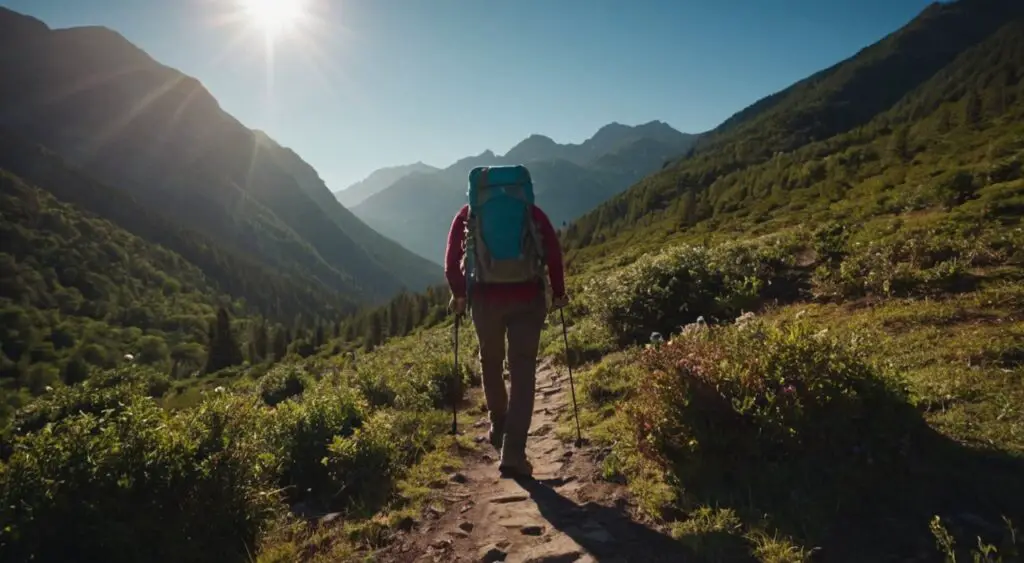
Safety Considerations for Colorado Backpacking
The safety of backpackers is paramount, and taking necessary precautions ensures a successful and worry-free outdoor experience. Be sure to prioritize safety by considering the following:
- Understanding the Potential Hazards in Colorado’s Wilderness
- Recognizing common risks: altitude sickness, wildlife encounters, and adverse weather conditions.
- Conducting thorough research on specific trail conditions and potential hazards.
- Seeking advice from experienced backpackers or local authorities.
- Tips for Staying Safe during Backpacking Trips
- Proper trip planning, including sharing itineraries with family or friends.
- Maintaining situational awareness on the trail and being prepared for unexpected situations.
- Navigation skills and familiarity with trail maps to prevent getting lost.
- First Aid Essentials and Knowledge for Emergencies
- Assembling a comprehensive first aid kit tailored to backpacking needs.
- Basic knowledge of first aid procedures for common injuries and ailments.
- Understanding when it’s necessary to seek professional medical help in remote areas.
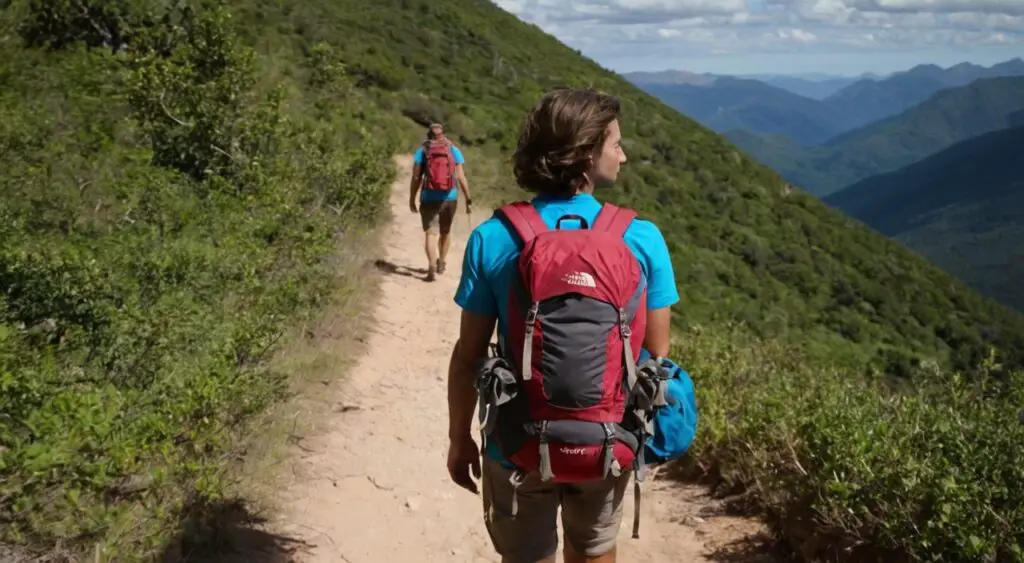
Leave No Trace Principles for Backpacking in Colorado
Preserving the pristine beauty of Colorado’s wilderness is incredibly important for future generations. Follow these Leave No Trace principles to minimize your environmental impact while backpacking:
- Educating on the Leave No Trace Ethics
- Overview of the seven Leave No Trace principles.
- Understanding the importance of responsible outdoor recreation.
- Applying the Principles to Minimize Environmental Impact
- Proper disposal of waste, including human waste and trash.
- Respecting wildlife and their habitats by observing from a distance.
- Leaving natural objects undisturbed and avoiding unnecessary alterations to the landscape.
- Importance of Preserving the Natural Beauty of Colorado’s Wilderness
- Encouraging others to adopt Leave No Trace practices.
- Engaging in volunteer opportunities to help maintain trails and wilderness areas.
- Being a steward of the environment and setting an example for future backpackers .
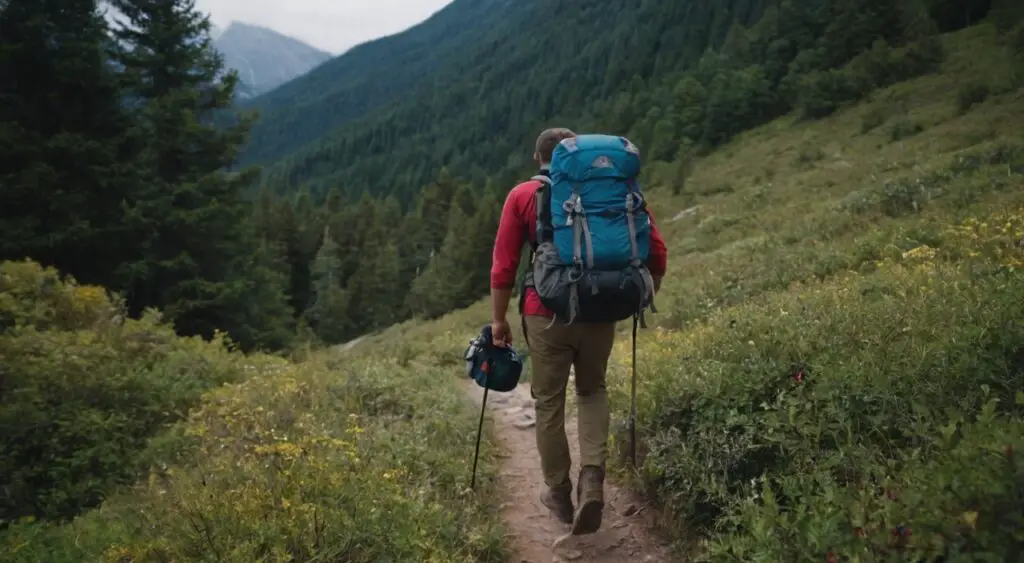
Wildlife Encounter Tips for Backpackers in Colorado
Encountering wildlife is an exhilarating experience, but it’s essential to understand how to safely interact with Colorado’s diverse array of animals. Stay informed and follow these guidelines:
- Common Wildlife Species in Colorado and Their Behavior
- Identification and characteristics of animals like black bears, bighorn sheep, moose, and more.
- Understanding their natural behavior and how to interpret warning signs.
- Appropriate Actions during Wildlife Encounters
- Maintaining a safe distance and never approaching or feeding wildlife.
- Reacting calmly and making yourself appear larger if confronted.
- Understanding the specific recommendations for encounters with different species.
- Tips for Storing Food and Garbage to Avoid Attracting Animals
- Proper techniques for storing food securely to prevent wildlife from accessing it.
- Utilizing bear canisters or hang systems to protect food and minimize wildlife conflicts.
- Keeping a clean campsite and packing out all trash responsibly.
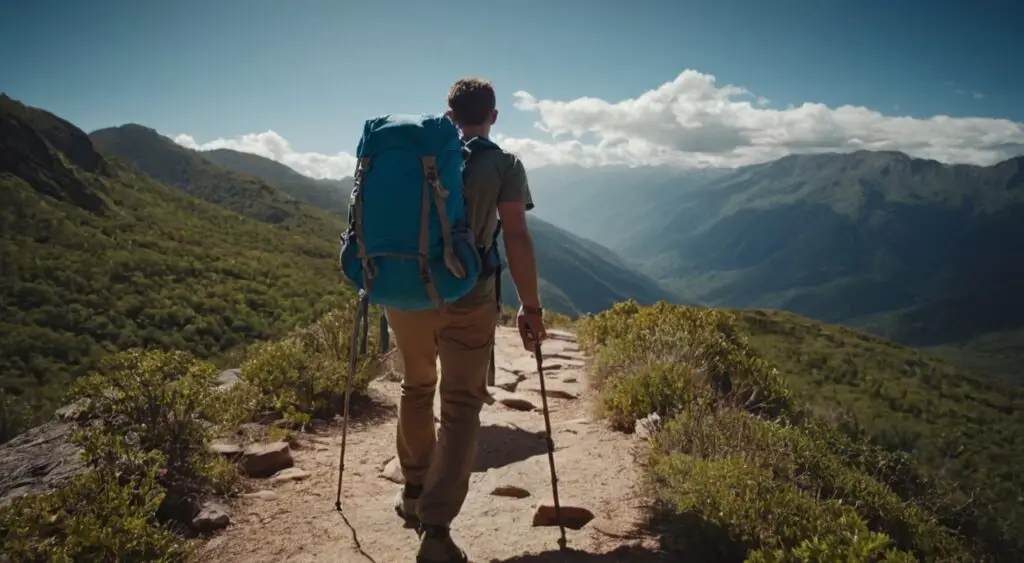
Photography Opportunities and Tips for Backcountry Backpacking
Capture the stunning landscapes and memorable moments of your backpacking adventure in Colorado with these photography tips:
- Capturing the Breathtaking Landscapes of Colorado
- Iconic photography locations in Colorado, including Maroon Bells, Great Sand Dunes, and more.
- Tips for composing landscape shots and capturing the beauty of the wilderness.
- Recommended Photography Gear and Techniques
- Cameras, lenses, and accessories suitable for backpacking.
- Techniques for shooting in various lighting conditions and capturing wildlife encounters.
- Post-processing tips to enhance and share your backpacking photos.
- Respecting the Tranquility of Nature While Photographing
- Understanding photography ethics and ensuring minimal disturbance to the environment.
- Considerations for photographing sensitive areas and adhering to any specific regulations.
- Encouraging ethical practices among fellow backpackers and nature enthusiasts.
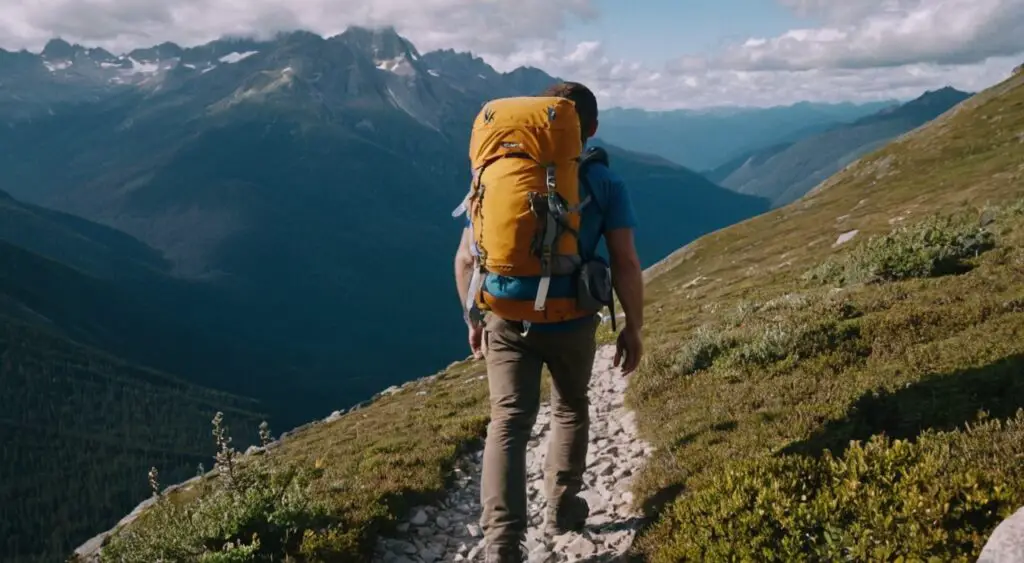
Group Backpacking vs. Solo Backpacking in Colorado
Deciding whether to embark on a solo adventure or join a group for your backpacking trip is a personal choice. Consider the following factors when making your decision:
- Pros and Cons of Backpacking in Groups or Alone
- Benefits of group backpacking , including shared responsibilities and camaraderie.
- Solo backpacking advantages, such as self-reliance and the freedom to set your own pace.
- Tips for Organizing a Group Backpacking Trip
- Determining trip logistics, including setting objectives, assigning roles, and establishing communication systems.
- Group dynamics and fostering a positive and inclusive atmosphere.
- Ensuring proper safety measures and accounting for different skill levels within the group.
- Factors to Consider for a Successful Solo Backpacking Experience
- Extra precautions for solo backpackers , including trip planning and emergency preparedness.
- Building confidence and self-sufficiency through solo adventures.
- Solo backpacking destinations in Colorado suitable for first-time solo backpackers .
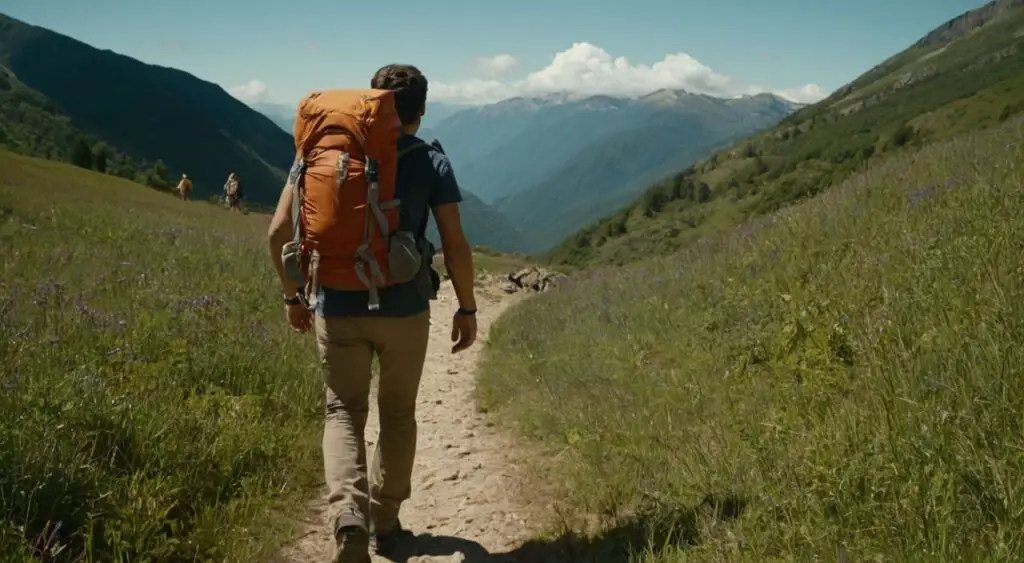
Best Times of the Year for Backpacking in Colorado
Understanding the seasonal variations and weather patterns in Colorado is crucial when planning your backpacking trip . Consider the following information:
- Overview of the Four Seasons in Colorado and Their Conditions
- Spring: wildflowers, melting snow, and potential for unpredictable weather.
- Summer: warm temperatures, busy trails, afternoon thunderstorms, and longer daylight hours.
- Fall: vibrant foliage, cooler temperatures, and more stable weather.
- Winter: cold temperatures, deep snowpack, and potential for avalanche danger.
- Recommended Months for Different Backpacking Trails
- Seasonal considerations for each backpacking destination in Colorado.
- Recommended months for popular trails based on weather and trail conditions.
- Weather Considerations and Preparation for Each Season
- Packing appropriate clothing layers for specific seasons.
- Understanding weather forecasts and adapting your plans accordingly.
- Winter backpacking tips , including avalanche safety and cold-weather gear recommendations.

Colorado offers unparalleled opportunities for backpacking enthusiasts to immerse themselves in the stunning beauty of its wilderness.
By selecting the best backpacking trails , packing essential gear, and prioritizing safety and Leave No Trace practices, you can embark on an incredible adventure through the state’s diverse landscapes.
Gear up, plan your trip, and get ready to experience the best backpacking in Colorado the perfect recipe for lifelong memories and a deep connection with nature’s wonders.
Other related articles

Joseph Benson I love exploring new places and cultures, meeting people from all over the world. And because I am a traveler who is always on the go, never miss an adventure with me.
Leave a Reply Cancel reply
Your email address will not be published. Required fields are marked *
Save my name, email, and website in this browser for the next time I comment.

Latest posts

Best Freeze Dried Backpacking Food
Best freeze dried backpacking food: When it comes to backpacking and hiking, proper nutrition is crucial to fuel your adventures.…

Best Backpacking in Colorado: Colorado is a backpacker’s paradise, offering a diverse range of landscapes and trails for unforgettable outdoor…
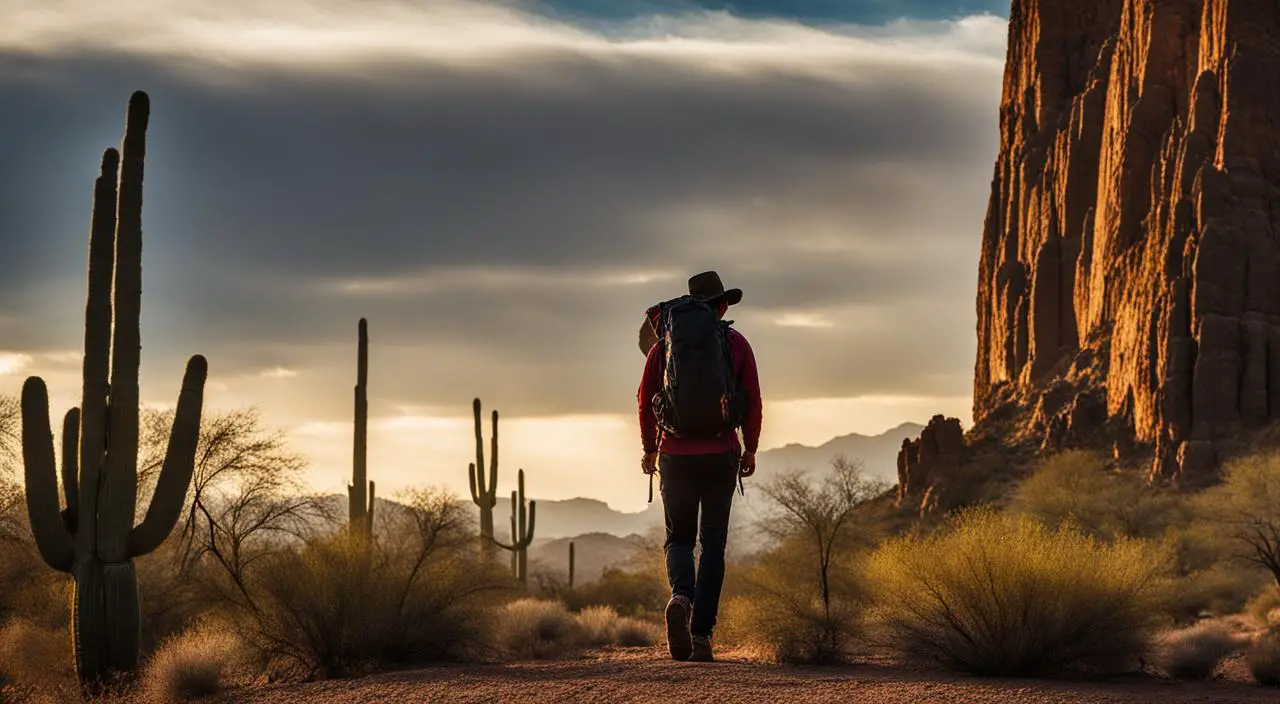
Backpacking in Arizona: Unveiling Hidden Desert Treasures
Backpacking in Arizona is indeed a mind-blowing experience. Arizona is a backpacker’s paradise, with some of the most breathtaking scenery…

Learn how to backpack in the Colorado wilderness:
Get Outdoors
Safely. confidently. guided..

On your guided trip you will learn how to backpack into the Colorado wilderness, stay overnight and return with confidence.
All trips include a drink & cheese meet-and-greet a few days ahead of time, including a gear review of your essential backpacking equipment.

- Include a meet-up in Denver beforehand to coordinate and check gear
- Involve an overnight in the wilderness
- Are limited to a small number of backpackers
- May allow for exclusive groups
- Require some key personal gear
WHAT’S NOT COVERED
- Sherpa services
- Guaranteed bigfoot or UFO sightings

On your trip you will learn how to backpack into the wilderness, stay overnight and return with confidence.
This includes hands-on instruction ahead of time on choosing solid gear, adopting the right approach to your adventure, and practicing the core skills needed to backpack safely in the Colorado wilderness.
- Include an overnight in the wilderness
- Are limited to a small number of hikers
- Require independent travel to the trailhead
WHAT IS NOT COVERED

Overnight Backpacking Adventures
High valley overnight, difficulty: easy, super fun, waterfalls distance: near trailhead (<1 mile) elevation gain: 603 ft. (183 m) elevation loss: 132 ft. (40 m) altitude avg: 9,835 ft. (2,998 m).
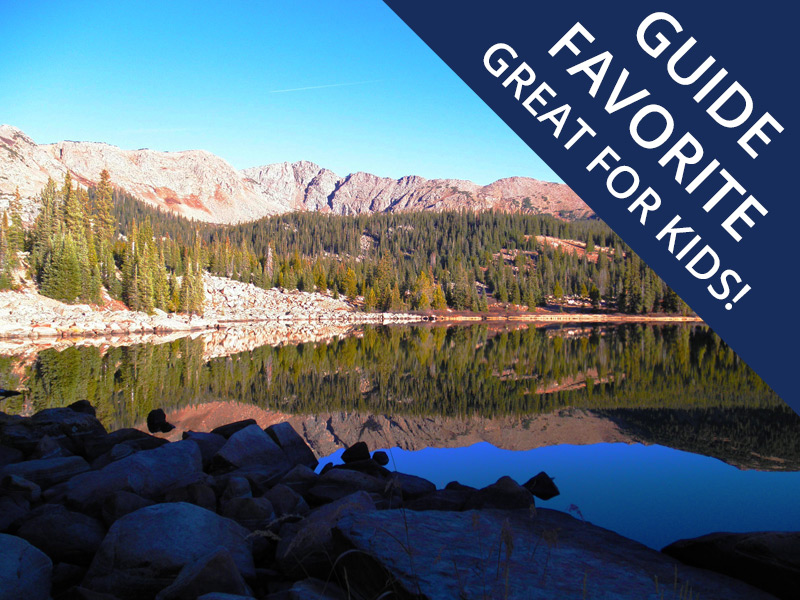
DIFFICULTY: DISTANCE: 1.62 miles (2.61 k) per day ELEVATION GAIN: 425 ft. (130 m) ELEVATION LOSS: 617 ft. (188 m) ALTITUDE AVG: 11,191 ft. (3,411 m)
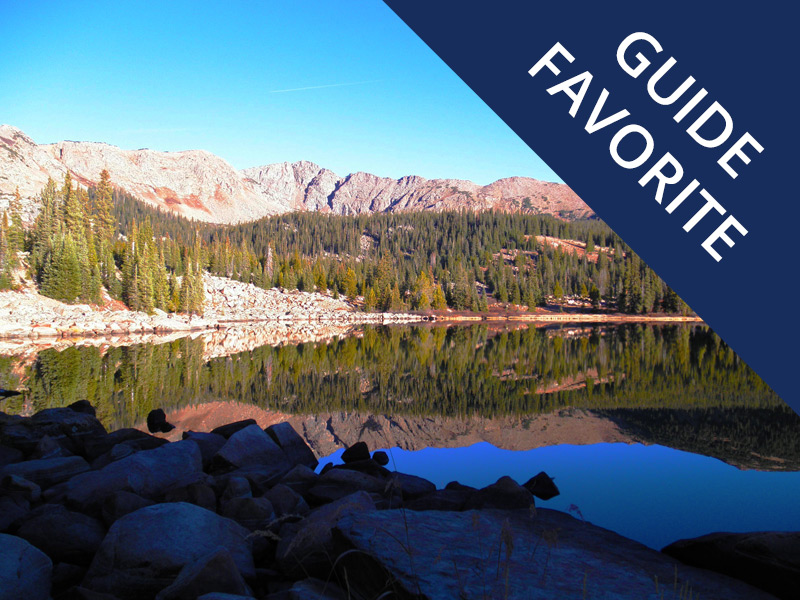
DIFFICULTY: DISTANCE: 3.26 miles (5.25 k) per day ELEVATION GAIN: 1,526 ft. (465 m) ELEVATION LOSS: 546 ft. (166 m) ALTITUDE AVG: 10,839 ft. (3,304 m)

ON THE UFO TRAIL
Difficulty: distance: 3.04 miles (4.89 k) per day elevation gain: 568 ft. (173 m) elevation loss: 114 ft. (35 m) altitude avg: 11,472 ft. (3,497 m), holy cross wilderness, difficulty: distance: 4.12 miles (6.63 k) per day elevation gain: 705 ft. (215 m) elevation loss: 779 ft. (237 m) altitude avg: 10,429 ft. (3,179 m).
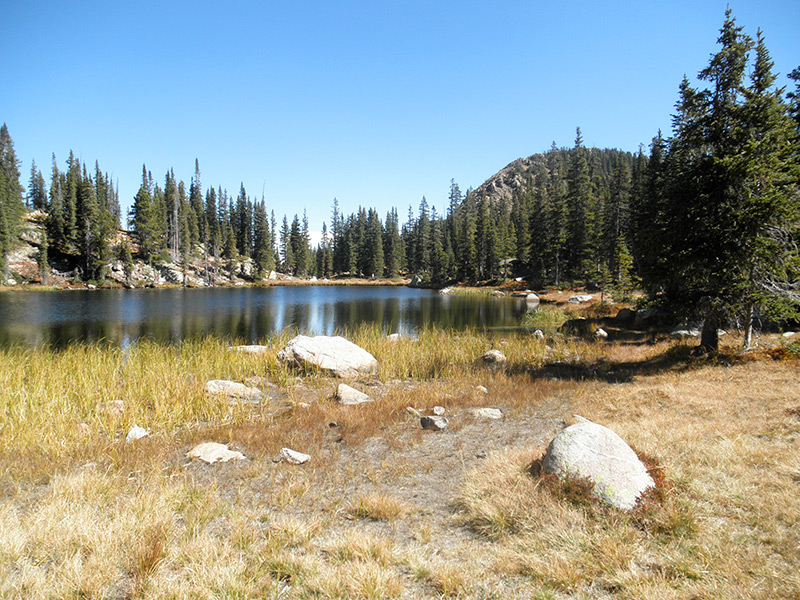
PORCUPINE LAKE
Difficulty: distance: 5.06 miles (8.38 k) per day elevation gain: 2,557 ft. (779 m) elevation loss: 1,140 ft. (347 m) altitude avg: 11,123 ft. (3,390 m).

CAMP HALE HIGHLANDS
Difficulty: distance: 15.2 miles (24.46 k) total elevation gain: 4,532 ft. (1,381 m) elevation loss: 4,374 ft. (1,333 m) altitude avg: 11,087 ft. (3,379 m).

MULTI-DAY ADVENTURES
Adventures spanning several or more days are available. each trip is personalized based on individual or group skill level. some prior backpacking experience is recommended., coming soon.
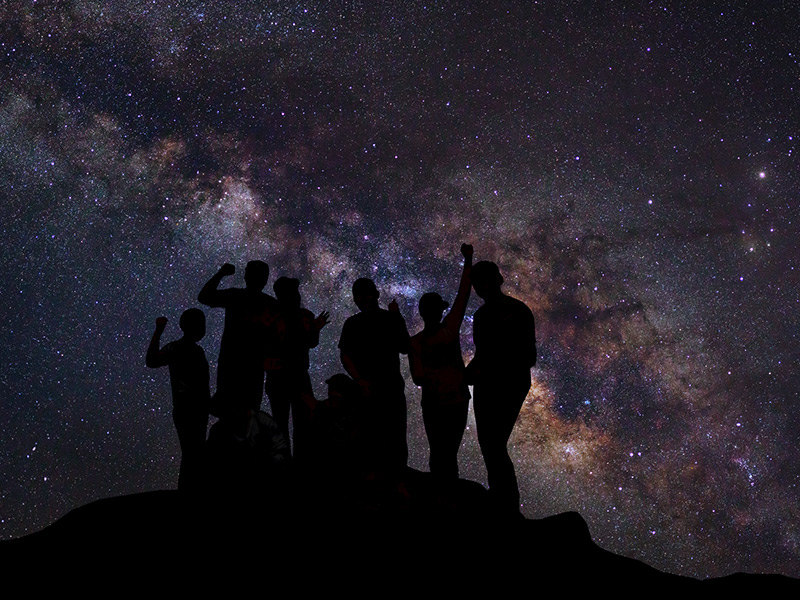
At night the wilderness transforms into a place rarely experienced by humans. Otherworldly and dreamlike, walking the forest at night requires added safety but can be rewarding and even transformative.
Guided trips.
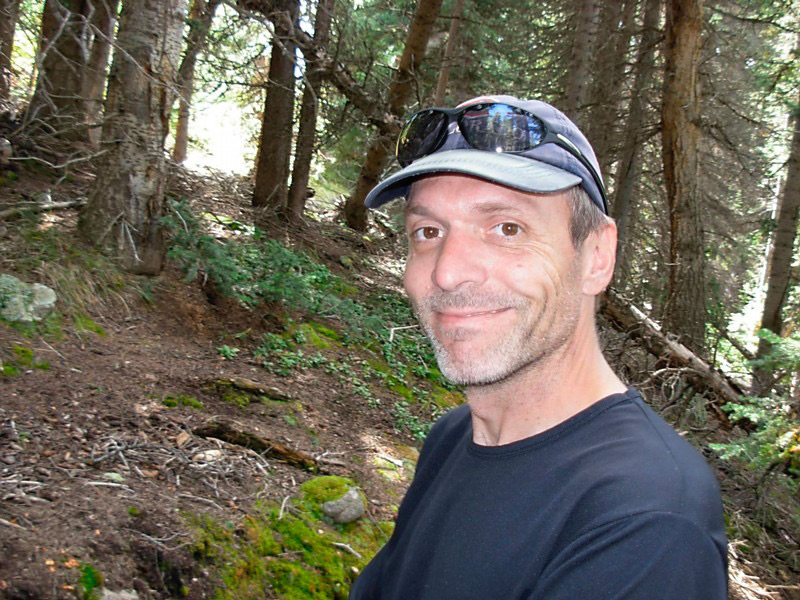
What are you waiting for?

Discover Which Colorado Mountain Town is right for you
Everything You Need to Know to Go Backpacking in Colorado
- March 22, 2020
- By foxintheforest
Last Updated on November 5, 2021 by foxintheforest
As a Colorado local, I’m always itching to spend the night under the stars. Backpacking in the high alpine takes a little bit of getting used to, especially to the uninitiated. Make your Colorado backpacking trip a smashing success with these tips for backpacking in Colorado.
I’ve lived here for over 12 years and scoured the state. Each year I combine my two favorite loves, backpacking and climbing, for an incredible Colorado backpacking experience. I’m dying to give you the inside scoop about how to make your backpacking adventure a smashing success, so let’s dive in.
About this Guide to Colorado Backpacking
This post is the place to find expert, local advice about Colorado backpacking. We’ll cover:
- When to backpack in Colorado
- The best backpacking trips in Colorado
- Colorado backpacking packing list
- Permit information
- Tips and tricks for backpacking Colorado
- Additional Colorado adventure travel resources
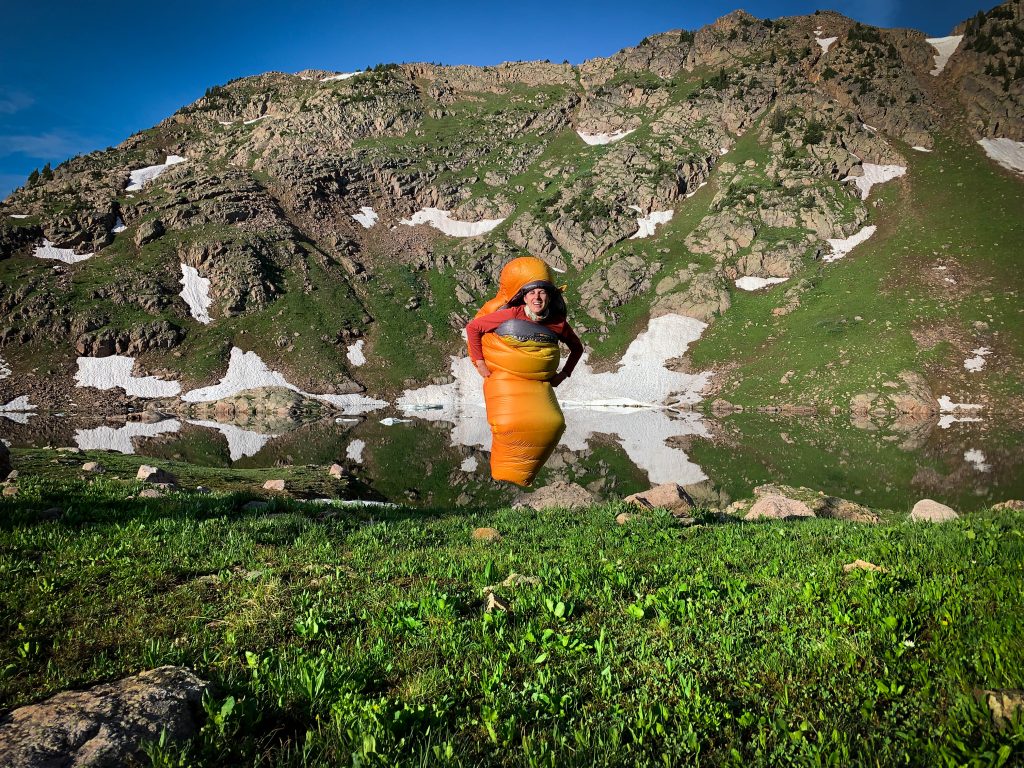
When is the Best Time to Backpack in Colorado?
One of my favorite parts about living in Colorado is that you can backpack Colorado year-round. That’s right! In the winter months, simply head out towards the desert areas of the Western Slope for year-round backpacking.
However, if mountain scenery is what you seek, then the best time of year to backpack in Colorado is from July through September.
Keep in mind, there is still plenty of snow in the mountains in June. Can you backpack? Sure, but you’ll want to stay at lower elevations to avoid camping in the snow.
Related: Best Time of Year to Visit Colorado
Where are the Best Places to Backpack in Colorado?
We are spoiled for choice when it comes to where to go Colorado backpacking. With seemingly endless mountains, beautiful canyons, and unbelievable desert scenery, there’s a lot going on.
For the best places to backpack in Colorado, check out these areas:
- Rocky Mountain National Park
- Lone Eagle Peak in the Indian Peaks Wilderness
- The Maroon Bells – Snowmass Wilderness
- Colorado National Monument and surrounding areas
- South Colony Lakes and the Sangre de Cristo Mountains
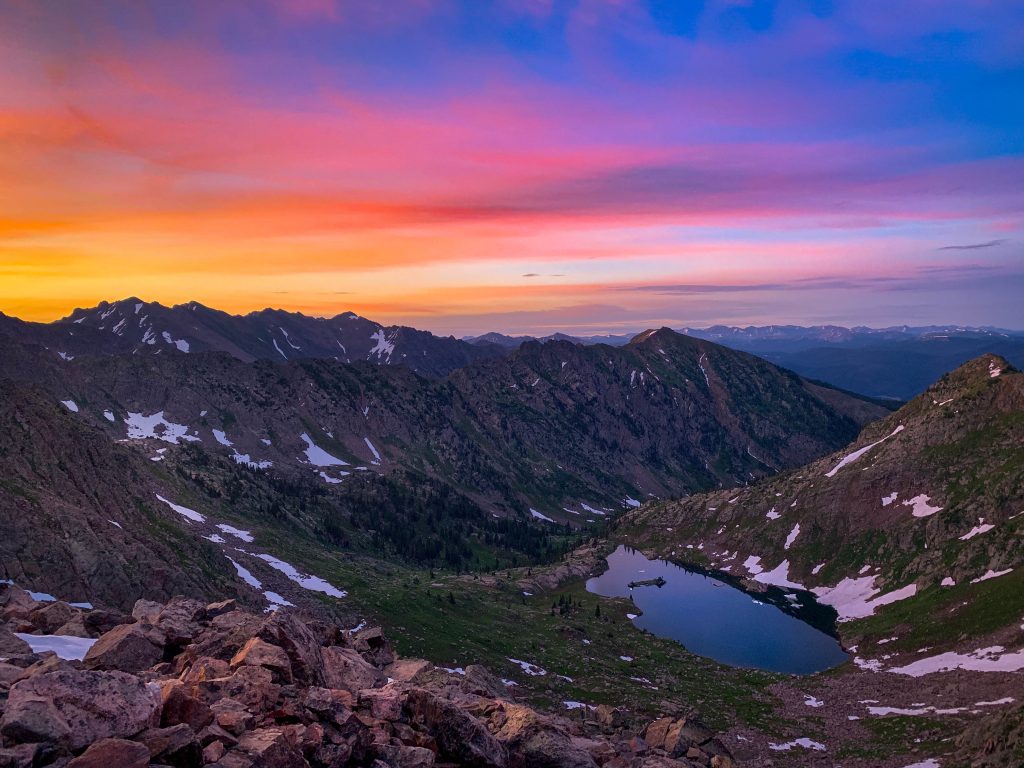
What Items Do I Need to Pack for Colorado Backpacking?
Now that you’ve found the perfect backpacking trail, you’ve gotta get packing! Here are a few Colorado backpacking essentials you can’t leave home without:
- A three-season sleeping bag
- Sleeping pad
- Odor- p roof bags with a waterproof stuff sack to hang your food and trash.
- Headlamp with extra batteries
- First Aid Kit
- A bathroom kit. Shovel, sani-hands, and TP.
- WAG bags (for going number 2 above treeline)
- A trash baggie for your toilet paper
- Water filter and a reusable water bottle or water bladder
- Lightweight backpacking stove with fuel
- backpacking pot
- Backpacking meals. DIY backpacking meals are simply the best.
- Plenty of high-calorie snacks for burning calories at altitude
- Lightweight gloves
- Rain jacket and rain pants
- Non-cotton socks 2x pair
- Hiking clothes with convertible pants
- Fleece layer
- Puffy jacket
- Duct tape, blister kit, fishing wire, safety pin
- Sunscreen, sunglasses, sunhat
- Females: A Pee Funnel
Do I Need a Permit to Go Backpacking in Colorado?
The answer: it depends. Many of Colorado’s best backpacking routes don’t require permits, but there are quite a few that do.
Any national park requires a permit to spend the night in the backcountry. Other popular wilderness areas also require permits, so check by Googling your trail name and “permit requirements” to see if you need to snag something.
Permit systems in Colorado fill up super-fast, so plan accordingly. Weekends in the summer are particularly tough, and many of the most popular permitted routes will fill up by the 1st of the year.
Didn’t snag a permit? No problem! You can still enjoy Colorado backpacking. In fact, many of the best (and secret) backpacking routes in Colorado don’t require permits.
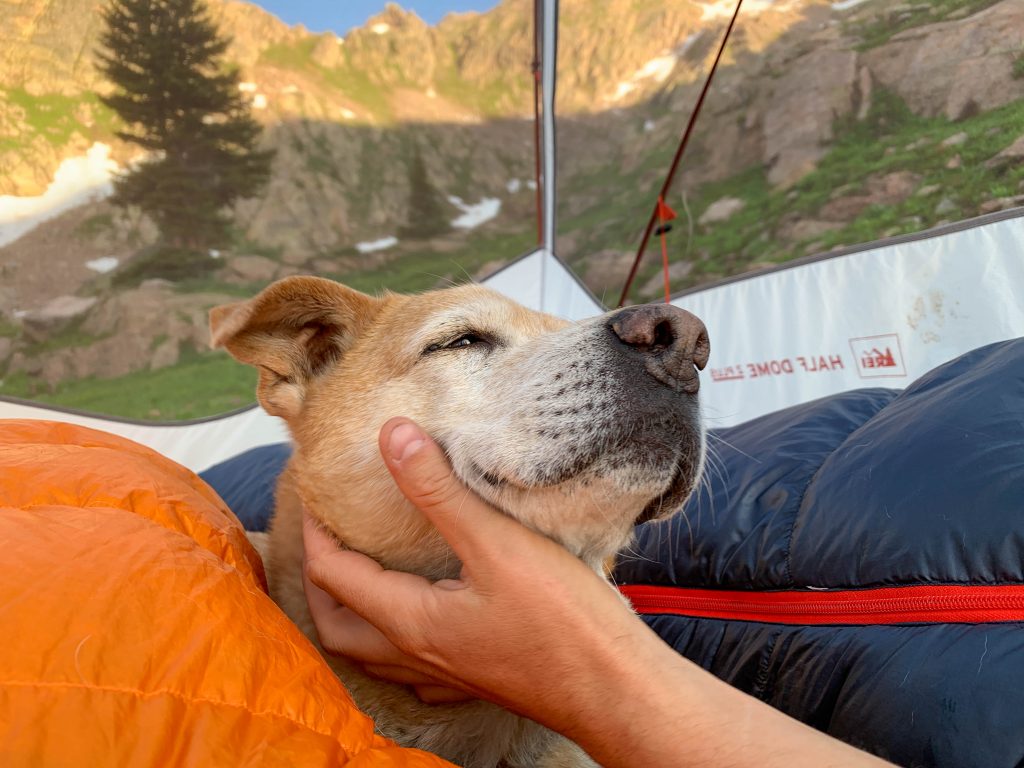
Tips for an Epic Colorado Backpacking Adventure
Get more out of your Colorado backpacking experience. Travel the trails like a seasoned local by following these Colorado backpacking tips.
Protect Your Food
Colorado is home to an amazing array of wildlife, but most of the mountain critters are particularly interested in your food. Sure, Colorado is home to black bears, and you want to keep your food away from them, but oftentimes the creatures that cause the most problems are of the small rodent variety.
Protect your food by hanging all stinky items (trash, food, toiletries) up in a tree at least 200 feet or 70 adult steps from your camp.
One time I left our food bag on the ground while I went to check out a nearby view. I figured it would be fine for 10 minutes, I had my stuff in odor-proof bags after all.
I returned to find that a small mountain rodent had chewed through my expensive dry bag AND the odor bag to invade my dog’s food supply. No fun!
Tread Lightly
The high alpine environment is super-sensitive. The lichen on the rocks takes eons to grow, thanks to harsh winters. Things really hang in the balance here, so try to camp on durable surfaces or previously established sites.
Don’t stomp through wildflowers or other vegetation. If you have to travel off-trail, fan out your group so you don’t destroy any delicate plant life.
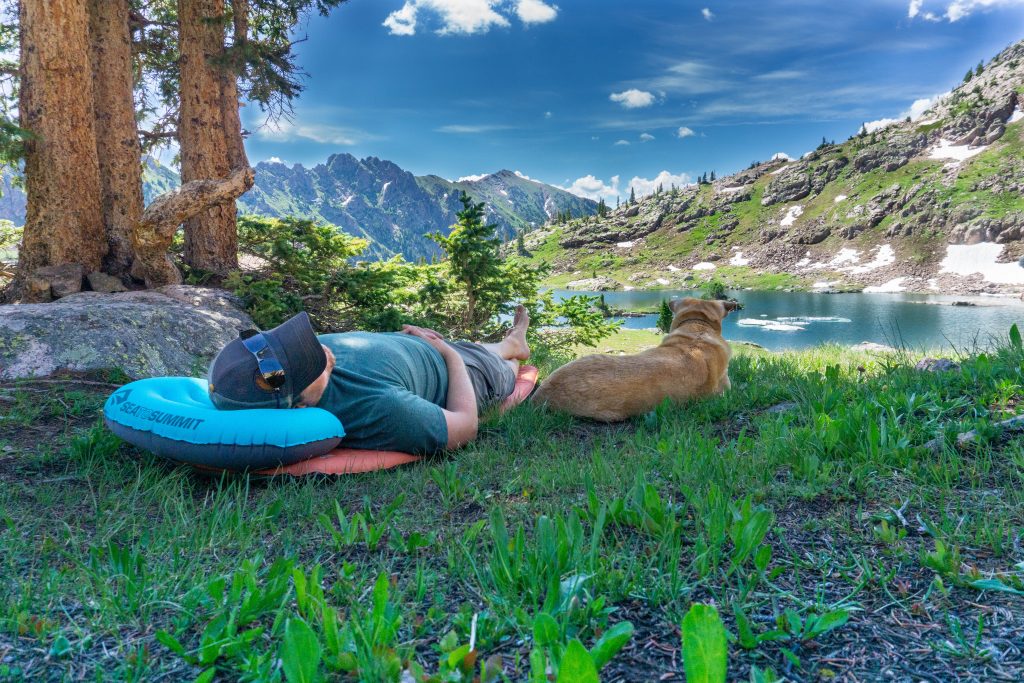
Skip the Fire
There are often fire bans in Colorado, and forest fires caused by campers is a huge issue. If you’re backpacking in Colorado and camping in the high alpine, skip the fire unless you need it for survival.
First, there is very little wood and that wood is providing much-needed nutrients for the soil. Second, a fire in the alpine can quickly get out of control if a gust of wind comes by, so cook with a stove instead.
If you’re in the lower elevations, only have a small fire at previously established fire rings. Never build a new fire ring unless it’s necessary for your survival to avoid scaring the earth.
Watch the Weather
Mountain weather is unruly and pretty unpredictable. Storms can crash over mountain tops in an instant, and if you’re high on a ridge, this can spell disaster. Camp in lower-lying areas and try to stay in the trees for protection.
If you get caught in a lightning storm, assume the lighting position for safety and leave your tent immediately.
Lastly, pack for variable weather. It can be super hot during the day and dip into frigid temps at night while backpacking in Colorado.
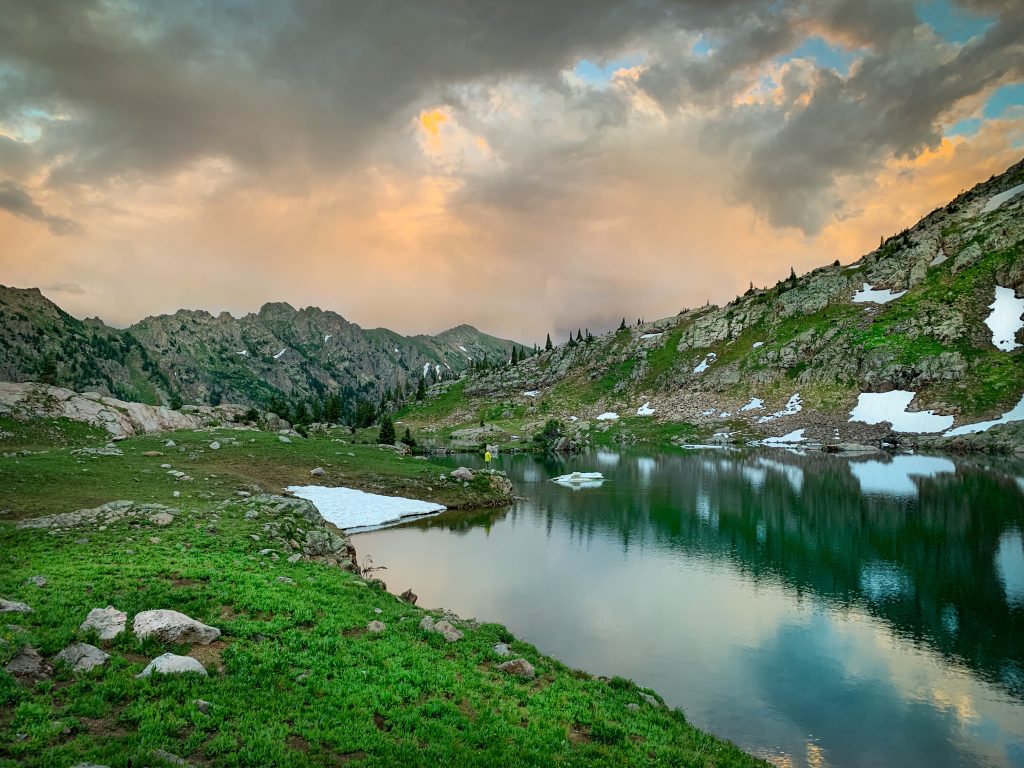
Give Wildlife Space
Wandering through the wilderness and bumping into elk, moose, mountain goats or even a bear is certainly a thrilling experience. However, these animals are very skittish and certainly dangerous.
Give all wildlife a wide berth. If you encounter an elk or moose, try to put a large tree (or three) between you!
We were hiking in the Indian Peaks wilderness when we turned the corner to find a mamma moose and her two babies! It was incredible, but also unnerving to be around 30 feet from these creatures without warning. We ended up leaving the trail, talking calmly to the moose family and put plenty of large objects between the two of us as we passed.
Acclimatize Properly
If you’re coming from out of town, take the time to acclimatize properly before hitting the trail. The altitude here is real, and when you’re carrying a heavy pack, it feels even heavier.
Avoid alcohol and caffeine for your first couple of days and ascend slowly. If you feel sick from the altitude, remember, the only way to get better is to go down, there is no waiting it out. Everyone reacts to altitude differently. I’ve lived at altitude for nearly half my life and I still get AMS (Acute Mountain Sickness) from time to time.
Take Your Time
Revel in the beauty of Colorado backpacking. Unless you’re going for an epic thru-hike, take your time on the trail! There is plenty of time to relax and soak in all the amazing views!
Don’t try to take on too many miles per day, unless you’re well-versed in high altitude travel. 12 miles in the alpine is a lot different than 12 miles in the hills or on flat terrain.
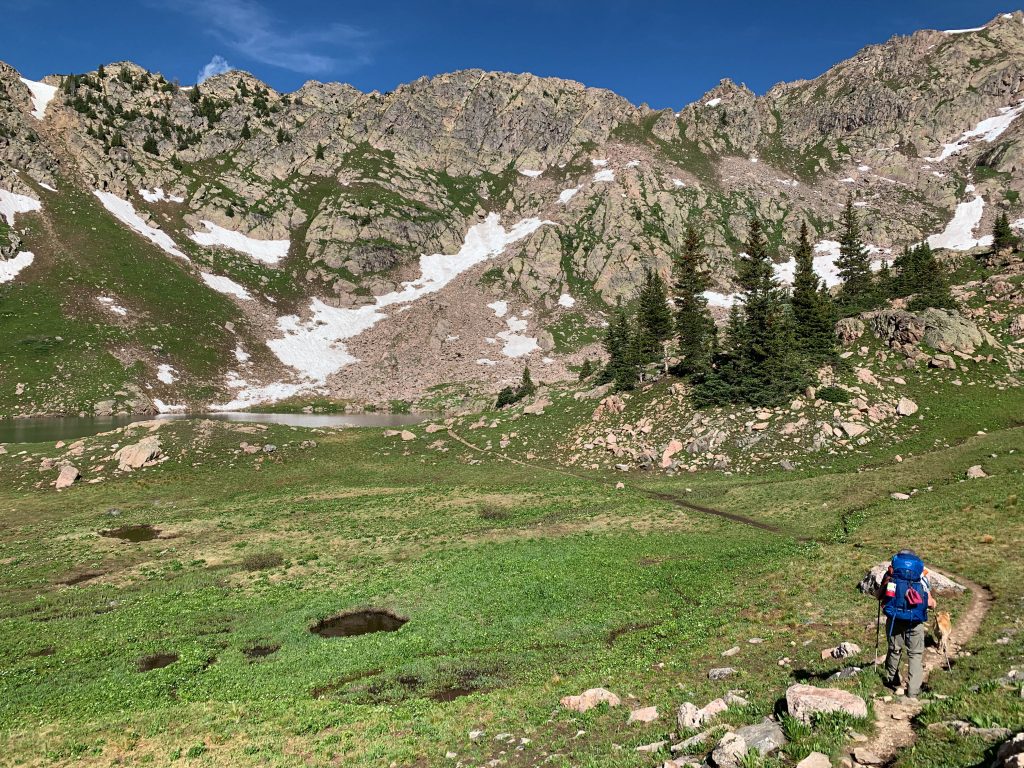
Check Road Conditions
Colorado has a lot of dirt and 4WD roads that lead to amazing backpacking. Before you hit the trail, make sure you know what conditions exist on the way to the trailhead.
Do you need high clearance? Is the road open and obstacle-free? Are you able to park overnight?
Lastly, keep in mind if you’re coming back towards Denver on a Saturday or Sunday there is almost always mountain traffic, especially on Highway 285 and I-70. Traffic starts to build around 10:30 am and stick around until 6 pm or later.
Follow All Regulations
Rules and regulations differ for backpacking in Colorado depending on where you are. Always follow all leash laws, waste disposal regulations, and drone restrictions. If you don’t know, check around by Googling the name of the national forest, park, or wilderness area and regulations.
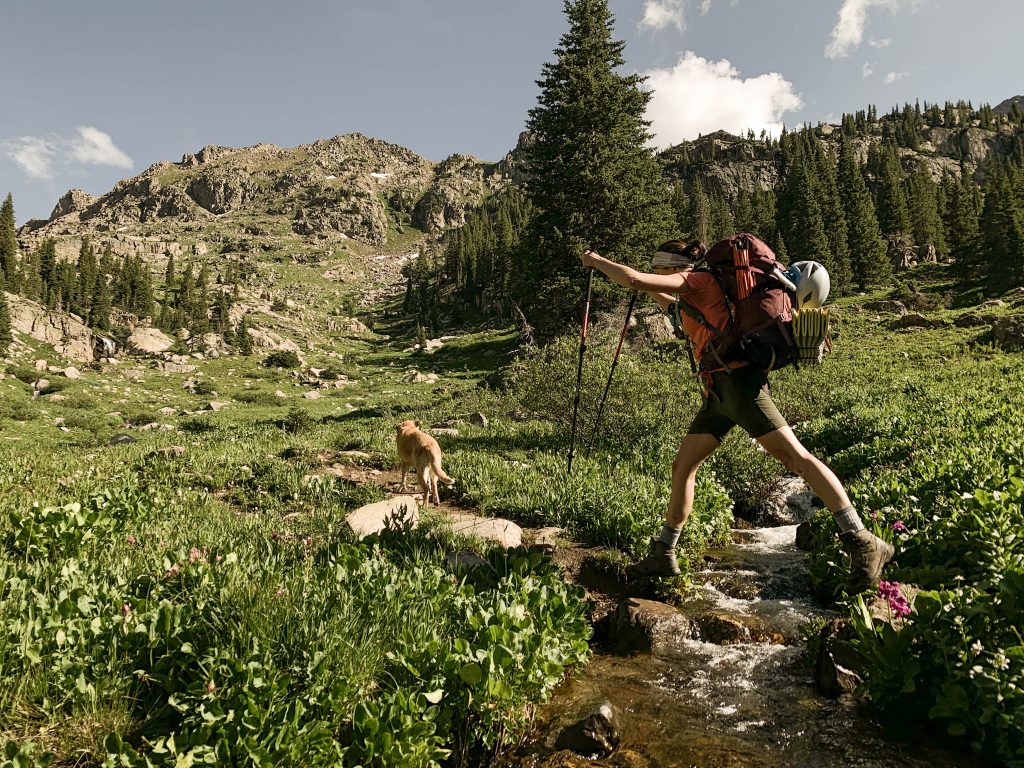
Bring Layers
Colorado’s unruly weather means you’ll want to pack plenty of layers. I never leave home to go Colorado backpacking without my fleece, a puffy, my favorite beanie, a Buff headband, and lightweight gloves. If I don’t end up using these items (which is never by the way), you can use them to make a cozy backcountry pillow or butt rest.
Bask in the Alpenglow
Want in on a local Colorado Backpacking secret? Get up for sunrise. There’s nothing more fantastic than basking in the alpenglow as you watch the mountain scenery come to life.
Now you’ve got a slew of local Colorado backpacking tips. So strap on your pack and hit the trail this season for an epic backpacking adventure.
Additional Colorado Outdoor Travel Resources
- The Mega-List of the Best Camp Spots in Colorado
- 11 Fun-Filled Colorado 14ers You’ve Gotta Climb
- The Expert Guide to Hiking in Colorado
- Where to Have the Best Outdoor Adventures in Colorado
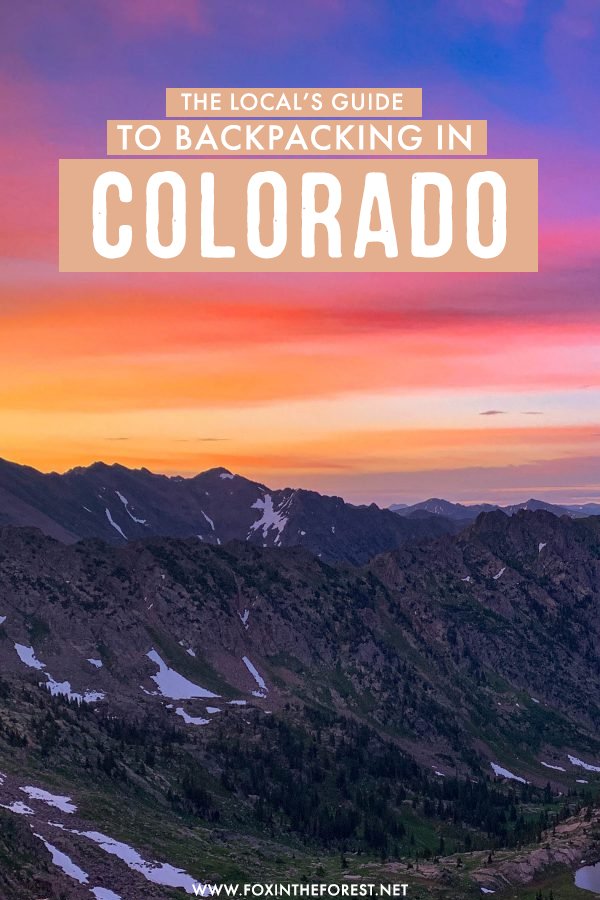
Meg Atteberry
Meg is a long-time Colorado local and outdoor industry professional. She's spent the last 15 years hiking, climbing, mountaineering, and canyoneering all over Colorado, Utah, Arizona, and Nevada in search of the best views. She's written for Outside Magazine, REI, Backpacker Magazine, and appeared on the Weather Channel.
Let’s connect!

Meg aka Fox is a 30-something who's born to explore. Toddler mom, queer, and neuro-spicy her favorite things to do are climb in the alpine and camp in the desert. Her mission is to get you out on your greatest adventure.
2-FOR-1 GA TICKETS WITH OUTSIDE+
Don’t miss Thundercat, Fleet Foxes, and more at the Outside Festival.
GET TICKETS
BEST WEEK EVER
Try out unlimited access with 7 days of Outside+ for free.
Start Your Free Trial
Powered by Outside
Best Summit Hikes in Colorado Springs
Local guidebook author susan joy paul explores the best summit hikes in and around colorado springs, colorado..
Heading out the door? Read this article on the new Outside+ app available now on iOS devices for members! >","name":"in-content-cta","type":"link"}}'>Download the app .
The Front Range defines the Colorado Springs skyline with mountains from 7,232 to 14,109 feet above sea level. You can reach the tops on off-trail routes that vary as wildly as their elevations — or set your sights on the handful of peaks with paths from trailhead to lofty summit. Each of these seven mountains can be day-hiked, though the “difficult” and “very difficult” ones require an early start (4 a.m. or even earlier).
Note: Distances are out-and-back total mileage. Elevation gain is from trailhead to summit and does not include regained or lost elevation. Summit elevations are based on LiDAR and may differ from elevations shown on maps.
Mount Cutler – 7,232′

Location: North Cheyenne Cañon Park
Distance & Elevation Gain to Summit: 2 miles and 491 feet of elevation
Difficulty : Easy
From the Mount Cutler Trailhead (6,741′), located 1.4 miles past Starsmore Visitor and Nature Center on North Cheyenne Cañon Road, hike east up the steep trail. At 0.4 miles arrive at an overlook above the canyon, and at 0.5 miles reach a saddle between Mount Cutler and Mount Muscoco. (Climbing Mount Muscoco from a different trailhead is described later in this article.) Continue on Mount Cutler Trail as it edges around the southwest side of the mountain above South Cheyenne Cañon, then bends left and climbs to the rounded summit at 1 mile. For extra views, descend the trail and take a side trail on the left to the lower, eastern summit. This area is exposed, so keep kids and pets close at hand.
Mays Peak – 8,284′
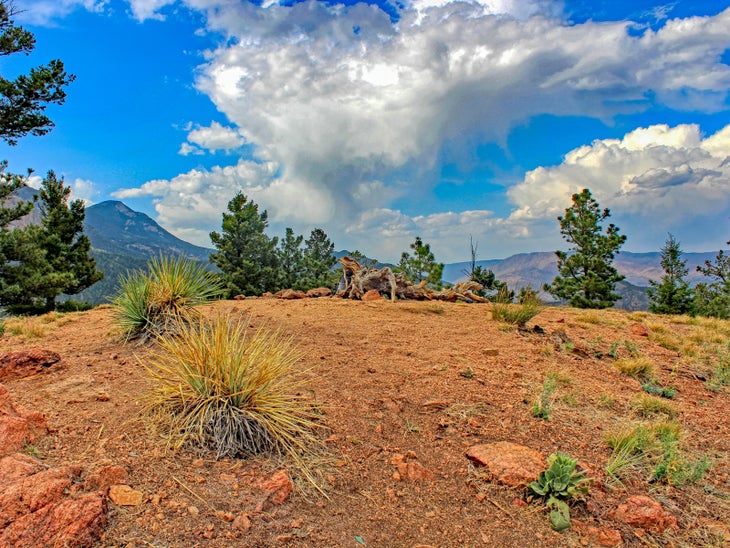
Location: Pike National Forest
Distance & Elevation Gain to Summit: 3.2 miles and 778 feet of elevation
Difficulty: Easy
From the High Drive Trailhead (7,506′) on the east side of Powell Parking Lot, located 3.2 miles past Starsmore Visitor and Nature Center at the top of North Cheyenne Cañon Road, hike northeast on High Drive. The closed dirt road curves around Mount Buckhorn and reaches a clearing with Mays Peak on the right. Locate the unsigned Mays Peak Trail on your right, at the southeast corner of the clearing and right of a post. Follow the trail as it wraps around the southern slopes, avoiding social trails used by mountain bikers. Climb the trail up the northeast side of the peak to the expansive, flat summit at 1.6 miles, and take in 360-degree views of more North Cheyenne Cañon peaks.
Mount Muscoco – 8,023′

Distance & Elevation Gain to Summit: 3.8 miles and 961 feet of elevation
Difficulty: Moderate
This hike to the high point of North Cheyenne Cañon Park begins at the Daniel’s Pass Trailhead (7,062′), located 2 miles past Starsmore Visitor and Nature Center on North Cheyenne Cañon Road. Hike Daniel’s Pass Trail for 0.7 miles and keep left at the junction with Bruin Trail to stay on Daniel’s Pass Trail. At 1.1 miles, go left onto Sweetwater Canyon Trail, and at 1.4 miles turn left onto Mount Muscoco Trail. At 1.65 miles, turn right onto Mount Muscoco Summit Trail and continue to the summit and the trail’s end at 1.9 miles. The summit rocks are to your right, but continue a few steps to an overlook and more views.
Gray Back Peak – 9,358′

Location: Pike National Forest.
Distance & Elevation Gain to Summit: 3.8 miles and 622 feet of elevation
Limited parking makes this hike a good midweek option, but the scenery and views pay off big time. From Gray Back Peak Trailhead (8,736′) on FR #371 off Old Stage Road, hike east up gravelly Gray Back Peak Trail. At 1.1 miles, reach an overlook with views south to Gray Back Peak. Descend to a junction at 1.3 miles, keep right on the main trail, and hike south with views west of Emerald Valley. At a saddle at 1.6 miles, climb switchbacks through a conifer forest to the summit at 1.9 miles. Enjoy views of the southern Front Range, Wet Mountains, and in the distance, the twin summits of Spanish Peaks. The toughest part of this hike may be getting to the trailhead. Old Stage Road is a dirt road that’s steep and exposed in places and not recommended after snowfall and during inclement weather.
Dragon’s Backbone – 9,164′
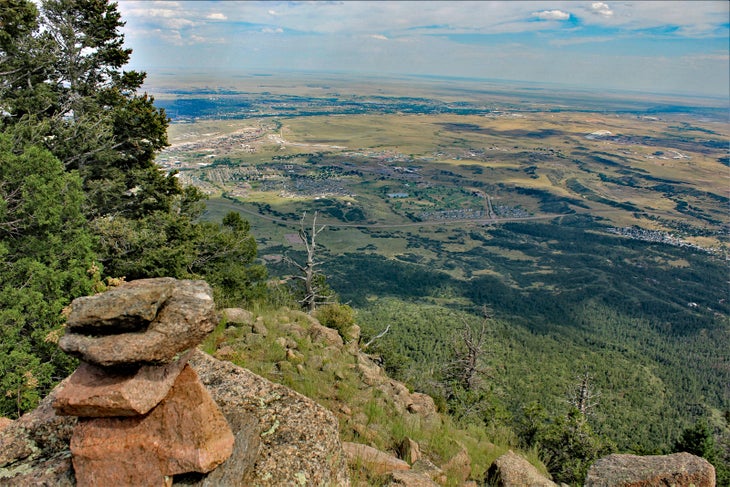
Location: Cheyenne Mountain State Park
Distance & Elevation Gain to Summit: 15.2 miles and 3,121 feet of elevation
Difficulty: Challenging
The true high point of Cheyenne Mountain requires off-trail hiking and leads to poor views. This hike, though not a true summit hike, follows a steep trail to an airy overlook with spectacular views. From Limekiln Trailhead (6,043′), hike west on Talon Trail past junctions with North Talon Trail and South Talon Trail. At 2.7 miles and the next junction with North and South Talon Trails, bear right onto North Talon Trail. (The first cutoff to North Talon Trail shaves some distance off the hike but is not worth it due to the added steepness.) At 3.4 miles, turn left and hike west on Dixon Trail. At 5.9 miles, the trail becomes rugged and steepens considerably. Pass the wreckage of a 1957 plane crash that killed two military pilots. (Do not touch or remove any artifacts from the site.) Cross a meadow, and at 7.2 miles, turn right onto the signed Dragon’s Backbone Trail.
Arrive at Dragon’s Backbone, overlooking Colorado Springs, at 7.6 miles. Make this your turnaround point or, alternatively, continue up the scenic trail past rocky Robber’s Roost (9,232′), turn left onto Mountain Loop Trail, and rejoin Dixon Trail at 8.4 miles. Continue down the trail to the trailhead or take the North Talon Trail shortcut at 12.2 miles and hike to Talon Trail at 13.1 miles, go left, and return to the trailhead. Adding the loop at the top of the hike and taking the descent shortcut makes for a slightly longer hike—15.4 miles total, and a bit more elevation.
Much of this hike is south-facing and is not recommended in high temperatures. There is no water available on the trail, so carry more than you think you need. Cheyenne Mountain State Park is a fee area so pay for the day or buy an annual Colorado State Parks Pass or Keep Colorado Wild Pass.
Mount Rosa – 11,503′
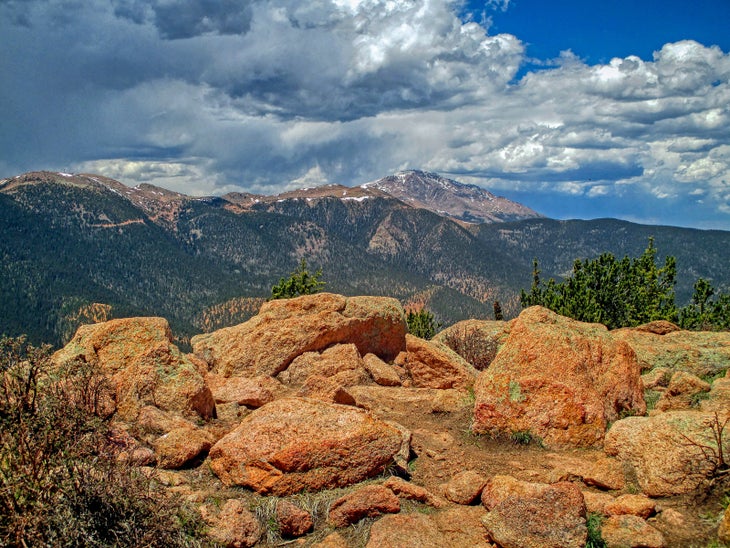
Locations: Pike National Forest
Distance & Elevation Gain to Summit: 13.4 miles and 3,992 feet of elevation
Difficulty: Challenging
Mount Rosa’s pyramid shape is easily identified among the Colorado Springs skyline’s peaks. From the Powell Trailhead (7,511′) on the northwest side of the Powell Lot, 3.2 miles past Starsmore Visitor and Nature Center at the top of North Cheyenne Cañon Road, hike west on closed Gold Camp Road. At 1.1 miles, pass a closed tunnel and bear right up Gold Camp Road Trail to an overlook with views of Mount Muscoco and Mount Cutler. At 1.2 miles, bear right at a signed junction and hike south along Buffalo Creek on St. Marys Falls Trail. At 2.5 miles and a sign for St. Marys Falls, switchback right and ascend the trail.
At 2.8 miles reach another sign for St. Marys Falls (this is the cutoff trail to the waterfall) and switchback right again. The trail continues up switchbacks, bends south, climbs past a rocky area, levels out, and contours southwest above Buffalo Creek. At 4.7 miles, pass through a cowboy gate and turn right onto Mount Rosa Road. Hike north for a couple hundred feet and turn left onto Nelson’s Trail. Climb steep switchbacks, gaining about 1,000 feet in the next mile, and at 5.8 miles, enjoy an excellent view of Pikes Peak. At 5.95 miles, go left at a signed junction and hike south on Mount Rosa Trail. The trail follows the north ridge of the peak and reaches the rocky summit at 6.7 miles.
Pikes Peak – 14,109′
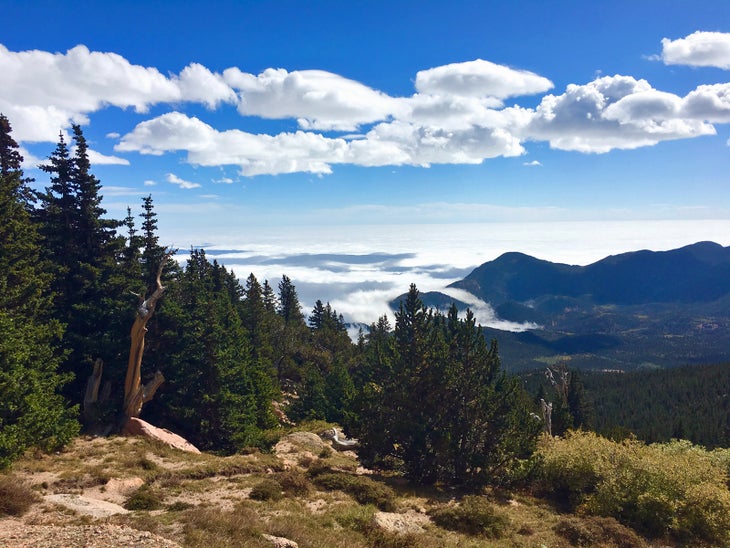
Distance & Elevation Gain to Summit: 24 miles and 7,459 feet of elevation
Difficulty: Very Challenging
The classic Barr Trail route up Pikes Peak begins west of Colorado Springs in neighboring Manitou Springs. From Barr Trailhead (6,650′) at the top of Hydro Street, hike Barr Trail on switchbacks up the lower slopes of Mount Manitou. At 0.3 miles, keep right at a junction to stay on Barr Trail and at 1.8 miles, reach an overlook with views into Engelmann Canyon. Continue west across the slopes of Rocky Mountain and at the junction with a trail on top of the Mt. Manitou Incline, keep left on Barr Trail. Reach No Name Creek at 3.0 miles and keep left on Barr Trail. After some switchbacks, go right onto a singletrack trail. Pass the junction to Lightning Overlook at 5.3 miles and after 6.5 miles, arrive at Barr Camp (10,160′). Hike west on Barr Trail, past the junction with Elk Park Trail, to a sharp switchback at 7.7 miles. Pass the junction with Bottomless Pit Trail and stay left on Barr Trail to hike 14 switchbacks to the A-Frame shelter at 8.8 miles. After more switchbacks on Pikes Peak’s east face, reach the 16 Golden Stairs (“Golden Staircase”) below the summit at 11.3 miles. Stride up 32 more switchbacks to easier terrain that leads to a sprawling parking lot and the signed high point at 12 miles.
Barr Trailhead is a fee area with limited parking, but you can take a free shuttle from Hiawatha Gardens in Manitou Springs or have a friend drop you off. If you do the hike over two days, consider reserving a cabin, campsite, and meal at Barr Camp. You can also camp off the trail or lay your sleeping bag in the A-Frame. The Pikes Peak Cog Railway runs trains to the top, and one-way tickets can be pre-booked for your descent. The Summit House is open from 9 am to 3 p.m. (weather permitting), and in 2023, a 24-hour “hiker safe room” was installed to provide temporary shelter during bad weather.

Tips for Summit Hiking in Colorado Springs
- Let someone know where you are going and when you will be back.
- Dress for changing weather and carry the Ten Essentials. Colorado Springs trails can be icy from fall through spring, so pack EXOspikes, MICROspikes, or other traction for your boots.
- Avoid hiking peaks in bad weather. If a lightning storm approaches descend to the trailhead.
- If you are coming from a lower elevation, expect mild to severe altitude sickness. Drink and eat to lessen the effects. If symptoms persist, descend to the trailhead.
- Leave nothing behind but footprints on your summit hikes. Take nothing but photos and memories.
- For hikes that start at trailheads on North Cheyenne Cañon Road, the road is closed from 9 pm until 5 am, so plan accordingly.
Read about more great hikes in Colorado Springs from Backpacker here.
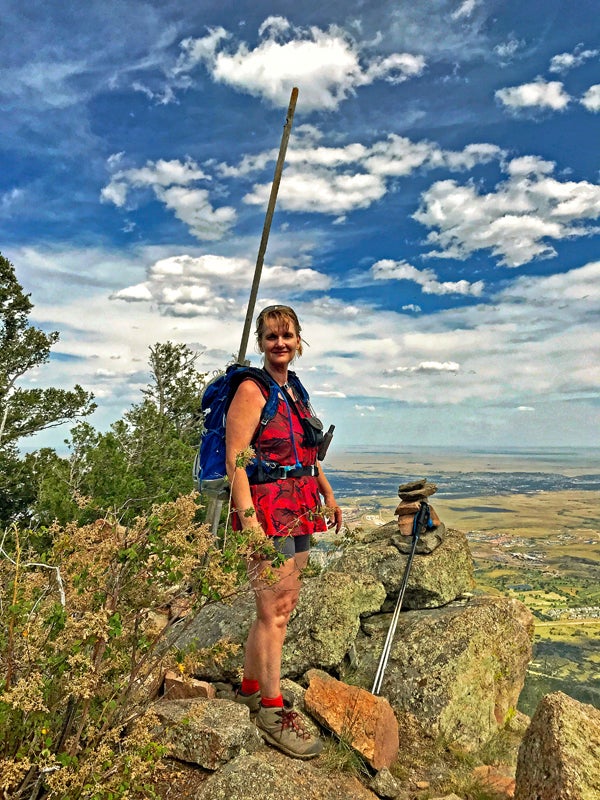
About the Author – Susan Joy Paul
Susan Joy Paul is a Colorado Springs local and author of several Colorado guidebooks, including Trails to the Top: 50 Colorado Front Range Mountain Hikes . Besides her own writing work, she is also a highly respected writing coach. You visit her personal website here .
Popular on Backpacker
Related content from the outside network, what’s it like to go on a 200-person hike better than you think., how to pack for backcountry skiing, the original yosemite firefall, hiker charges mountain lion.

10 Best Beginner Backpacking Trips in Colorado
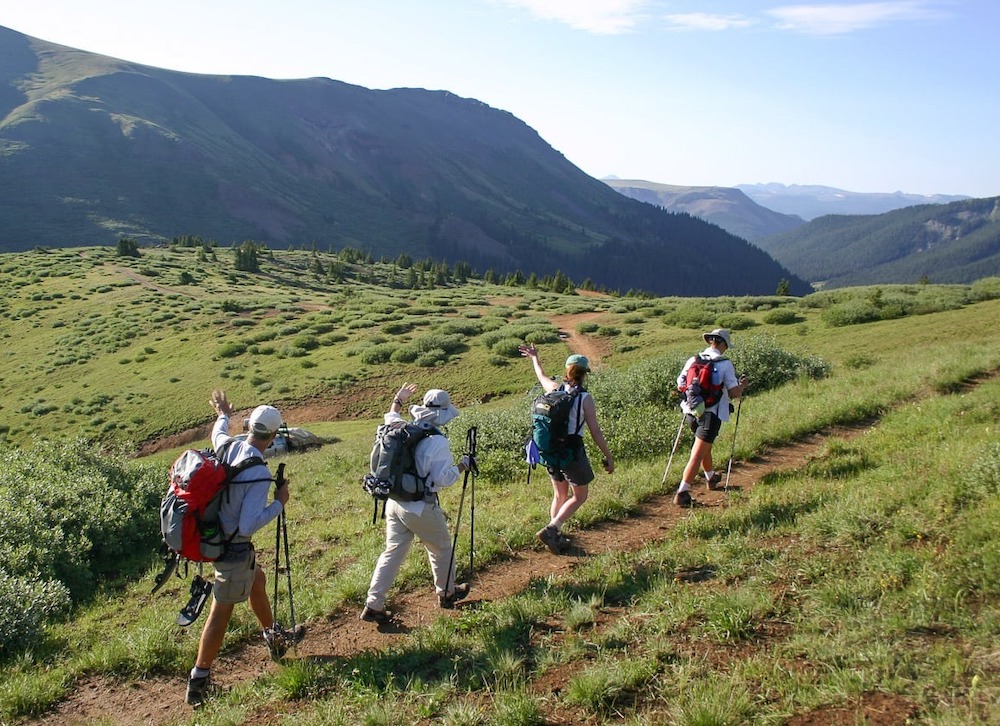
Sharing is caring!
Thanks for your support! If you make a purchase using our links in this article, we may make a commission. And, as an Amazon Associate, I earn from qualifying purchases. See the full disclosure here .
There are so many beautiful hikes in Colorado it is unbelievable. You can enjoy many different terrains and you can see the Aspens turn color in the Fall, snowcapped mountains in the winter, flowing waterfalls in the spring, and beautiful wildflowers in the summer. So we created our list of the 10 Best Beginner Backpacking Trips in Colorado, which include:
1. Wild Basin, Rocky Mountain National Park 2. Crested Butte to Aspen via West Maroon Pass 3. Chinese Wall Loop, Flat Top Wilderness 4. Chicago Basin, San Juan Mountains 5. Devil’s Thumb to King Lake Loop 6. Lost Creek Loop 7. Continental Divide Loop 8. Blue Lakes Trail 9. Conundrum Hot Spring 10. Maroon Bells Four Pass Loop
Backpacking in Colorado can be exhilarating any time of the year but can also be dangerous if you don’t know what you are doing. Rock slides, avalanches, wildlife such as bears, moose, and sheep, can all keep you on your toes in the wilderness.
Check out some of these popular trails, tips, and cautions below before you load up your backpack and head out.
How to Choose the Best Beginner Backpacking Trips in Colorado
There is a lot of advice to take in before you plan your first trip. There are many easy tips that will help you have a good experience when you go. There are also a lot of things you can do prior to the trip that will help with that experience as well.
Start by taking short, regular day trips and increase your distance each time you go out. Download an AllTrails app that gives information on each trip, the length, and the difficulty. Try some easy hikes and work up to the more difficult ones. Once you feel comfortable, plan a short overnight trip and travel a modest distance. 10-15 miles, depending on your fitness, is a good place to start.
While you are getting ready physically for your hike, make sure you will be carrying the proper gear. An ill-fitting pack could ruin your trip. Check out your local sporting goods store and find someone who can help make sure the pack fits right. Try several brands before making your decision. Once you find one that fits well for you, you can practice with a test run. Instead of being somewhere in the wilderness suffering, you can make adjustments in your own neighborhood while you practice and get prepared.
Of course, you will need lightweight gear for your hikes such as a sleeping pad , sleeping bag , and tent . You want to make sure the pack will hold what you need but you also don’t need to overpack. Make room for essentials like rain gear and dress in layers to keep you warm as you head to higher elevations. Pack plenty of water and snacks loaded with electrolytes to combat altitude sickness.
Choose Your Beginner Hiking Trail Location
State and national parks are a great place to start and you can take advantage of the rangers’ knowledge of the area. They can help you to know the difficulty of trails, water sources, and campsite locations so you can determine the best route. If you want, you can also hire a guide or bring along an experienced friend for support.
How Do I Choose an Appropriate Trail for a Beginner?
If you are just starting out, you will want to hike a trip with relatively low mileage. Choose ones that don’t have an extreme elevation gain for the region and travel on well-maintained trails and avoid more difficult trails. AllTrails is a great app to find trail details and comments from those who have hiked there recently. There are also plenty of books that highlight the many hiking trails that are suitable for beginners…
Do You Need a Permit to Backpack in Colorado?
There are many trails in Colorado that don’t require a permit, but the best advice is to know before you go. Due to COVID, busy trails, fires, and a myriad of other reasons, the National Park Service may be changing requirements on many of the more popular trails.
Places such as Rocky Mountain National Park require a $30 Wilderness Administrative fee for backcountry camping. These can be picked up at Headquarters Wilderness Office or can be acquired online. Go to NPS.gov for more information on permits for areas you would like to backpack. A few required a self-issued permit at the trailhead (free).
What are the Best Months for a Beginner to Backpack in Colorado?
The best time to hike many of the trails in Colorado is early July to mid-September. Trails above 10,000 feet can be covered in snow until late June and again in late September.
Where Can I Backpack in Colorado in May?
Lost Creek Wilderness, near Bailey, in central Colorado, is most often the first area to open to backpackers in Colorado high country and the last to close. So there is a possibility of the trails being open in mid-May. It is more likely you can traverse lower elevations during the month of May.
Where Can You Backpack in Colorado Without a Permit?
Indian peaks wilderness.
Indian Peaks Wilderness is a 73,391 acre wilderness area near Denver. You don’t need a permit for groups of seven or less between Sept. 16 and May 31. Check out the fall color, waterfalls, and wildflowers on an eight-mile climb to Upper Diamond Lake.
Flat Tops Wilderness
With a three foot wide trail at its narrowest, and 80 foot cliffs falling away on either side, Flat Tops Wilderness may not be one for the beginner backpacker, but it does not require a permit. If you brave the trail, you will see views of Little Causeway Lake, stunted basalt domes, and alpine meadows below.
Maroon Bells—Snowmass Wilderness
This federally designated wilderness area just 12 miles southwest of Aspen doesn’t require a permit. The 28-mile Four Pass Loop, circles twin fourteeners.
Lost Creek Wilderness
The Goose Creek portion of the 28-mile Lost Creek Loop is an evergreen forest dotted with meadows, aspen stands, and granite outcroppings and arches. The lower elevation means it is good for early and late-season outings.
You can read more about these beginner trails below.
Is the Colorado Trail too Dangerous for Beginners?
The Colorado Trail is a rigorous trek that affects even the most seasoned hikers with its high altitude. The state-wide trail runs from Denver’s Waterton Canyon to Durango. Elevations and difficulties of the sections vary but backpackers can hike any part of its 486 miles. Allow 4-6 weeks if you plan to hike this entire trail. The average elevation is 10,300 feet. The best time to go is from late June to early September.
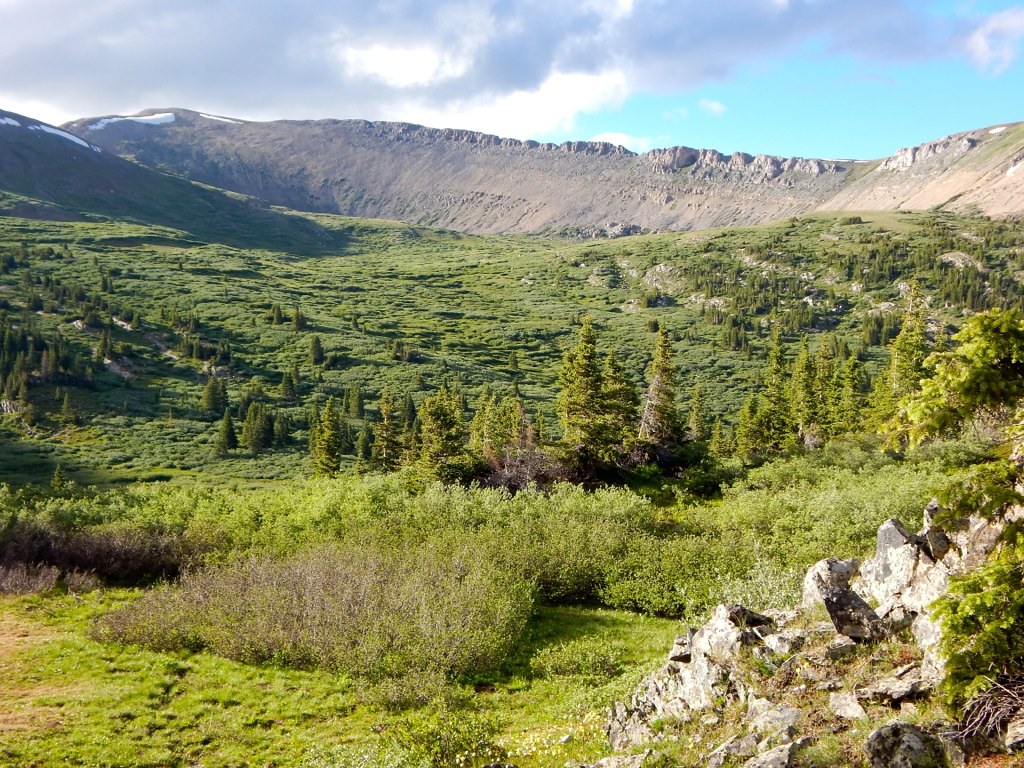
What Do You Need for a Hiking Trip in Colorado?
Adding to your standard gear of pack, bedroll, rain gear, you will also need to be properly prepared with items such as:
- first aid kit (RVBlogger Recommended)
- water purifier
- fire starter
- a shelter of some kind
- trekking poles
- bear spray (RVBlogger Recommended)
Also, know that your cell phone is not likely to have a signal when you are in the wilderness. Hike with a friend whenever possible and let friends and family members know where you are going and when you plan to return. If you are a beginner, it might not be a bad idea to check out guided hikes in Colorado . There are plenty to find at differing price levels.
If you are injured on the trail and are solo, stay on the trail and wait. Also, afternoon storms are common so start each day out early and be prepared. They don’t usually last very long.
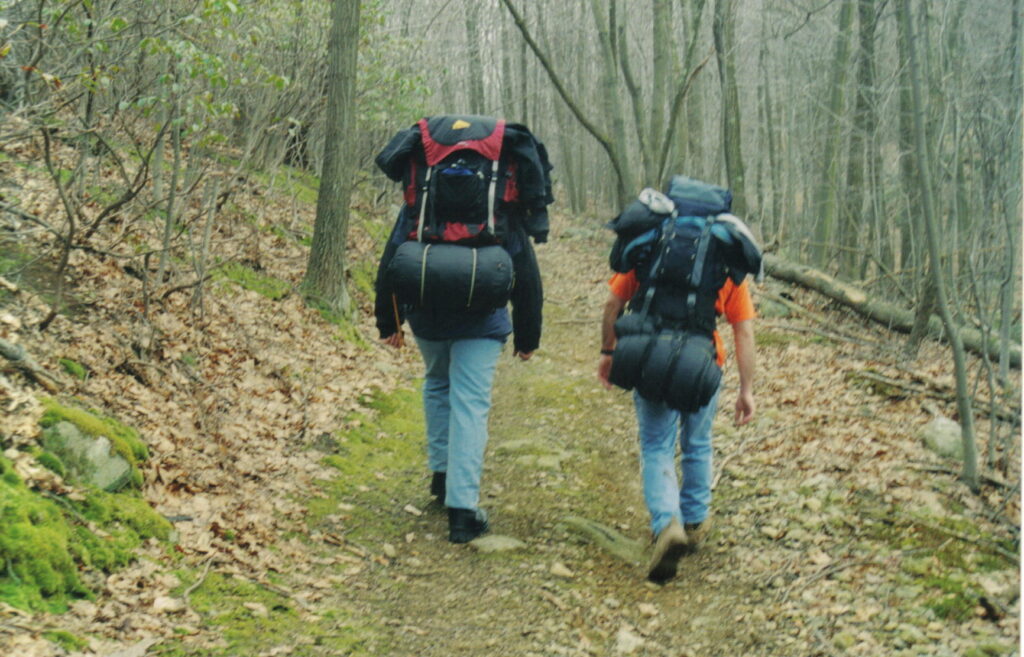
Are There Any Overnight Hikes for Beginners in Colorado?
With more than 22 million acres of public land, you can find waterfalls, summit views, plenty of wildlife, wildflowers, and more on the trails in Colorado. Don’t be afraid to “go for it,” if backpacking is something you would like to do. There is plenty of help from experienced hikers who can tell you the best trails. Soon you will be out there discovering trails on your own.
1. Wild Basin, Rocky Mountain National Park
This is a great hike, not only for beginners but for families as well. People who want an amazing experience can choose this area, stay in one place for several nights and explore many beautiful areas of Rocky Mountain National Park. You can stay near the shore of Ouzel Lake, with views of the alpine peaks and ridges of the Continental Divide, and hike to other alpine lakes. You can see wildlife, waterfalls, and maybe elk or moose. You can fish in the lake or take day trips to various other parts of the area.
On the east side of Rocky Mountain National Park and south of Estes Park, this hike can be customized to fit your time and abilities. In the vicinity are Mt. Copeland, Mahana Peak, and Ouzel Peak, as well as trails such as Bluebird Lake, Copeland Falls, Finch Lake, and Pear Lake, to name a few.
- Difficulty Level – beginner
- Elevation Change – 2,500 feet
- Distance – 14 miles
- Length – 3-4 days
- Permit Required – yes from May 1-Oct.1
- Route Type – out and back

2. Crested Butte to Aspen via West Maroon Pass
This hike from Crested Butte to Aspen is one of the more popular trails leading you to views of the Raggeds and Maroon Bells-Snowmass Wilderness areas. Going from one classic mountain town to another you see awesome views, mountain lakes, a stunning ridgeline highpoint, and beautiful wildflowers. This hike can also be reversed for a more difficult challenge with an elevation gain of 3,265 feet.
You currently need reservations to make the trip. A link through the AllTrails app will guide you to the proper place to make your reservation. On this hike, you will also need to make sure you have shuttle arrangements unless you want to hike back to the Crested Butte trailhead. There are several shuttles that you can use, but make sure you make a reservation well in advance of starting your trip. An out-and-back would be a 20-mile, 3-4 day trip.
- Elevation Change – 2,400 feet
- Distance – 10.2 miles
- Length – 2 days
- Permit Required – no from May 1-Oct.1
- Route Type – point to point
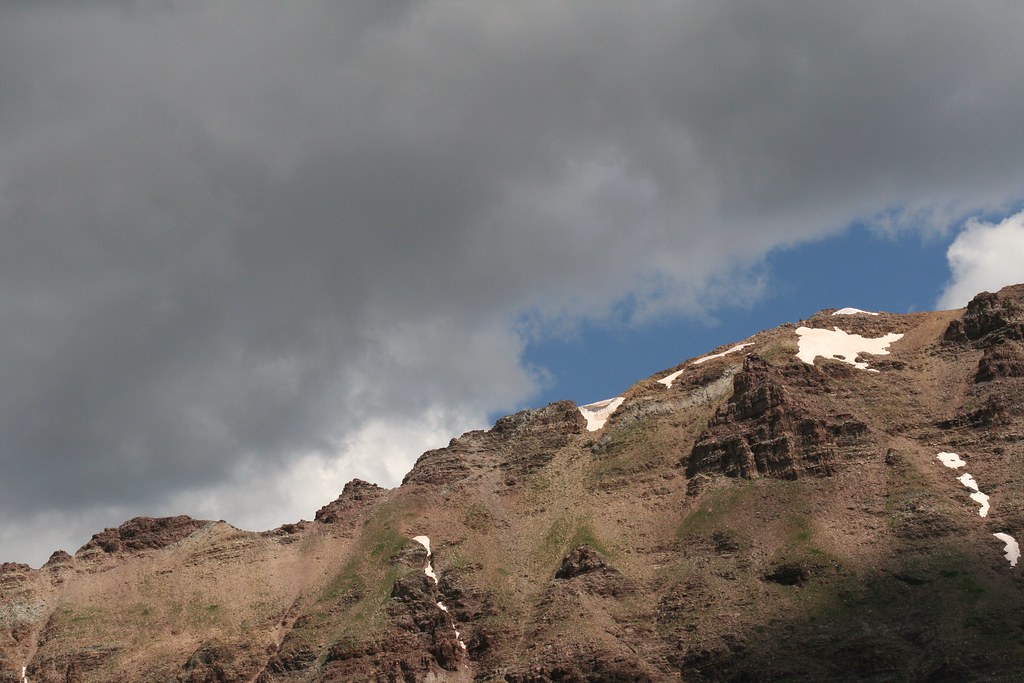
3. Chinese Wall Loop, Flat Top Wilderness
As one of the first designated wilderness areas in the history of public lands, the Flat Top Wilderness Area is home to more than 100 lakes. On the Chinese Wall Loop trail , you will be over 11,000 feet in elevation. The uphill climb is difficult but once above the tree line, the views are amazing. The area is quiet and a good trip for beginners to push the envelope of endurance.
Make sure you know certain restrictions that you must follow for this wilderness area which specify no motorized or mechanical transport of any kind is allowed.
- Elevation Change – 3,500 feet
- Distance – 26 miles
- Length – 4-5 days
- Permit Required – no
- Route Type – loop
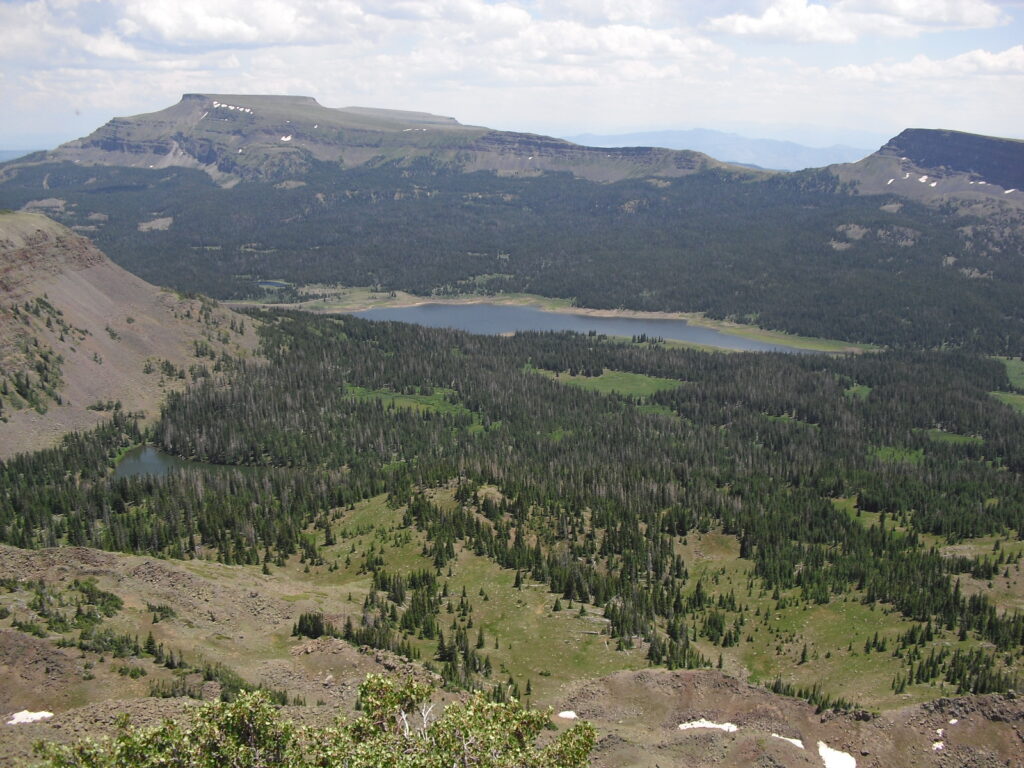
4. Chicago Basin, San Juan Mountains
Located near Durango, this backpacking trip is unique in that you start your adventure with a train ride to the trailhead. You will take the Durango-Silverton Narrow Gauge Railway to the Needleton stop 30 miles north of Durango. Once you are dropped off, it is an elevation gain of 3,000 feet to get to the base camp which is well-established with tent sites and water that is easily accessible. It is patrolled regularly by park rangers.
Chicago is in the heart of the Weminuche Wilderness in the San Juan Mountains of southwestern Colorado. If you want more of a challenge, you can use the Needle Creek campground as a basecamp and attempt any of the three 14ers that rise above. These are technical and only recommended with proper training and gear. A more moderate challenge is a hike to Twin Lakes to get views of the mountains surrounding the valley. It is only a two mile round trip hike but gains roughly 1,200 feet in that mile.
- Difficulty Level – beginner-expert
- Elevation Change – 2,800 feet
- Distance – 12 miles
- Length – 2-3 days
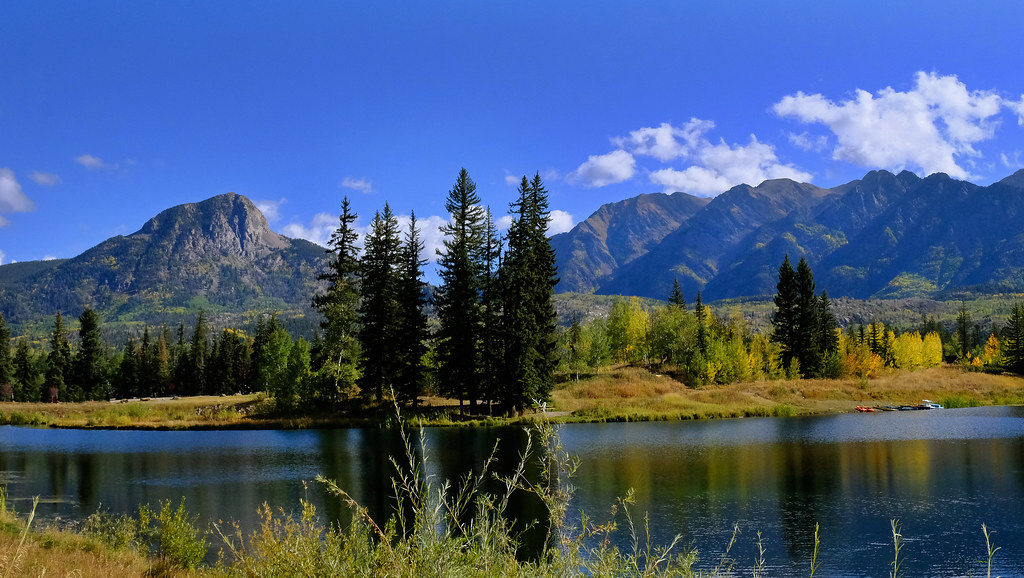
5. Devil’s Thumb to King Lake Loop
Check out this backpacking trip in the Indian Peaks Wilderness. On this route , you will see wildflowers in the spring and many moose and elk. Views of the surrounding mountains once you arrive at the Continental Divide are spectacular. Local regulations require permitting for camping overnight. You can do this hike in a day, but for a more relaxed trip and more time to spend looking at the awesome views you will likely want to stick around.
Begin your hike at Hessie Trail. The town of Nederland has a free shuttle to the trailhead. At more than five miles up is Devil’s Thumb Lake. Continue the loop on Lonesome Trail to King Lake, then Devil’s Thumb Pass.
- Difficulty Level – beginner
- Elevation Change – 3,533 feet
- Distance – 16 miles
- Permit Required – yes, https://www.recreation.gov/permits/4675318
6. Lost Creek Loop
Just a few hours from Colorado Springs, this is a well populated trail with ample water and good trail markings. It’s a good spot for beginners who want to push the envelope in length and elevation change. The Lost Creek Loop features awesome views of the surrounding mountains with an abundance of granite rock formations to explore. There is a self-issued permit you will need to fill out prior to leaving the trailhead. These allow Forest Service rangers to track user days, provide information about your trip, and help in an emergency.
Embark from the Goose Creek trailhead and wind your way through aspen groves, meadows, and the Goose Creek drainage, with granite spires. You will have great views of the Collegiate Peaks and the Mosquito Range. If you take the loop counter-clockwise, you will save the best scenery for last.
- Difficulty Level – beginner/moderate
- Elevation Change – 5,300 feet
- Distance – 28.5 miles
- Permit Required – yes, filled out at the trailhead
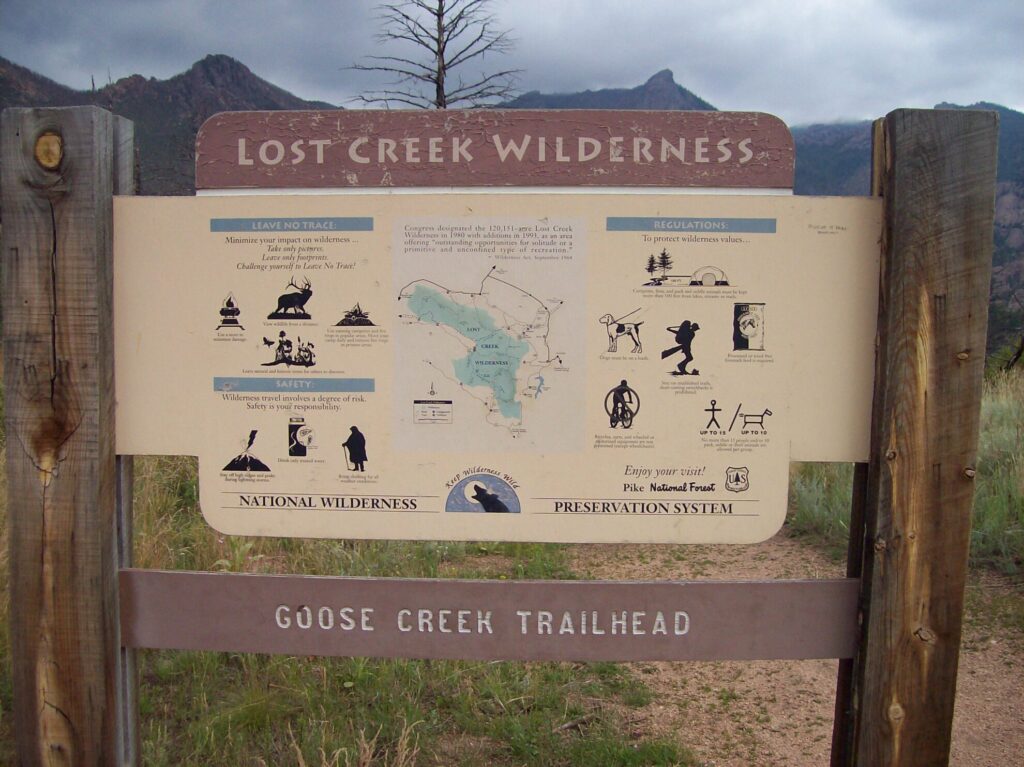
7. Continental Divide Loop
On this 27 mile adventure, you will traverse peaks, valleys, glaciers, and marshy meadows. You will pass by several waterfalls and lakes over the first sections of the hike which are perfect places to make camp or just take a break. The latter portions are above the tree line. You can take five days to complete the loop or take a partial loop instead.
For an epic challenge, take six months to traverse the Continental Divide Trail . Some 740 miles of this trail is in central Colorado with a high point of Grays Peak at 14,270 feet. Waterton Lake in Montana is its lowest point at 4,200 feet. More than 1,000 summits in Colorado top 10,000 feet on the Continental Divide Trail.
- Difficulty Level – moderate
- Elevation Change – 4,947 feet
- Distance – 27 miles
- Permit Required – reservations required through www.nps.gov
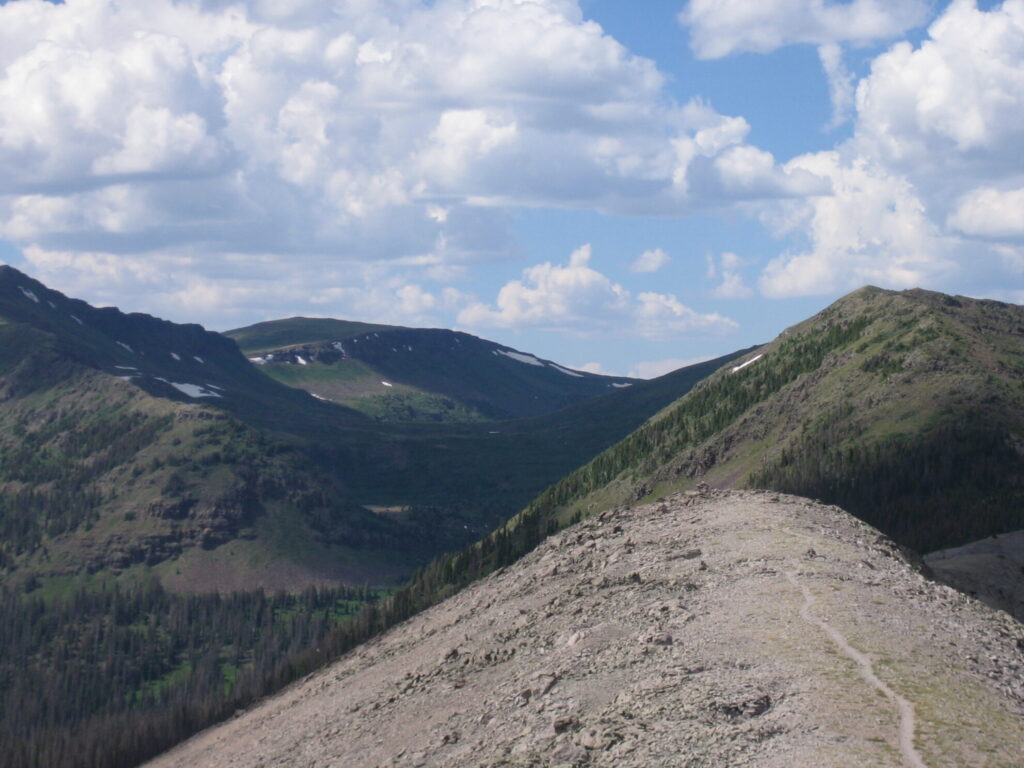
8. Blue Lakes Trail
As one of the premier hiking trails in the Northern San Juan Mountains, this hike is convenient to the town of Ridgway and the trail is challenging but not too difficult for hikers of moderate abilities. Blue Lakes Trail starts climbing from Dallas Creek and continues with alternating stretches of moderately steep climbs to flat recovery. The trail follows the west side of the Dallas Creek drainage until it reaches the lake. Look for a breathtaking display of wildflowers in June and July.
Just before Lower Blue Lake, the trail splits to the left up past Middle and Upper Blue Lakes and on to Blue Lake Pass. Backcountry camping is allowed on Lower Blue Lake. Hikers will enjoy the Dallas Divide peaks and the steep cirque sloping down to the lake is awesome. The lower lake is just 3.5 miles in and is a nice spot to camp for the night. From there, hike a half mile to the middle lake and another quarter mile to the upper lake for some stunning alpine views.
- Distance – 7.6 miles
- Length – overnight
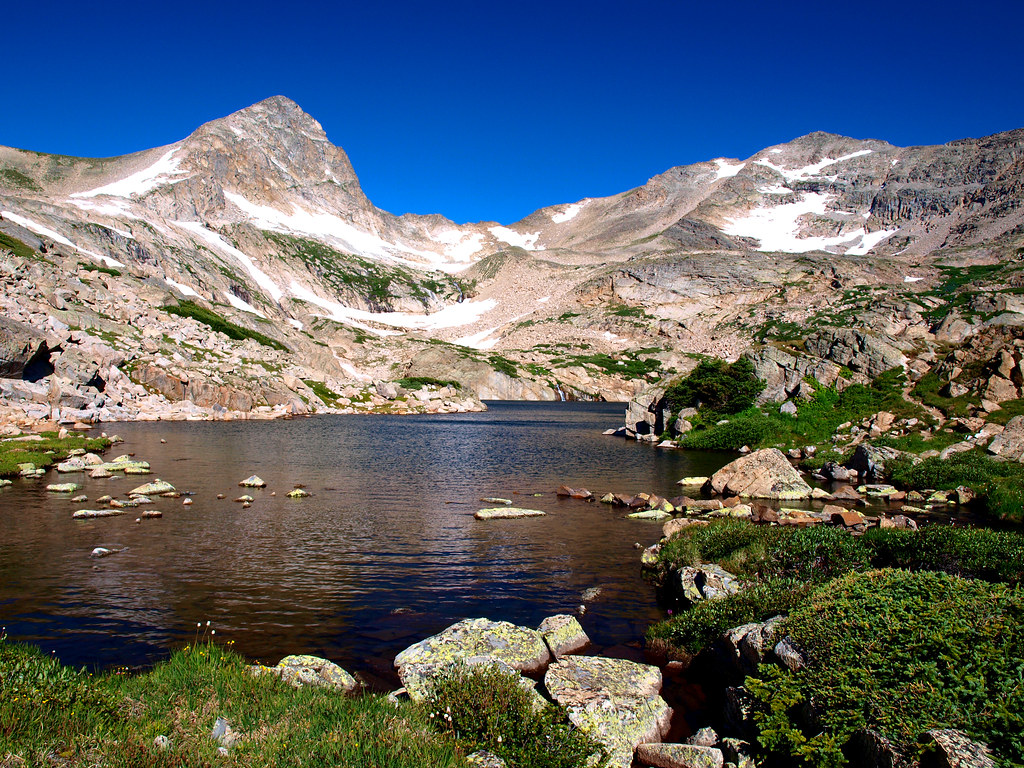
9. Conundrum Hot Spring
The Conundrum Hot Spring trail leads to a hot spring in a remote section of the Maroon Bells-Snowmass Wilderness area of the White River National Forest. The hot mineral water collects in craters as well as at several rock-lined soaking pools nearby.
You will want to take two days to hike this trail to get in all you want to see, including meadows, peaks, and evergreen forests. The trail is well-maintained and ends up at a grouping of clothing-optional pools overlooking Conundrum Peak Valley. You can set up camp at one of the many sites surrounding the springs.
- Elevation Change – 3,200 feet
- Distance – 17 miles
- Permit Required – yes, plus register at the trail
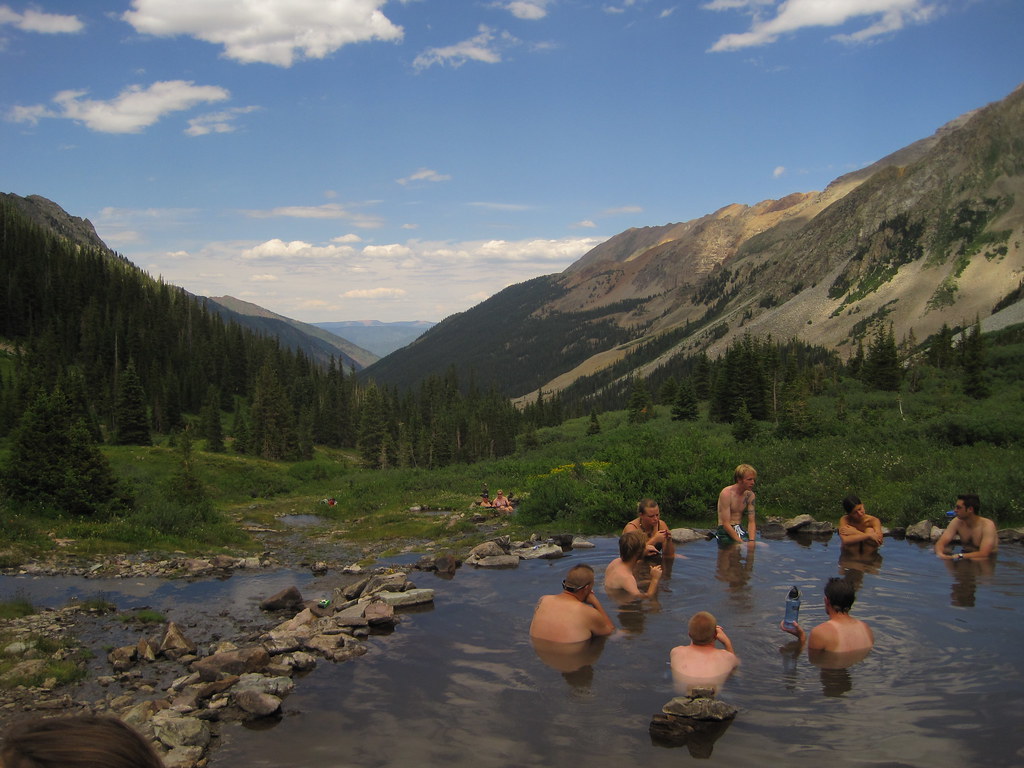
10. Maroon Bells Four Pass Loop
Once you feel confident in your abilities as a backpacker, you can attempt the Maroon Bells Four Pass Loop which circles Maroon Bells, climbing four 12,000 foot passes. This is one of the more difficult beginner backpacking trips in Colorado. You will see amazing scenery including wildflowers, nearby peaks, meadows, scenic forests, and alpine lakes. This hike is challenging for even those who are in good shape. It is recommended to complete the loop clockwise for a path that is slightly less steep. A bear-proof container for your provisions is required.
This hike begins from the Maroon Bells Scenic Area in Aspen Highlands. There is a special overnight parking area below Maroon Lake to start the hike where a permit is required. This is best done during summer and begins at 9,580 feet and peaks at 12,500 feet. Individuals need to self-register at the trailhead.
- Difficulty Level – expert
- Elevation Change – 8,000 feet
- Distance – 26.6 miles
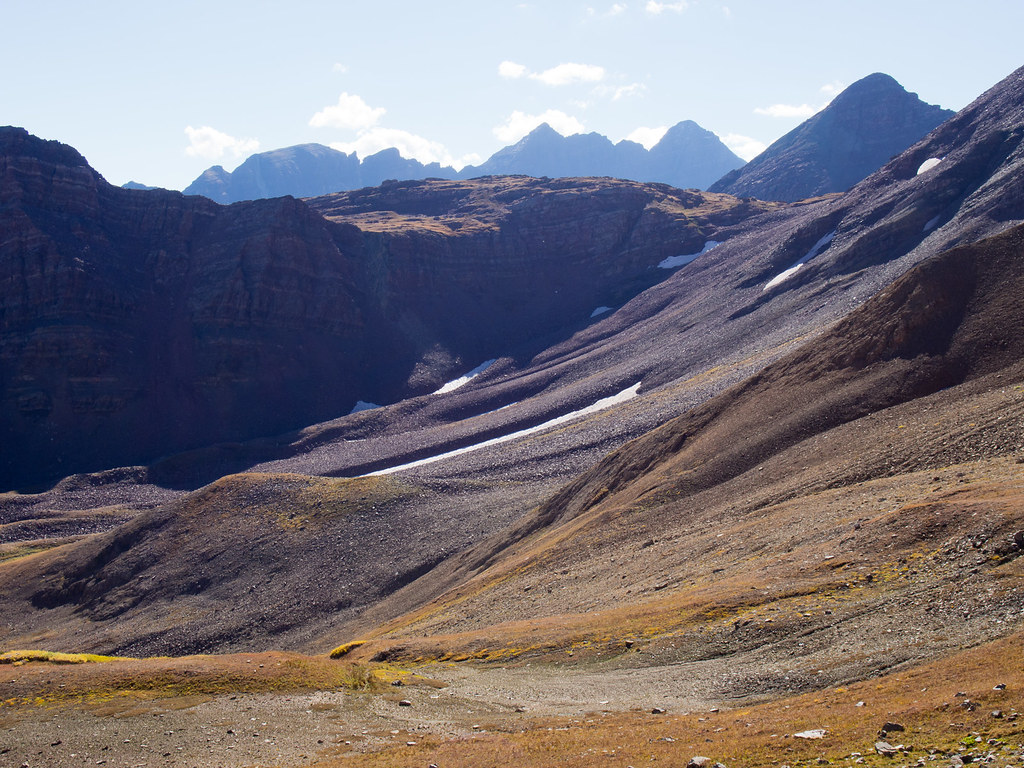
Final Thoughts about Beginner Backpacking Trips in Colorado
No matter your age or ability, we hope our list of the 10 Best Beginner Backpacking Trips in Colorado will help you find a trail that meets your hiking level and needs. There is something beautiful around every corner in Colorado so start planning your trip today !. Don’t be afraid to stretch yourself by doing some of the more difficult hikes, once you feel ready. You will get a great feeling of accomplishment when you complete a bucket list trip.
Related Reading:
11 best colorado bucket list things to do, the best rv camping in and near denver, colorado, the 8 best rv campgrounds in colorado, 10 best rv rentals in denver in 2021plus discount code, 8 best rv rentals in grand junction, co, can a bear get into an rv bear proof your camper, about the author…, terri nighswonger – author and full time rver.
Terri Nighswonger and her husband Todd have been RVing and work camping for six years with their Cavalier King Charles Spaniel, Newton, and their Minnie Australian Shepherd, Remi.
In Addition to the RVBlogger team, Terri has written for RV Life and RV Camping Magazine and is always excited to talk about her passion for RVing and her knowledge and experience in work camping.
Writing is Terri’s passion, but she also loves hiking, kayaking, walking her dogs, and anything she can do outdoors.
They originate from the Midwest but plan to enjoy the West for a few years, wintering in Arizona and summering wherever the road may lead.

Leave a Comment Cancel reply
Save my name, email, and website in this browser for the next time I comment.
You are using an outdated browser. Please upgrade your browser or activate Google Chrome Frame to improve your experience.

- Trip Styles
- Destinations
- Colorado Hikes & Tours

- USA Hiking Vacations
COLORADO HIKING & BACKPACKING Trips
Our hiking trips in Colorado offer exceptional trekking and backpacking adventures in stunning, diverse mountains
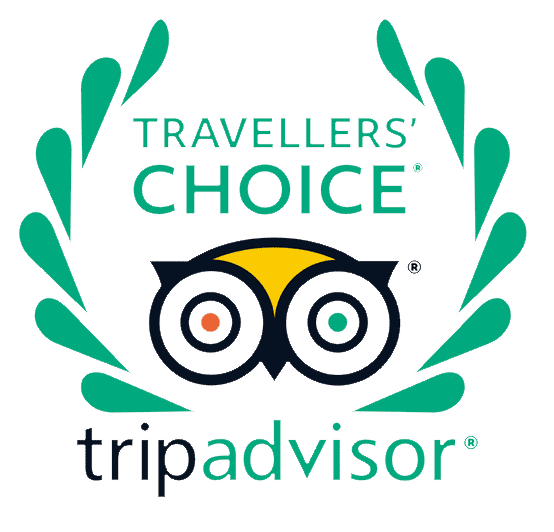
You don’t need to be an expert or own special equipment to go on one of our Colorado hiking trips. Wildland Trekking excursions are all-inclusive! You’ll hike with an expert guide, enjoy delicious food, use the best gear and stay in wonderful accommodations, whether you’re at an inn or a camp. When you book a trip with us, it’s a one-and-done deal. We’ll work out all the details, so you don’t have to. We offer a variety of trips that vary based on the destination, difficulty, length of time, cost and type. Choose a Colorado hiking trip for your next great adventure!
World-Class Hiking Destinations

Flat Tops Hiking Tours
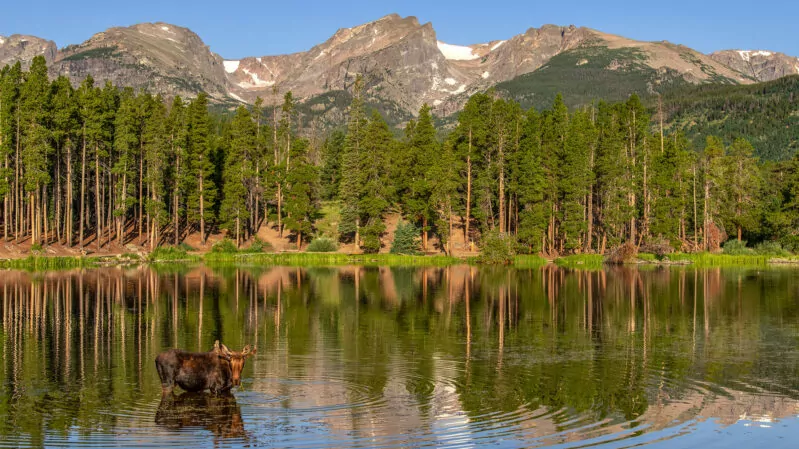
Rocky Mountain National Park Hiking Tours
All colorado hikes & tours trips ( 25 results), filter trips.
Trip Length
Alpine Peaks, Lakes and Waterfalls Thru Hike
Best of Rocky Mountain Tour
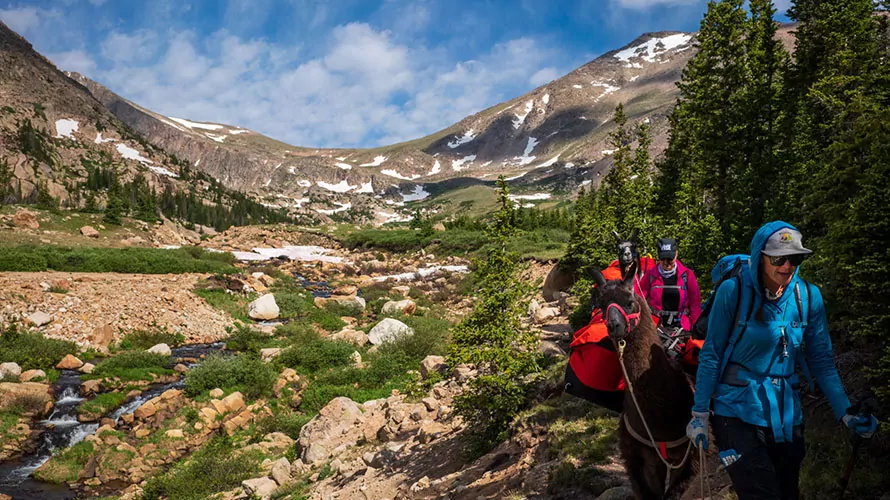
Mummy Mountain Llama Trek
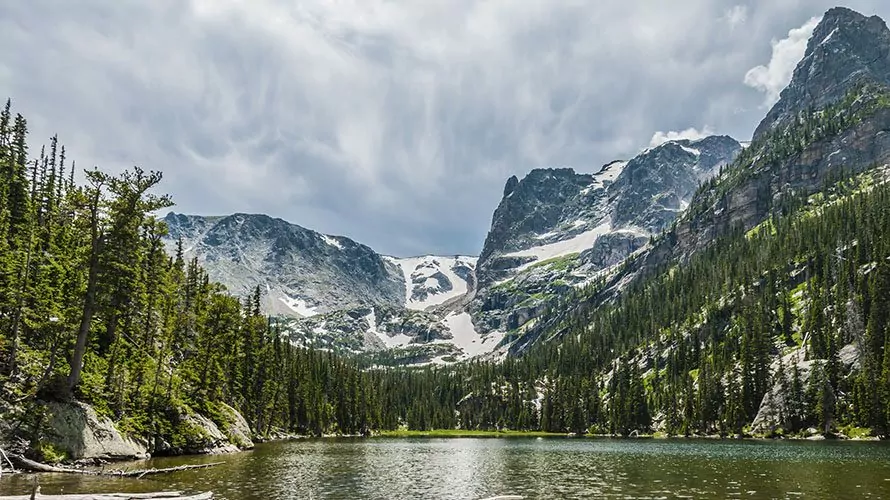
Across the Divide
Rocky Mountain Basecamp Tour
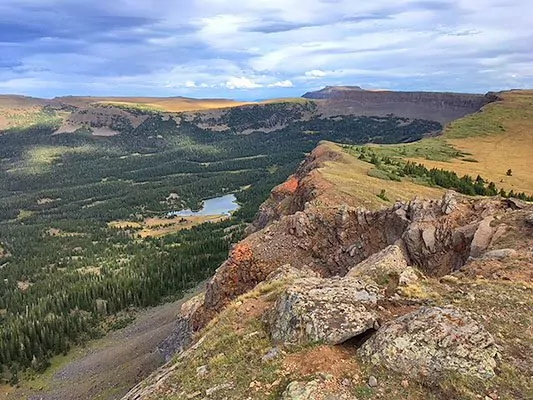
Chinese Wall Loop
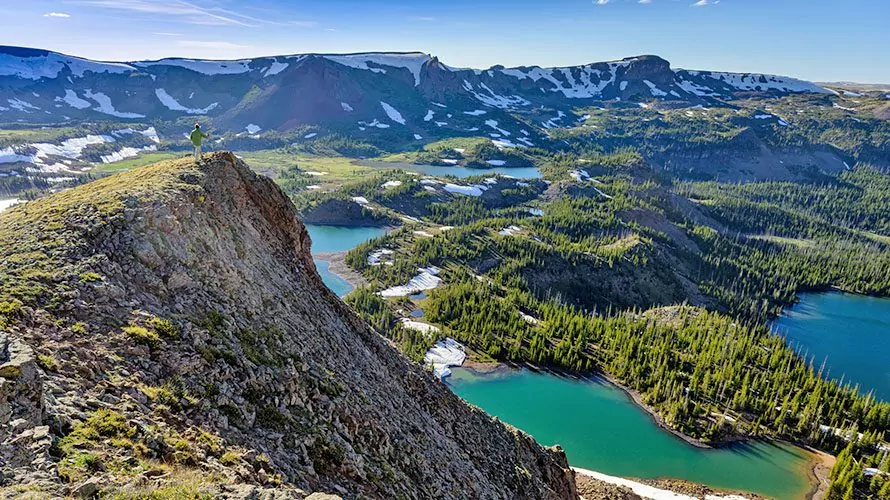
Flat Tops Explorer

Rocky Mountain Family Llama Adventure
Thunder Lake
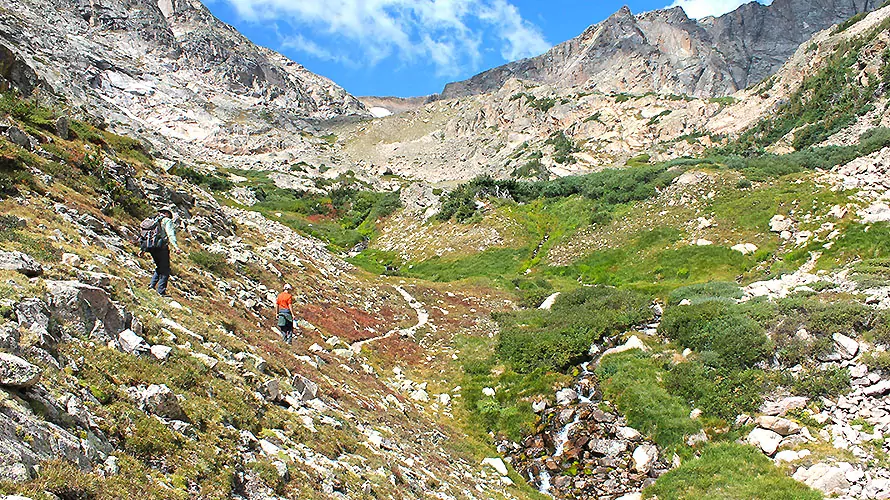
Thunder Lake Llama Adventure
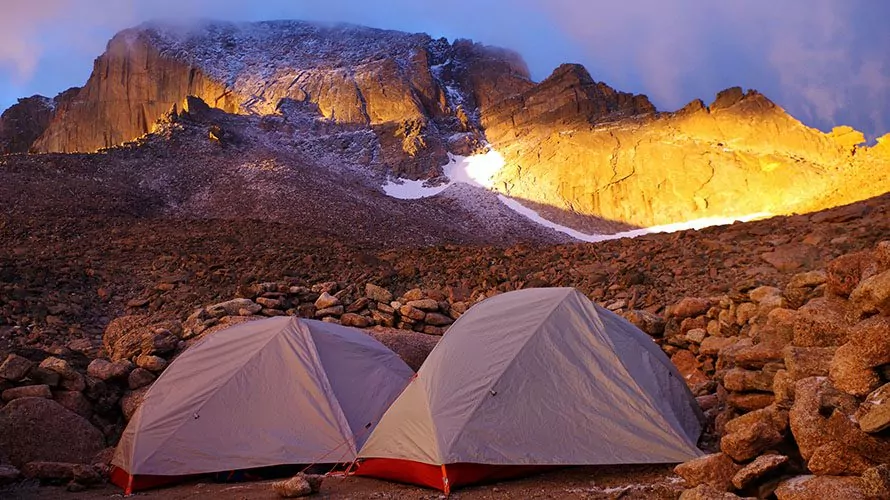
Longs Peak Loop
Wild Basin Explorer
More about colorado hiking vacations, guided backpacking & hiking trips in colorado.
Wildland Trekking offers trips in two Unique Colorado destinations:
- Rocky Mountain National Park : This national park is in many ways the heart of Colorado’s Rocky Mountains. On a hiking trip to this beautiful park, you can see wildlife, waterfalls, pristine rivers, lakes and creeks, sweeping views, snowy mountain peaks, glaciers and much more. During every moment of a hiking or backpacking trip in Rocky Mountain National Park, you will be captivated by the incredible landscapes around you.
- Flat Tops Wilderness : You’ll become familiar with this Colorado secret gem if you join one of our Flat Tops backpacking trips. This destination is home to more than 100 lakes, volcanic peaks, waterfalls and more.
Whichever destination you choose, you’ll have an unforgettable experience exploring the sweeping beauty of Colorado.
types of colorado hiking tours
At Wildland Trekking, we know everyone is a little different. To make sure we have a trip that anyone can enjoy, we offer a variety of different types of hikes and tours in Colorado. Here are some of the options you can choose from:
- Colorado Backpacking Trips : With so many beautiful trails and sites, you’ll feel like a part of the scenery during a backpacking trip. These trips are best for guests looking for a demanding, adventurous wilderness experience.
- Colorado Basecamp Hiking Tours : we have one basecamp tour in Colorado – our Rocky Mountain National Park Basecamp Tour. This trip combines a series of adventurous day hikes with comfortable frontcountry camping, fantastic outdoor cooking, and access to showers.
- Colorado Inn-Based Hiking Tours : Similar to the basecamp tour, these trips combine adventurous day hikes with accommodations and meals on a multi-day tour, except that these are based in lodges, hotels and inns instead of camping. Meals are a combination of restaurant/lodge meals and picnic meals prepared by your guide.
- Rocky Mountain Snowshoe Tours : Hiking isn’t just for warmer weather. Available only in Rocky Mountain National Park, you’ll see the park in a whole new light, covered in pristine snow! You can even take a snowshoe tour over several days or experience the fun during a day hike.
- Rocky Mountain National Park Day Hike Tours : Finally, we offer day hike tours in Rocky Mountain National Park. With several options ranging from easy to moderate hikes all the way up to a highly adventurous 1-day summit attempt of Longs Peak (12-14 hours), we have offerings for all skill and fitness levels. All of our day hike tours are private, so they are exclusively limited to your group and a guide.
When to Hike Colorado
The state of Colorado offers a diversity of hiking opportunities, from high in the Rocky Mountains to low down in the deserts of Western Colorado, near the Utah border. We are focusing this information on when to do trips that Wildland Trekking offers in Rocky Mountain National Park and the Flat Tops. Both of these areas are high up in the mountains, where the scenery that Colorado is most famous for is at its best.
The short answer of when to hike Colorado is “summer.” But it is more nuanced than that because the summer months each offer a different experience. And winter months offer snowshoeing and skiing opportunities that are magnificent. To help understand the nuances of when to visit, we have provided descriptions below of the primary hiking/snowshoeing months in Colorado:
- June marks the beginning of the summer hiking season in the Rocky Mountain State. It is great for hikes below treeline, but above treeline there can often be quite a bit of snow. Also, the creeks and rivers that drain the Rockies can be swollen in June, making river crossings more difficult. All in all, June is an excellent month to get your walking legs under you in Colorado.
- July is the first month of the year when the alpine snowpack is mostly gone, rivers and creeks are back to lower levels, all trails are open, and the hiking is at its peak. Think about alpine treks this time of year, hikes to the tops of 14ers like Longs Peak , and long wilderness hikes like our Alpine Peaks, Lakes and Waterfalls Thru-Hike .
- August is arguably the best month of the year to explore the Rockies on foot. Warm days and cool nights make for excellent hiking and sleeping, so a Rocky Mountain backpacking trip is a great option. Day hiking is also fantastic though. By mid August the crowds (especially on weekdays) are thinning out, most bugs are gone, and the mountains are at their prime.
- September is perhaps the most under-appreciated month for hiking the Rockies and for Colorado backpacking trips. The days are still warm, and the nights are getting cooler which can be lovely. Fewer people are in the mountains since schools are in full swing. By late September the elk can be “in the rut” and bugling, which is a joy to hear. Finally, also by late September, the Aspen are often beginning to show the first signs of fall colors.
- October is good for hiking through the first week or possibly into mid October. Days and nights are cool, the backcountry will be quite empty, and the Aspen will will be in their full autumn glory with yellows, reds and oranges exploding across the mountains.
- November-March , i.e. winter months in the mountains, are of course not good months for hiking. But they offer the joys of skiing and snowshoeing instead. The mountains in winter are quiet, peaceful and astonishingly beautiful with frozen lakes and creeks and active winter wildlife (never guaranteed of course.) We offer half-day, full-day and multi-day snowshoe tours in Rocky Mountain National Park .
I’ve Never Heard of the Flat Tops – Are They Worth It?
Yes! The Flat Tops Wilderness is a remote, off-the-beaten-path range in northwestern Colorado. The Flat Tops rise out of the lower country as a magnificent plateau with an abundance of alpine lakes, high ridges and summits above treeline, pristine creeks and wonderful mountain solitude. If you’re looking for a more unique experience with fewer people, the Flat Tops offer a wonderful opportunity.
Safety Considerations in Colorado
As mentioned above, our Colorado hiking and backpacking tours feature both backcountry trips (backpacking, portered and llama treks) and frontcountry trips (inn-based and basecamp tours.) The safety considerations will vary depending on which option you go with.
On backcountry trips the primary safety considerations are black bears , lightning storms when above treeline, and river crossings. Of these 3, lightning is the main one that also applies to frontcountry trips. We use bear cannisters to securely store food, and we keep very clean camps to avoid attracting bears into camp. We have never had a serious bear incident in Colorado. To avoid lightning storms, we leave camp early when we know we are going to be hiking above treeline. Thunderstorms often form in the afternoons, so the key is being up and over any high passes or plateau before the storms set in. And river crossings on our trips tend to be quite manageable; the main consideration is using your trekking poles effectively to avoid slipping on wet rocks. If needed, your guide can also ferry your backpack across the river so you can cross less encumbered.
wildland Wires
Sign up to receive our exclusive Wildland Wire emails and stay up to date with Wildland Trekking's promotions, discounts, contests, outdoor tips and tricks, trip reports and more!

IMAGES
VIDEO
COMMENTS
Explore Colorado with Like-Minded Enthusiasts. Book Your Next Backpacking Adventure with REI.
The Lost Creek Wilderness Loop is a 28.3-mile loop that circumnavigated the greater wilderness area. 2. Best Beginner Backpacking Route in Colorado in Fairplay. Buffalo Peaks Loop, located just south of Fairplay is an excellent high-alpine beginner backpacking loop.
Which backpacking trail has the most elevation gain in Colorado? Colorado: With an ascent of 86,866 ft, Colorado Trail (Full Route) has the most elevation gain of all of the backpacking trails in the area. The next highest ascent for backpacking trails is Colorado Trail: Denver to Salida with 44,124 ft of elevation gain.
Explore the best backpacking routes in Colorado, from the iconic Four Pass Loop to the remote Flat Tops Wilderness. Learn how to prepare, where to go, and what to expect from this guide by Outdoor Project.
Best backpacking trip near Breckenridge: Spruce Creek Trail to Mohawk Lakes. (Image credit: Eric Mauge) Distance: 8.4 miles Difficulty: Difficult. Spruce Creek Trail to Mohawk Lakes offers some of the best views of Colorado's high country with lots of great backcountry camping spots along the way.
Discover the best backpacking trips in Colorado for diverse and scenic landscapes, from high-altitude passes to remote wilderness treks. Learn about the weather, permits, wildlife, navigation, and more before you plan your trip.
About this Best Backpacking Trips in Colorado List. Great Sand Dunes National Park. Hessie Trail to Lost Lake *The Only Easy Hike*. South Boulder Creek Trail to Crater Lakes Trail. Island Lake and Ice Lake via Ice Lakes Trail. Caribou Lake via Arapaho Pass. Spruce Creek Trail to Mohawk Lakes. Mount Zirkel Loop Trail.
The average through hike time for the whole shebang is 6 months at 17 miles per day. 740 of those miles of CDT are available in central Colorado. It's highest point in the trail is Grays Peak in CO at 14,270 feet. Waterton Lake in Montana is its lowest point at 4,200 feet. More than 1,000 summits in Colorado top 10,000 feet on the CTD, making ...
The Chicago Basin is one of the most sought after backpacking trips in Colorado. Many backpackers choose to take the train from Durango to the Needleton stop (30 miles north of Durango). This train is a stunningly beautiful ride, and takes a round trip hike into Chicago Basin from 32 miles down to 15.2 miles round trip.
Length: 9 miles. Elevation Gain: 1,952 feet. Trail Type: Out and back. Difficulty: Hard. This challenging hike in the James Peak Wilderness offers sweeping views from Boulder to Winter Park. South Boulder Creek Trail steadily climbs along the stream of the same name en route to the base of Haystack Mountain.
This Colorado backpacking trip is true to its name - it skirts over four high-elevation passes in 27 miles in the striking Maroon Bells Wilderness and Elk Mountains. This trail is a favorite among Colorado residents and is typically done as a three to four-day backpacking trip but can be completed in one day as a challenging trail run. This ...
This beginner-friendly backpacking trip is the perfect introduction to Colorado, and a great option for families looking to take their kids into the wilderness on an unforgettable adventure. Hike to Wild Basin with a Guide. 2. Crested Butte to Aspen via West Maroon Pass.
Colorado Trail (Segment 7) - Best for Those Searching for 1 Night Backpacking Trips in Colorado. 3. Maroon Bells Four Pass Loop - One of Colorado's Most Popular Summer Time Backpacking Loops. 4. Lost Creek Wilderness Loop - An Excellent Weekend Backpacking Trip in Colorado with Unique Views and Terrain. 5.
photo by Caleb Jack. Colorado Trail. Length: 500 miles (804.67 km) from Denver to Durango. Difficulty Level: Difficult, requiring multi-day hikes across rocky terrain with steep ups and downs. 👉 The Colorado Trail is one of the state's most iconic backpacking trails and it offers an incredible range of outdoors experiences. Spanning nearly 500 miles from Denver to Durango, it passes ...
Top backpacking trails in Colorado: Maroon Bells-Snowmass Wilderness, Indian Peaks Wilderness, and Colorado Trail. Online resources to find detailed trail information. Duration and Difficulty Level of the Trip. Determining the length of your backpacking trip based on available time and fitness level.
Across the Divide. Location: Colorado Hikes & Tours. Area: Rocky Mountain National Park Hiking Tours. Trip type: Guided Backpacking Trip. Difficulty: Highlights: Cross the Continental Divide, Tremendous Mountain Views, Glacial-carved Valleys …. 3-4 Days. from $1240.
On your guided trip you will learn how to backpack into the Colorado wilderness, stay overnight and return with confidence. All trips include a drink & cheese meet-and-greet a few days ahead of time, including a gear review of your essential backpacking equipment.
For the best places to backpack in Colorado, check out these areas: Rocky Mountain National Park. Lone Eagle Peak in the Indian Peaks Wilderness. The Maroon Bells - Snowmass Wilderness. Colorado National Monument and surrounding areas. South Colony Lakes and the Sangre de Cristo Mountains.
Hiking in Colorado runs the gamut between dayhikes and epic-length backpacking trips. Mount Elbert (14,433 feet) is the highest peak in the state, and is one of 54 peaks above 14,000 feet, which many call "Fourteeners," all of which are popular destinations for hiking in Colorado. Backpackers often flock to the Continental Divide Trail, one ...
Award-winning Colorado Hiking Tours: Longs Peak Loop backpacking trip! All-inclusive trips, expert guides, Top-rated hiking company on Trip Advisor! 800-715-HIKE (4453) (9-4:30 Every Day) Top Rated On ; ... This is an exciting aspect of being in Colorado's high country. On trips in June, snow is a slight possibility, and the rest of the ...
Guided Colorado backpacking trips are available, and are a stress-free, exciting way to explore the amazing Colorado Rockies. The guide company handles permits, gear, transportation, meals, and provides a professional guide so you can focus 100% on enjoying your adventure.
Mount Cutler - 7,232′ Cliff-lined Mount Cutler looms over North Cheyenne Cañon on the southwest edge of Colorado Springs. (Photo: Stewart M. Green) Location: North Cheyenne Cañon Park Distance & Elevation Gain to Summit: 2 miles and 491 feet of elevation Difficulty: Easy. From the Mount Cutler Trailhead (6,741′), located 1.4 miles past Starsmore Visitor and Nature Center on North ...
This is one of the most popular sites in Colorado for backpacking, hiking, and camping. It is a moderately tricky 5.78-mile hiking-only trail located in North Cheyenne Cañon. A mighty stream following the path will surely catch your attention. The best time for backpacking here is March to November or in the spring and summer seasons.
Once you feel confident in your abilities as a backpacker, you can attempt the Maroon Bells Four Pass Loop which circles Maroon Bells, climbing four 12,000 foot passes. This is one of the more difficult beginner backpacking trips in Colorado. You will see amazing scenery including wildflowers, nearby peaks, meadows, scenic forests, and alpine ...
We operate Colorado backpacking trips, llama treks, inn-based Colorado hiking tours, basecamp tours, and day hike tours in Rocky Mountain National Park, and backpacking trips in the amazing Flat Tops Wilderness. You don't need to be an expert or own special equipment to go on one of our Colorado hiking trips.